Advertisement

The Four Different Meanings of 'Berth' On A Cruise Ship
- Share Content on Facebook
- Share Content via Email
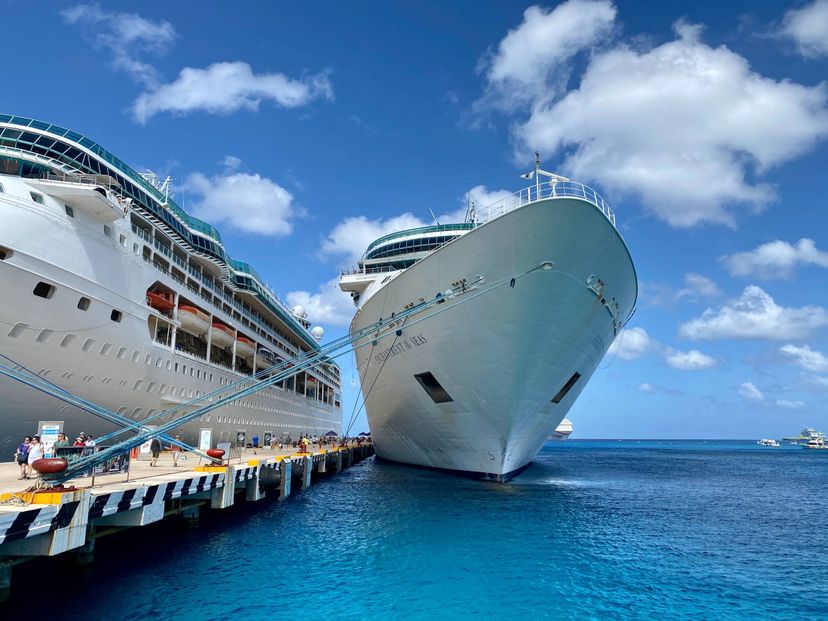
The nautical term ‘berth’ is one of those words that have quite many different meanings, which is why it is often met with a lot of confusion.
When on a cruise ship, berth has four different meanings , which are basically nouns that have to do with commercial marine ships as well as cruise ships.
If you look at the etymology of this word, you will find that its origin is actually quite obscure. However, experts have found that it quite possibly originated from Middle English.
First Meaning – The Space One Ship Gives to Another
Ever came across the phrase, ‘one ship is giving another a wide berth’ or something along the lines of it?
Berth here refers to the space that one ship gives to another ship. In other words, one ship is trying to avoid crossing paths or getting in the way of another ship so that the latter has enough space to maneuver easily.
This is primarily done for ease as well as safety. While this might popularly be a nautical term, it is often featured in the English Language and can be used for a place, a person, or a thing that needs to be avoided.
Second Meaning – A Place to Sleep
When talking about a cruise ship, berth also refers to a pull-down bed or a shelf-like structure imitating a bed on the ship. So, in this case, berth refers to sleeping space or a place to sleep on a ship.
They are basically built-in beds that have been designed really small so that they can easily fit inside tiny cabins on sailboats, for instance.
However, the meaning of ‘berth’ varies depending on the type of ship that’s being talked about. So, the initial meaning referred to built-in bunks or shelves, it is now also used to refer to king-sized, queen, double or single beds as well.
Third Meaning – Job On A Ship
The third meaning of berth refers to a job on a ship, but this definition applies more to marine merchant ships and not cruise ships. This is because when you talk about a cruise ship, the term has more to do with the number of beds or berths that are present on a ship since every person on the ship does need a berth (bed).
So, in other words, you could say that the number of jobs could equal the number of beds, in which case, both the bed and job mean ‘berths.’
Fourth Meaning – Pier or Dock
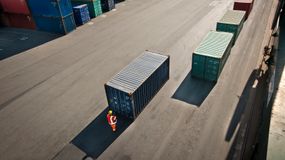
The most common meaning of the word ‘berth’ is a pier or dock, which is the point where a ship ties up. Take car parking, for instance. Every car has a parking spot, so the berth of a ship is the place where it is parked.
There are also times when authorities assign a berth to a ship, which is simply that ship’s allocated parking space.
These are the four different meanings of ‘Berth,’ so the next time you hear this word being used in reference of a cruise ship, you’ll know exactly what it means!
Please copy/paste the following text to properly cite this HowStuffWorks.com article:
- Outdoor Activities
- Destinations
- Book Hotels, Flights & Cars
- Advertise With Us
- Cookie Settings
Copyright © 2024 MapQuest Holdings LLC, a System1 Company

Speak to a travel consultant
- Chatbot Tips
- Destinations
- FAMILY CRUISES
- LUXURY CRUISES
- THEME CRUISES
- CULTURE SEEKERS
- ADVENTURE LOVERS
- NEXT-GEN CRUISERS
- NEW TO CRUISING
- MONEY-SAVING TIPS
You can see the best matches instantly in your custom results."> How our Bliss Filters work
Your custom results ({[{ results.meta.total }]}) Return to previous page
Courtesy of Royal Caribbean International
A virtual balcony in an inside stateroom on Navigator of the Seas.
Glossary of cruise lingo
A guide to help you navigate the jargon of the cruising world.
Cruiseable team
On a cruise ship
CruiseClout score: 95.0
Unless you're a cruise veteran, chances are you've come across the occasional term on a cruise or travel website that makes you wonder, Huh? What the heck does that mean?
The cruise landscape is riddled with insidery terms and strange lingo — but don’t feel intimidated! Here’s a quick guide to some of the terms you may encounter.
Come across a term that’s making you cross-eyed? Tell us and we’ll define it, add it to the list and credit you.
Get a handle on cruise terms
Cruiseable team The Cruiseable editorial team consists of award-winning travel writers, cruise bloggers and journalists.
Related reviews & articles
How to find a cruise ship size that's right for you.
What to expect from your first cruise
10 cruise tips every beginner should know, what is there to do on a cruise ship, being a respectful cruise passenger.
5 tips on how to make the most of your time on a cruise
Tips for the first day of your cruise, 10 reasons why a travel advisor can get you a better travel deal.
10 tips to make your first cruise go super smooth
What you can do in port during a cruise.
15 tips for first-time cruisers
How to prepare for your first cruise
6 reasons why a cruise beats out a land vacation, are you and cruising a good fit, what is there to do at night on a cruise, what embarkation day is like, why cruising should be your next vacation choice, 5 tips for surviving your first cruise, shooting down 3 myths about cruises.
12 reasons a cruise is a healthy vacation choice
Q&A for first-time cruisers
5 more cruise vacation myths
5 tips on scoring a great deal during wave season
5 cruise myths busted
What kind of people go on a cruise, 5 tips to help first-timers plan a great cruise, walter's 10 inside tips for first-time cruisers.
10 novice cruiser mistakes to avoid
10 essential items to remember before your cruise, pros & cons of small vs. large ship cruising, 10 ways to find your bliss on a cruise, guide to passengers you'll find on each cruise line, cruise line partners.
- Carnival Cruise Line
- Celebrity Cruises
- Costa Cruises
- Disney Cruise Line
- Holland America
- MSC Cruises
- Princess Cruises
- Royal Caribbean
- Crystal Cruises
- Regent Seven Seas
- Ritz-Carlton Yacht Collection
- Azamara Club Cruises
- Cunard Line
- Oceania Cruises
- Paul Gauguin Cruises
- Ponant Cruises
- SeaDream Yacht Club
- Star Clippers
- Viking Ocean
- Virgin Voyages
- Windstar Cruises
- AmaWaterways
- American Cruise Lines
- Avalon Waterways
- Tauck River Cruises
- Viking River
- G Adventures
- Hurtigruten
- Lindblad Expeditions
- Un-Cruise Adventures

Cruise Lines International Association Member #00454845 | Agile Travel Group dba Cruiseable
- How Cruiseable works
- Cruise glossary
- Community guidelines
- Upload or share
- Cruise ambassadors
- Cruise price drop alert
- Media center
- Contributions

Ethics Terms of Service Privacy Policy
Hot Topic: Surprise Cruise Reveal Ideas
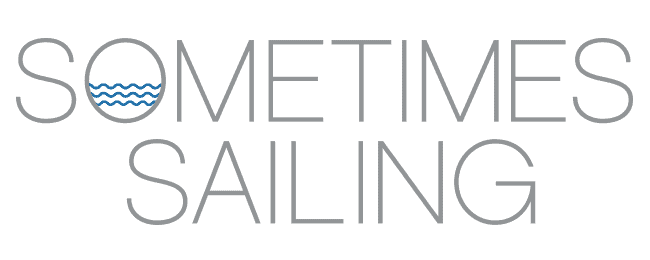
Essential Guide to Over 110 Cruise Ship Terms (and Commonly Used Nautical and Boating Jargon)
Boating seems like another world sometimes and we want to help with providing you with an essential guide to over 110 cruise ship terms and commonly used boating jargon.
This is most helpful if it’s your first time at sea or you haven’t been in a while and need a refresher.
There’s a million terms we won’t get into here. It would become unnecessarily technical and too long of a post!
For purposes of our cruise ship terms and nautical jargon list we have kept it to guests level terms on ships, not to complicated terms that get into the weeds for ship crew.
Whether you’re on a sailboat and hear someone ask you to help with the lines on the jib (huh?) or you hear a cruise announcement regarding embarkation, we know you’ll want to be educated about terminology!
Disclosure: There are affiliate links in this post, which means we may earn a small commission if you click the link and proceed with a purchase, at no cost to you . We truly only recommend hotels, products, and services we personally use. As Amazon Associates, we earn from qualifying purchases.

Table of Contents
Cruise Ship Specific Terminology
These are the terms that are specific to the cruising industry, including yachting, barge cruises, river cruises and ocean cruises.
Sailaway Party
A fun event on a cruise ship (most often ocean liners) to celebrate leaving a cruise terminal or port of embarkation. It’s usually on the lido deck or in the ship’s atrium if weather in unfavorable. It is also often the first official event on a cruise.
Sister ship
This refers to ships that have the same blueprint as one another, yet the interiors may different for a little individualism between the two.
Solo supplement
Referred to in rates of booking. Some ships/cruises charge a fee for a solo booking because it means they’re unable to make money on a second guest in the room. We know, this sucks! However, it’s also why it’s a perk for cruise lines that do not charge a solo supplement and/or have solo stateroom options onboard.
Double-occupancy
This simply indicates two people, as in two people in a stateroom on a cruise ship. It most often refers to cruise pricing.
This is an incredibly helpful “map” of the ship. Imagine if you sliced a cruise ship floor by floor, looked at it from an aerial view (like an architectural floor plan of a house) and indicated what was where. That’s a deck plan.
If you’re on a huge ship it’s imperative to use a deck plan to help you navigate your temporary vacation “home.” You can literally get lost on an ocean liner! The good news is there are usually deck plans posted on a ship in several places. (And available on the cruise ship app if you have it downloaded on your phone…and have your phone with you.)
Any crew you run into can usually help you navigate the hallways and decks of the ship too.
The word “lido” came from the Italian word for beach. So the Lido Deck cruise ship term refers to the deck onboard with the pool and bars. This deck is usually where a lot of the pool programming happens, a sail away party, etc. It’s one of the top-most decks of a cruise ship.
This perhaps evokes thoughts of old-timey cruising, like in the 80s and early 90s. Maybe a la The Love Boat . But it’s still a term used today. So what is it?
Stack (or Funnel)
The cruise ship term of a stack, or funnel, refers to the functional round structure where the exhaust from the engine room escapes. Kind of like a chimney on a home when a fireplace was in use.
Often times if a ship has two stacks these days one is functional while the other is for aesthetics, housing something like a lounge inside. (Such is the case on Disney Cruise Line ships, which we personally enjoy as adults-only cruisers.)
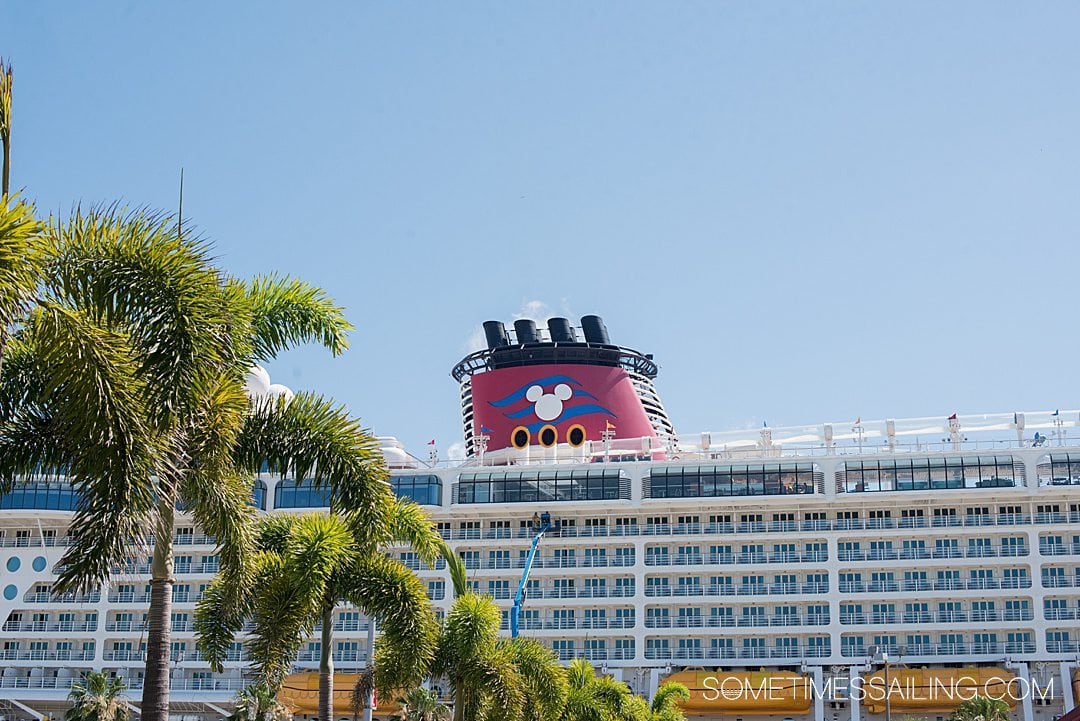
The main lobby area of a ship that usually spans at least two stories or levels. It’s usually where you first step onto a ship upon initial entry from your cruise terminal – that’s because, more often than not, it’s an impressive sight.
It’s almost like the main hub of a ship, architecturally speaking, where you can proceed to the ship’s restaurants, clubs, shopping, and the like from.
There’s very often a grand staircase in a ship’s atrium and it’s a prime photo spot. If you want to wow your friends with impressive vacation photos from a cruise the atrium is a good place to do that.
Muster drill (or safety/lifeboat drill)
By law, all ships must have a muster drill within 24 hours of departure. Muster stations are where guests meet in case of an emergency. (Including letting guests know where life jackets are located.)
Cruise ship schedule of a ship. It’s known as you book of course but the course may change during your sailing if there is inclement weather the captain needs to avoid, for instance.
All aboard time
The time all passengers need to be back on a ship before it leaves port. It is usually posted in a daily bulletin or newsletter or announced by the Cruise Director before they open the gangway for guests to disembark from the ship for the day.
And they will leave on time so don’t be late!
Daily bulletin, newsletter or “navigator”
This may be distributed everyday of your sailing. Nowadays, a daily schedule of activities and goings on are usually available on the cruise line’s app, if they have one.
Don’t forget to download these helpful cruise apps before your sailing, by the way.
Onboard (or shipboard) credit
A credit applied to your stateroom bill for use on the ship.
Sometimes it’s because of an incentive to book the cruise. For instance, a cruise line will offer a $250 onboard credit if you book by a certain time.
The onboard credits are great to use on things like cocktails or spa treatments.
It’s probably known that this is another cruise ship term for “tips,” just like “gratuities” means on land. But it’s important to know if they’re included or an extra cost when you book your cruise.
All-inclusive cruise
These cruises are great if you to lower the variables while budgeting for a cruise. All-inclusive cruises are popular in river cruising, where your entire vacation is bundled up.
The definition of “all-inclusive” varies with each cruise line. Sometimes it includes everything, from gratuities, to your stateroom, to airfare, to premium spirits, and butler service. While it may only include your excursions, your stateroom and beer and wine with another cruise line.
The best advice for an all-inclusive rate is to ask exactly what’s included.
Category (or cabin type)
This cruise ship term is in reference to the stateroom type you’re booking. For instance, you may book a Category 7 cabin (or stateroom) on a cruise that corresponds to any outside option. Or a Category 8 that’s an inside cabin.
There can be many categories for cruise lines, even from 3 to 20. Usually (but not always, especially if the cruise line is running a special) the more desirable the category, the higher the price tag.
These are small, portable electronic devices with an attached headset (like earphones) that are mostly river cruise specific.
You’ll need to take your Quietvox with you for all tours included with your cruise because it’s how the guides conduct tours on land. They’re great – it brings their voices directly into your ears without them having to yell over a crowd and deal with other elements – be it weather or tourists – around you.
You bring your Quietvox into your stateroom each day to recharge it. The best thing to do is to place it directly back on the charger after a tour instead of laying it down on your dresser.
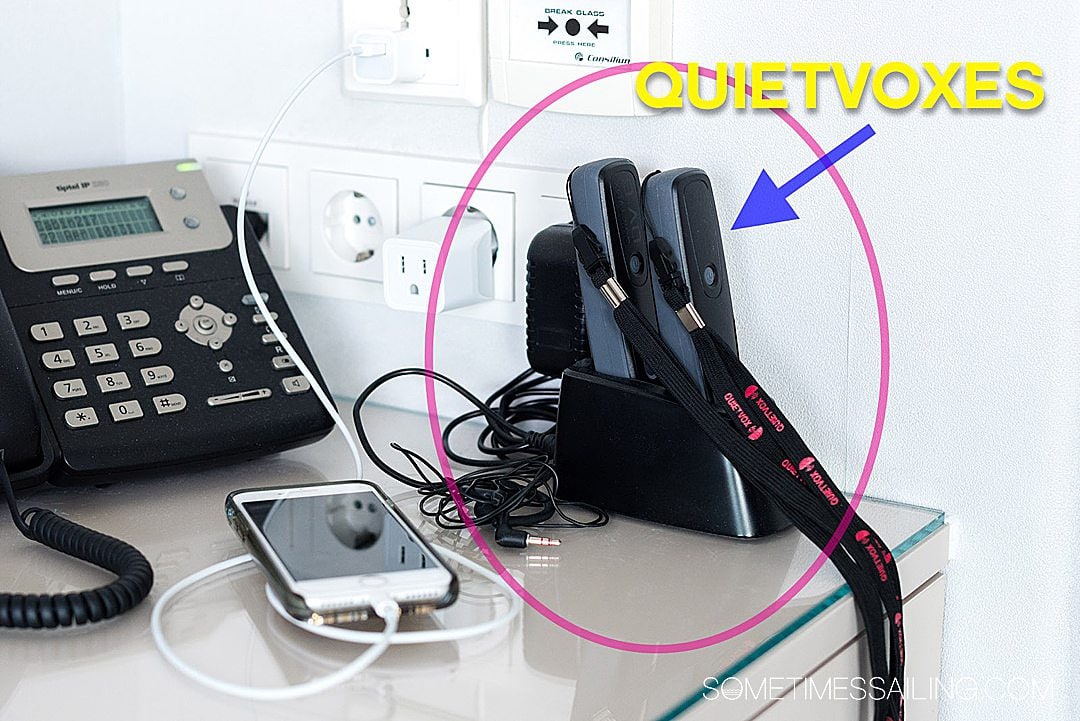
Cruise card (or key card, or ship ID card)
It’s not just a key to open your cabin door. But also acts as a hotel key would, for room charges and, more importantly, checking you in and out of the ship while in port.
The ship needs to keep track of who is onboard or off and this is the way they do it. (Without micro-chipping you or adding a GPS tracker on your person, haha!)
Tax-free shopping. You often have to declare these items you purchased while shopping abroad once you return to your cruise terminal or port of debarkation in the United States.
You can save a lot of money on high-priced items while shopping abroad, including on things like jewelry and expensive clothing.
Ocean liner
Ships that sail the ocean. They’re too big to fit on rivers, which is why there are specifically river cruise ships.
The entire portfolio of ships a cruise line owns. For example, Scenic Luxury Cruises has 16 ships in its fleet .
Christening
A cruise ship christening is a grand celebration. Launching a new cruise ship is a big deal! It usually entails media, galas, and sometimes fireworks. A fun aspect of a ship christening usually involves a ceremonial breaking of a bottle of champagne over the bow of a ship.
Godmother (or godfather)
This is generally a spokesperson chosen by a cruise line for media purposes, and to bestow good luck on a new ship. (The godmother or godfather ceremoniously christens the ship in many cases.)
If it’s a female it’s a godmother or if it’s a male it’s a godfather . It’s worth noting two things: 1) It’s not always a famous person, 2) It’s usually a female. (But not always.)
Here are some fun godmothers of cruise ships out there:
- Dame Helen Mirren is the godmother of the Scenic Eclipse passenger ship, launched in August 2019.
- Elizabeth Gilbert, famed author of Eat Pray Love and Big Magic, is the godmother of Avalon Waterways ship, Avalon Envision, in April 2019.
- Well known travel show personality, Samantha Brown, is the godmother of the AmaWaterways ship, the AmaMagna , launched in May 2019. (Pictured below.)
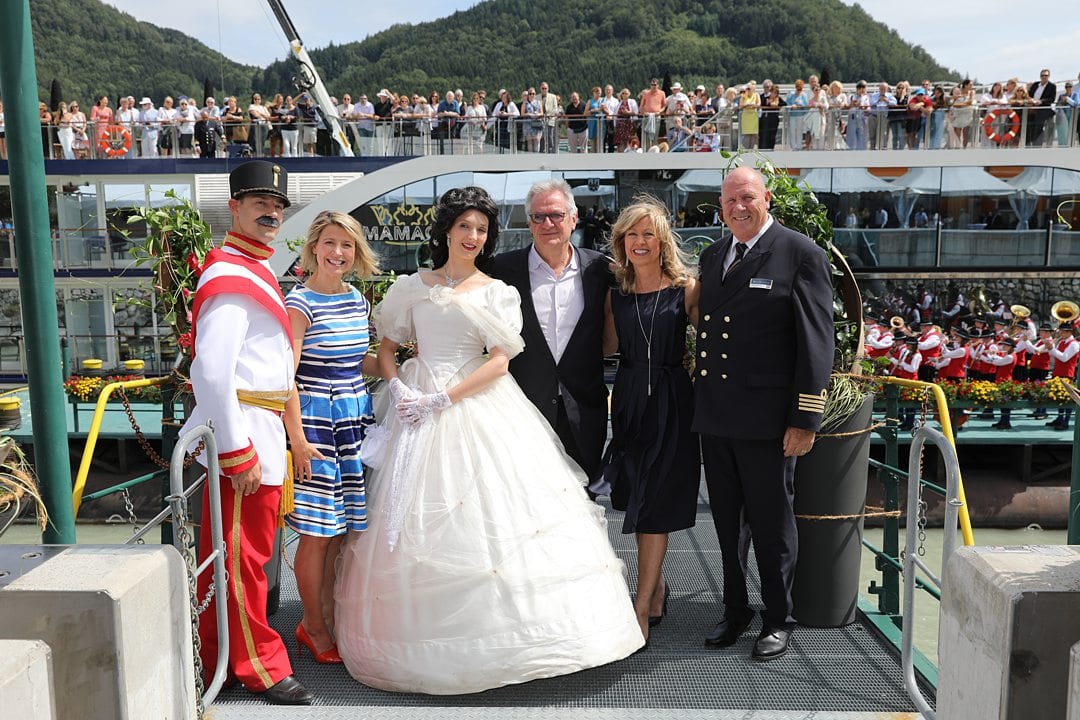
Charter (as in chartering a yacht)
When passengers book a ship for a dedicated sailing, like when a family charters a yacht or group of friends charter a sailboat for a sunset cruise. You can also charter a barge cruise. (We suppose you could charter any boat if you had enough money!)
Themed cruise
Often times a cruise line will create an itinerary with a specific interest in mind. This is great marketing as it’s trying to reach a target audience with proven interest in the subject.
Examples are a WWII history river cruise through Normandy, France or a wine cruise through the Burgundy region.
Windstar offers a Rome and Grand Prix of Monaco themed sailing , perfect for a Formula One racing enthusiast. It includes access to private events, a special Formula One guest speaker onboard to give a behind-the-scenes look at the race and even a visit to the pit afterwards.
Types of cruises
Canal cruise.
Refers to something like a barge cruise or river cruise depending on who is saying it and how it’s used. (Unless it refers to something like the Panama Canal, a place larger ocean liners can sail through.)
Barge cruise
These are usually the smallest size cruise you can sign up for. They’re usually anywhere from 6 to 12 people. It’s like a floating hotel that can go on very small waterways, even the Seine River that passes Notre Dame and Ile de la Cite in Paris .
Expedition cruise
Feeling adventurous? An expedition cruise could be the remedy.
Expedition cruise lines, like Uncruise and Quark Expeditions, set out to quench your thirst for adventure, even if only for a limited time aboard their ships and experiencing their excursions.
You’ll very often hear Alaska or Antarctica sailings referred to as “expedition cruises.”. Usually, there’s a strong emphasis on the journey of the ships and their itineraries including what ports of call they go to and the excursions you can take part in once there.
River cruise
We absolutely love river cruising! Whether you’re on a river cruise in America (like on the Mississippi, Columbia or Snake Rivers), or a European River Cruise (like on the Danube River , Douro or Rhine Rivers), these small cruise ships are built to navigate the calm waters of rivers.
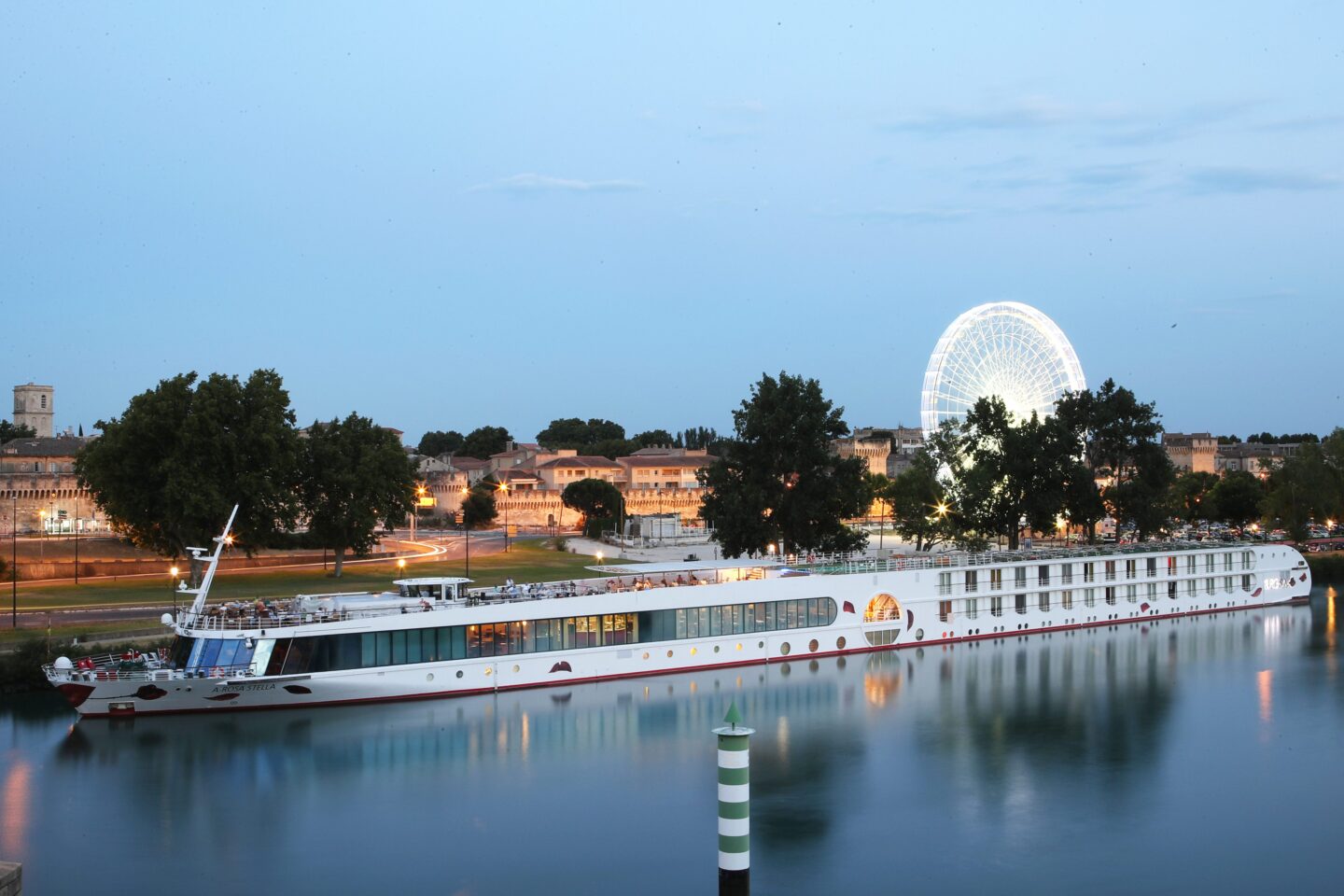
A cruise that you’re on for a few hours without staying overnight. This isn’t typical of river or ocean cruises unless the media or press is getting a tour.
Rather, we’re referring to things like a boating excursion or fun catamaran tour for the day.
Cruise Ship Dining Terminology
Maitre d’hotel (maitre d’, for short).
The person in charge of a cruise ship’s restaurant, including the waitstaff.
Literally translated from French to English, “maitre” means master.
Assigned seating
When you’re assigned a table for cruise ship dining. Often times it’s dinner-specific as you have open dining for breakfast and lunch during your cruise.
It’s likely you’ll be seated with another group or additional couples if you’re only a small party, like a party of two.
Open seating (or open dining)
The opposite of assigned seating. Open seating allows you to choose where you sit in a restaurant or dining room.
First seating or second seating
On larger cruise ships that need to do dining in shifts due to the amount of restaurants and passengers they have, you can opt for the first or second seating.
The first seating is of course earlier in the evening around 6:00pm or 7:00pm. (It’s perfect for people who go to bed early and/or have children.) and the second seating is later, usually around 8:00pm or 9:00pm.
Captain’s table
When you’re invited to dine with the captain. It’s an honor – you should accept!
Boating Jargon for a Ship’s “Anatomy” (and Related Terms)
The left side of a ship.
Here’s how we remember if port or starboard is left or right: P comes before S, just like in English we read left to right. Left comes before right, P comes before S. Port = Left, Starboard = Right
We also use this handy trick: Port = 4 letters, just like “left.”
Right side of a ship (how we remember if port or starboard is left or right? Read all about Port vs Starboard here !)
The rearmost part of a boat, inside.
The rearmost part of a boat, outside.
The middle of a ship.
Front of a boat.
Overall length
The length of a ship from end to end, stern to bow.
Waterline length
The length of a ship that is actually sitting in the water.
Stateroom (or cabin)
Your room onboard a ship (used interchangeably with “cabin”).
Inside stateroom (or cabin)
Room that is in the interior of a deck plan, meaning there isn’t a porthole (or window) in the room to the outside.
Outside stateroom (or cabin)
Outside room on a ship’s deck plan. Kind of like a room on the perimeter. They usually have at least a porthole so you can see the water, if not a balcony. (You know if there’s a balcony or not know when you book your stateroom or cruise category.)
Obstructed view stateroom (or cabin)
You may have an outside cabin on a cruise ship, but beware if it says “obstructed.” They usually cost less than balcony room or unobstructed views (for obvious reasons).
The obstruction could be something like equipment on the exterior of the ship or simply an obstruction in the porthole due to the architecture of how the room had to be designed in that area of the deck plan.
Fancy lingo for “balcony!” A stateroom with a balcony may be called a “veranda stateroom.”
French balcony
An balcony on the interior of an outside stateroom, that is usually either retrofitted on older cruise ships or added to lower category staterooms. It’s a balcony that’s inside the room yet a panoramic wall-to-wall window open (like is the case with a panorama room on Emerald Waterways) to create a balcony.
This is a wonderful design solution for river cruise ships, especially, who have strict limitations on their ship widths.
Virtual balcony
Technical innovation is really amazing! Virtual balconies were created to give inside staterooms the view of a balcony room on the outside of the ship.
Floor-to-ceiling and wall-to-wall screens are used for the effect. They usually have a real-time view of what the outside staterooms with balconies can view. And they often have curtains on either side of the screen that you can open and close.
Virtual porthole
Like a virtual balcony, virtual portholes are added to inside staterooms to give the room the “feel” of a window (or porthole) without actually having access to such a view.
This is mostly a term on a ship like a sailboat, not necessarily a cruise ship. But it’s a synonym for bathroom.
Another word for a bed on a ship. (Or another term for the slip where a boat pulls in to dock, as in “berthing.”)
The area of the ship where you steer the boat.
The part of the boat that makes sure you’re actually floating and have a shell, if you will, to float! Being watertight is a must since it’s what is physically in the water.
Ship jargon for a window on a ship. They’re usually circular.
Granted this one’s obvious but we like to think of good ‘ole sailboat steering wheels when we think of the wheel of a ship like our adventure with Maine Windjammer on Schooner American Eagle . And a captain, feeling home at sea, steering the ship.
On a small sailboat, this is the singular vertical pole that rises many feet above the hull. But on bigger boats there may be many masts. Sometimes the number of masts even helps to indicate what type of boat it is.
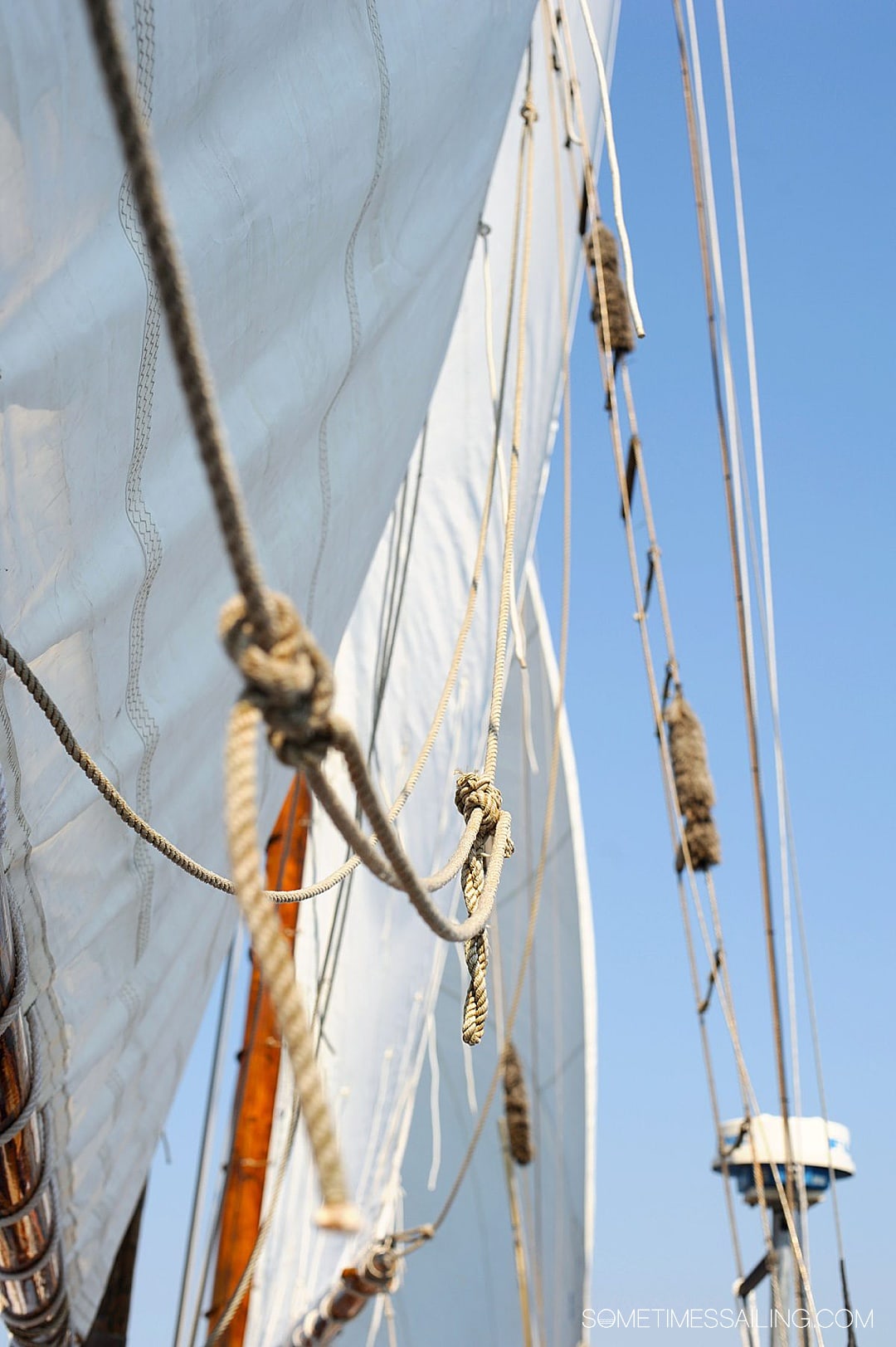
The largest, most important sail on a boat whose bottom length is attached to a boom. (Also what Sea Bags from Maine make a lot of their recycled sail bags from!)
A long pole with a thick diameter that runs the bottom length of the mainsail.
Another sail on a sailboat, that comes second in line in order of importance after the mainsail. The jib, however, doesn’t have a boom.
The vertical, structural piece of a ship whose purpose is to control steering
Ropes on a ship…if you’re feeling fancy.
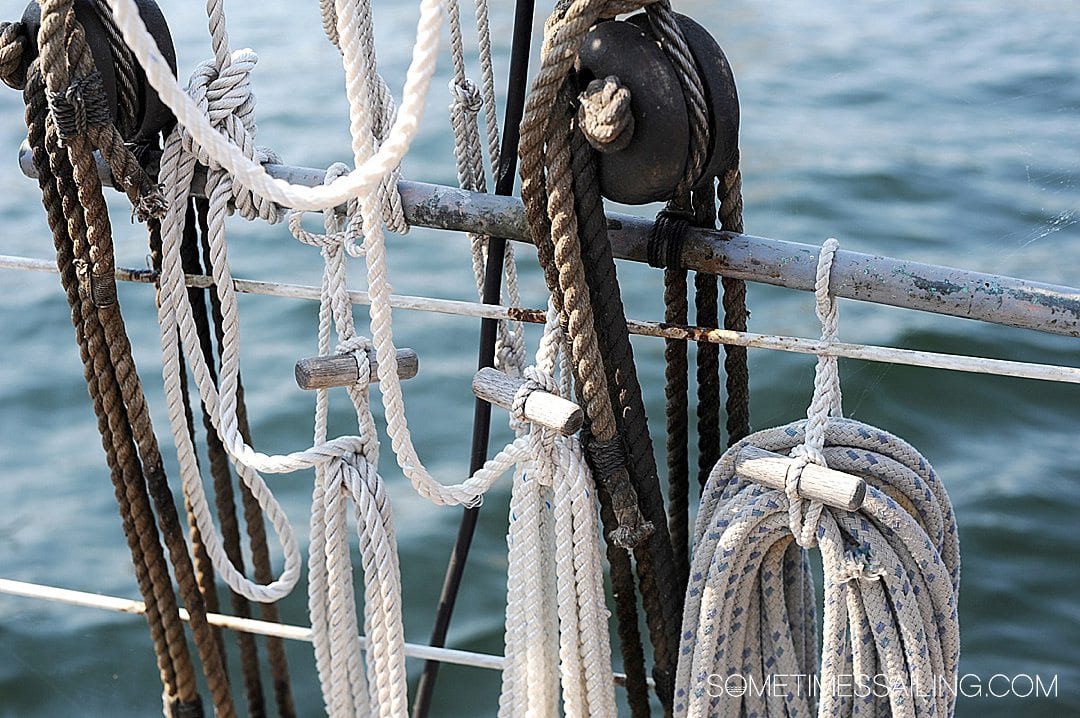
Most people know that an anchor is dropped to keep a ship from drifting off when the captain wants it to remain stationery while floating in the middle of a waterway. This is opposed to a pier, where a boat can usually be tied to a dock or boat slip.
But did you know that an anchor is shaped the way it is to help grip the ocean (or waterway) floor?
Stabilizers
These quite literally help stabilize the motion of a ship so you don’t feel the motion of the ocean as much.
There’s been great advancements in stabilizer technology so it also doesn’t rock the ocean and its inhabitants beneath the surface of the water.
The command station of the ship. It’s where someone captains the ship from and where someone is on lookout.
The walkway used to connect a boat to the dock. On cruises, guests walk off the gangway to the port or destination.
The kitchen on a ship. (And one of my favorite places because of course dining on a ship is one of the best activities!)
Many cruises will offer a tour of the galley during the sailing. And if they do – sign up! You learn so much during them.
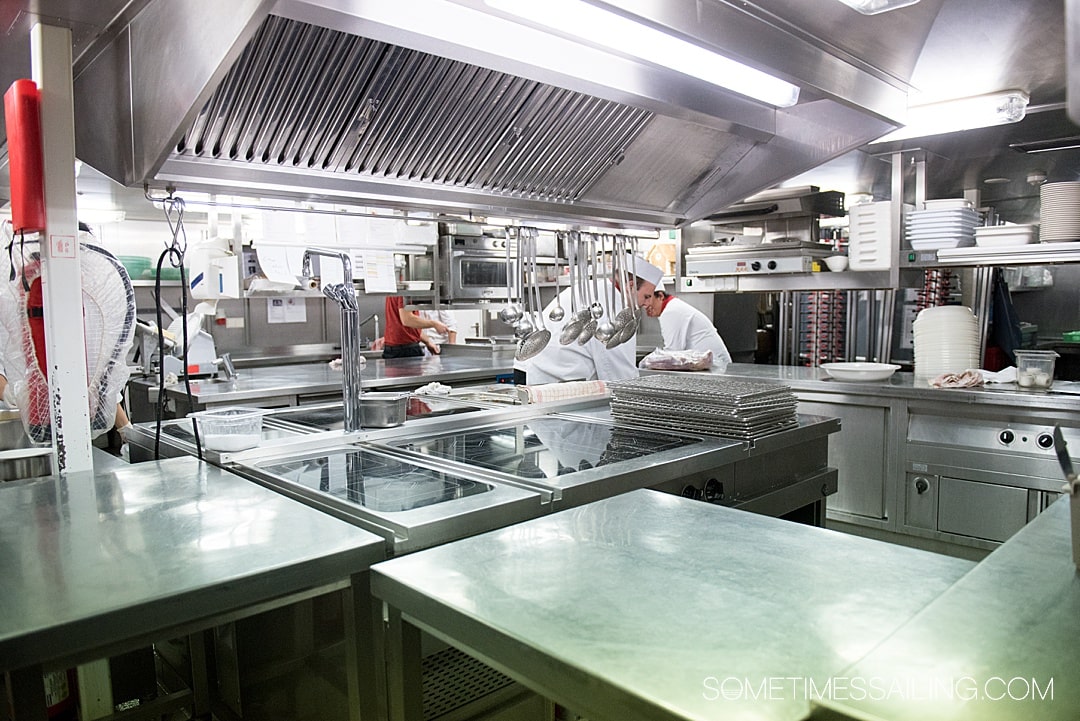
Ship Sailing (or Directional) Terms
You can “go sailing,” but it’s often used as a noun as well. Your “sailing” also refers to the cruise vacation you’re taking. For example, “Our sailing leaves from the Port of Miami on April 22.”
Day at sea (or sea day)
A day when the ship is simply sailing on the water and doesn’t dock or enter a port of call.
These are great days to enjoy a cruise ship’s amenities, including its pools and spa.
A cruise journey across a large body of water. Example: Atlantic Crossing, in which a cruise ship may sail from the east coast of the United States across the Atlantic Ocean to a destination in Europe, like Portugal. (Or a crossing across the Pacific Ocean.)
Transatlantic
A crossing cruise that goes across the Atlantic ocean.
Repositioning cruise
A sailing where a cruise ship “repositions” to another part of the world. For example, a cruise ship perhaps does 12 weeks in the Caribbean then “repositions” to the Mediterranean for 8 weeks.
Cruise to nowhere
A cruise that doesn’t dock or go to any ports of call during the sailing. It’s simply a few days at sea, for instance.
Closed-loop cruise
A cruise that starts and ends at the same port of embarkation or cruise terminal.
Open-jaw cruise
A cruise that starts and ends at different ports of embarkation or cruise terminals. (The same term is used for airline tickets that depart and return to different cities. It’s called an “open-jaw ticket.”)
Embarkation (or Departure) port
Where your cruise begins. (Yay!)
Disembarkation
When you sadly leave your cruise at the end of your journey.
Double-dip (or back-to-back)
When people sail on back-to-back cruises.
Inaugural sailing
The first sailing after a new cruise ship is launched or after it returns to sea after a length of time offline, like when a ship is newly modeled after being dry-docked for a while.
Turnaround day
The day a ship’s back in port or a cruise terminal between cruises. It’s used to restock the boat, do repairs, get the cabins back in order and cleaned or sanitized, etc.
“Day” is actually being generous – there is usually only hours between when one sailing’s guests depart and the next round of guests begins to board.
This boating or cruise ship term refers to any permanent structure a ship can be attached to in order to prevent it from drifting from the wind or a current. This could include a dock or jetty.
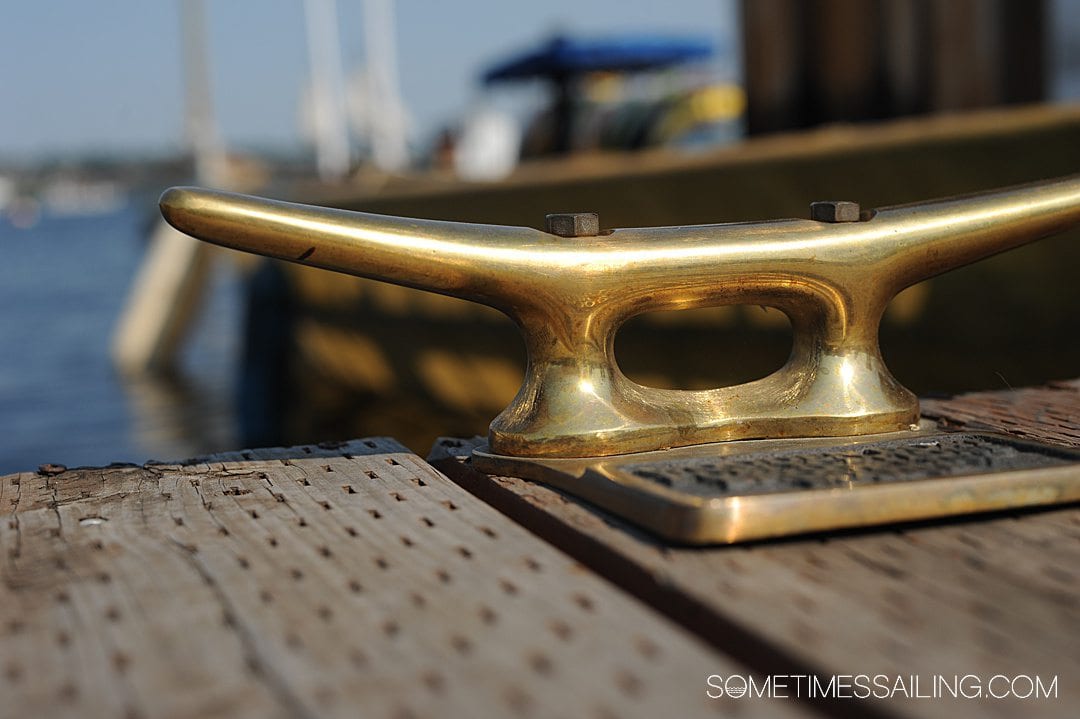
A captain docks a boat like a driver parks a car.
Berthing is a form of docking. It’s when a boat pulls into a “parking space” at a pier. That is to say pulls into a boat slip.
Cruise Staff and Ship Crew Terms
Obvious, of course! The “driver” of any vessel on the water and head honcho in command.
Cruise director
The Cruise Director is often seen as the lead of the ship’s activities and the face of the cruise. (This is not to be confused with a ship’s captain.)
This is the person who’s often the friendliest and most outgoing and welcoming person onboard. (It’s part of their job!) They are usually the voice of the cruise as well, making announcements over the ship’s loudspeakers to inform guests about upcoming activities, safety, and announcements for ports of call.
We have to admit that the Cruise Director who made an everlasting impact on us was Giusseppe of Celebrity Apex. He was amazing.
Cabin steward (“stews”)
A person (or people) who keep the boat’s interior tidy and kept. (Housekeeping aboard a ship, if you will.)
A deckhand has the hard job of maintaining the outside of the ship. And it’s not easy to do so with the elements constantly hitting the boat, like salt water in many cases.
A bosun is considered a rank above deckhand and reports to the captain of the ship.
Check out the interesting hierarchy chart on Crew HQ if you’re interested to learn more about who’s in charge of who.
The onboard person who is responsible for billing and monetary transactions.
The port-side or the curbside person who is responsible for helping with passenger luggage.
Passenger-crew ratio
The ratio of how many passengers, or guests, or onboard to how many crew are onboard. A 1:1 ratio is luxury (in cases where you’re assigned a butler onboard, like with Uniworld Boutique Luxury Cruises).
But a passenger-crew ratio over even 3:1 is still pretty good!
Land Terms in Relation to Cruises and Boating
Cruise terminal.
Where you check in for the start of your cruise. Cruise terminals, like the gate for an airplane before ti takes off, are usually for larger cruise ships.
Port of call
A port where your ship stops along your cruise.
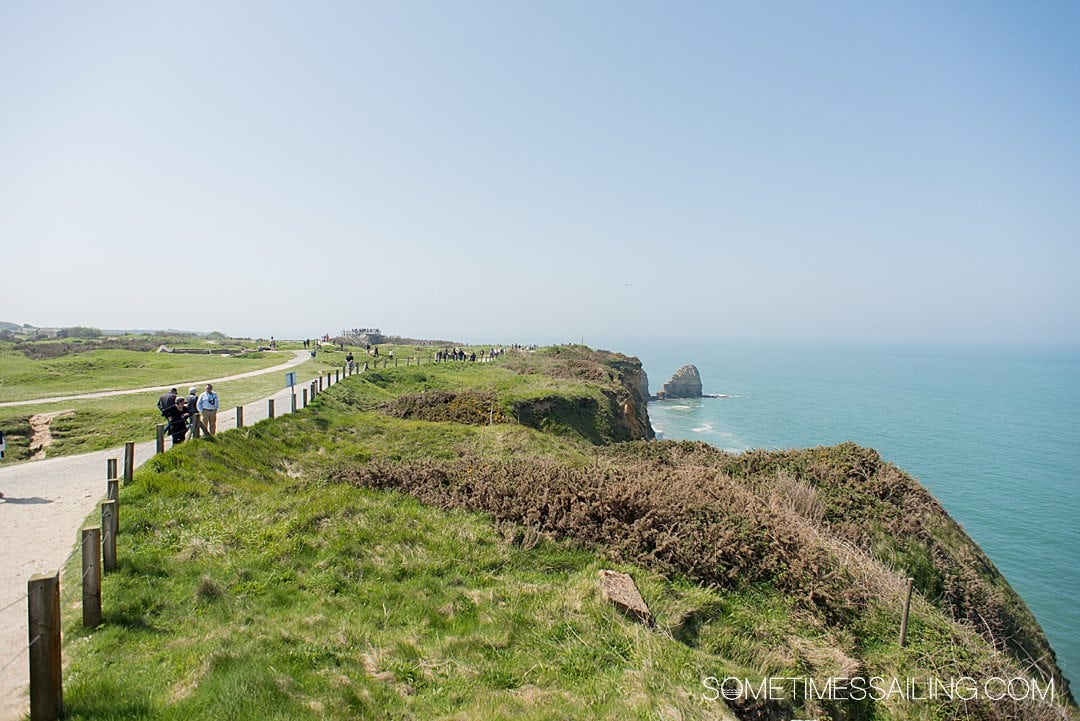
The port where a ship is most of the time. Kind of liken to our home, which is Raleigh, NC, where we are most of the time.
A small island your ship may go to. Some cruise lines have their own islands, like Royal Caribbean’s Coco Cay (pronounced, “key”) or Disney Cruise Line’s Castaway Cay.
Shore excursion
An activity in your port of call once you dock in a location. Shore excursions include walking tours, museum visits, water activities, etc.
Ocean liners usually have shore excursions a la carte from the cost of your cruise. River cruises often included shore excursions with optional upgrades, such as the DiscoverMORE program with Emerald Waterways .
A place designed for boats to dock. It’s like a pretty boat parking lot! It’s for smaller ships, boats, and yachts, like the size of a Kontiki Expeditions yacht. A marina is not for large cruise ships or river cruise ships .
This boat slip can be flooded with water and drained to work on a ship. It’s mostly dry-docked during three times of its life:
- Construction/creation
- Retirement (if it needs to be taken apart or disassembled)
When a ship is docked and lifted out of the water. Usually, it’s for something like remodeling the ship.
Organizations Related to Boating and the Cruise Industry
Cruise Lines International Association . Some of the things CLIA focuses on is helping set cruise line standards, are advocates for the Cruise Line Industry, and aid in ensuring security at sea.
National Oceanic and Atmospheric Association . They are a part of the US Department of Commerce, founded in 1970. They do everything from predicting weather and issuing weather warnings, to helping build sustainable fisheries, to helping protect our coasts.
Additional Ship and Nautical Terminology
An imaginary line encircling the earth that rests horizontally, or parallel to the Equator.
A vertical imaginary line encircling the earth. They are long , which is how you can remember they go up and down. (As opposed to latitudes, that go east and west.)
Most people know the equator is an imaginary line that cuts the earth in half, creating the Northern Hemisphere and Southern Hemisphere. But most people can’t explain what it is! Here’s your answer: It’s the equal distance between the north and south poles on earth. It is the latitude degree of zero (0º).
Prime Meridian
Zero degrees, longitude (0º). So where is it, anyway? This imaginary line, from which all degrees east or west are measured, is in Greenwich, England.
Flag country
Country where the ship is registered. For example, when you see a flag flying off the stern of the ship you can easily identify where the ship is from, like Norway. We loved watching the Norwegian flag fly off the aft of the ship during our Polar Fjords, Tromso Boat Tour .
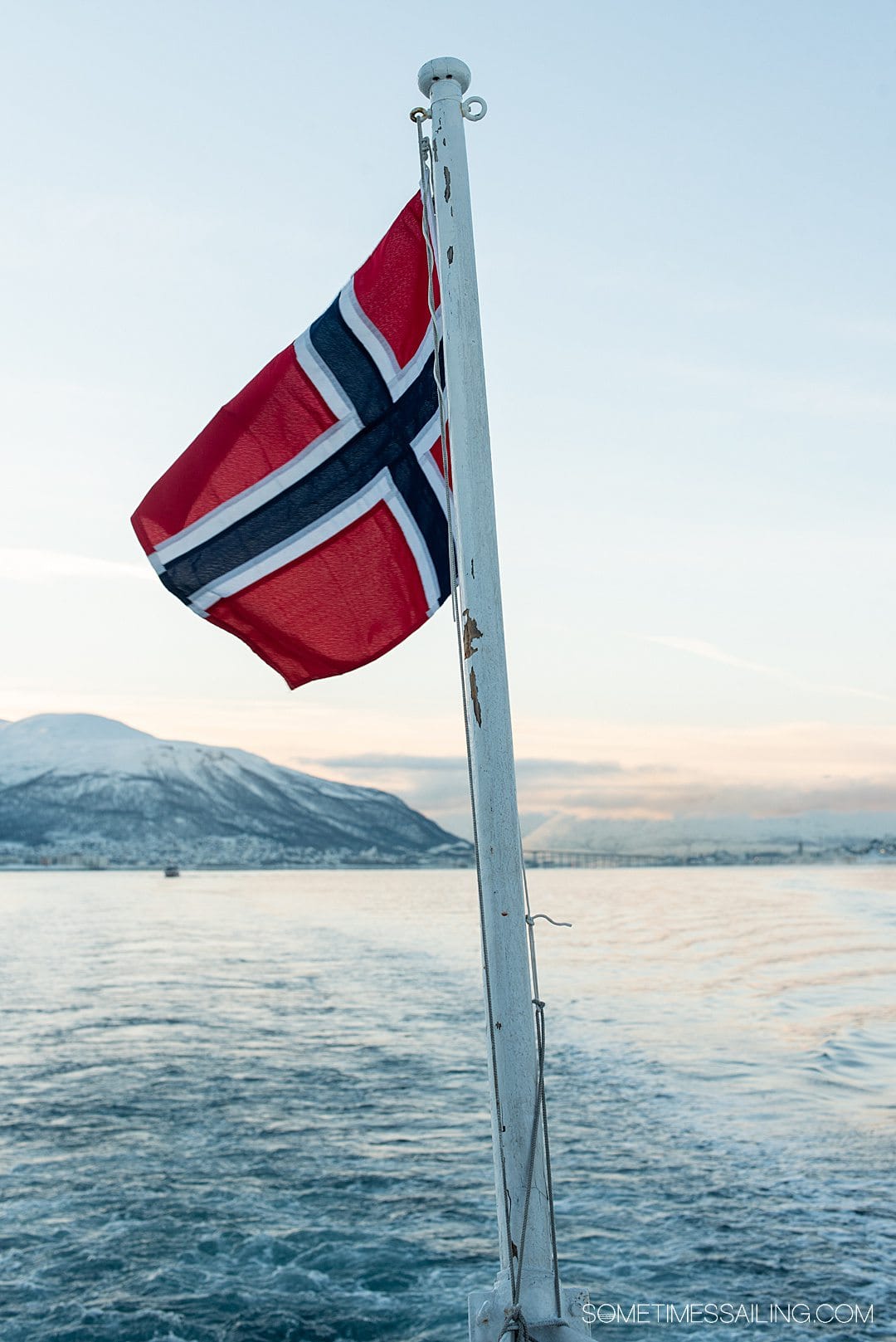
Units of speed used for how fast or slow a ship is traveling. (One unit = one nautical mile per hour) Abbreviated “kn”. 1 knot = 1.15 miles per hour (mph). You’d say x-amount of miles per hour for a car speed in the US (or kilometers per hour in Europe) but on the sea speed is in knots.
Provisions are materials needed on a ship but most generally it refers to food and beverages.
A chef on a barge cruise, for instance, maybe get provisions for the ship at a local market in a small town the boat docks in.
Conversely, it’s impossible for a cruise ship with over 100 passengers, like American Cruise Lines or Viking Cruises , to get provisions needed for all the crew and guests at a local market. They order it from a supplier and the ship is stocked in port.
The little trail of white frothy goodness a ship leaves behind as it moves onward and forward in the water. If you’ve ever trailed a boat while waterskiing, you stare right at it! It’s also fun to watch the wake as you sail away from a port of call.
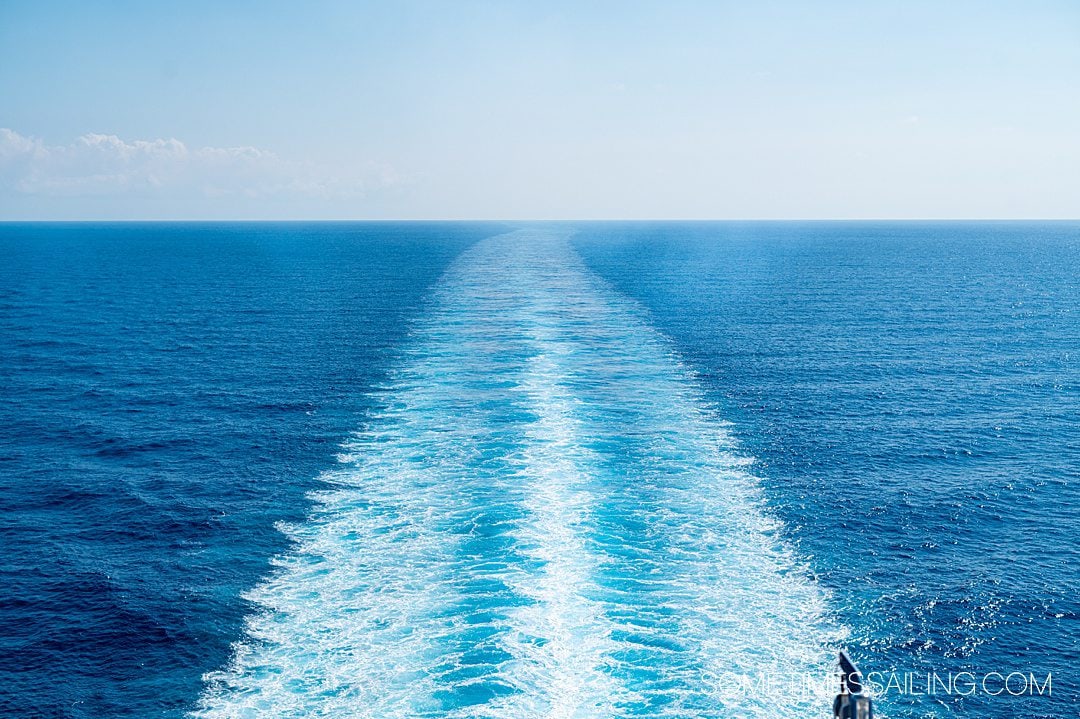
Nautical twilight
This is a specific time of day when the stars can be used to navigate on the seas when the sun is just below the horizon. It’s not exactly dusk and it’s not night – it’s nautical twilight. (There are three different twilights if you want to get geeky over it. But for now, we’ll say it’s civil twilight, then nautical twilight, then astronomical twilight and leave it there.)
Technically speaking, the sun is between 6 to 12 degrees below the horizon during nautical twilight. The length of twilight depends on what latitude you are at on Earth. (The length of daylight depends on the same.)
If the weather is good, a captain can see the horizon line of the earth in the distance during nautical twilight and bright stars. This would enable him or her to use astronomy to navigate. Or celestial navigation, as it’s called.
Nautical dawn
The opposite of nautical twilight is nautical dawn. This is when the sun is 6 degrees
Celestial navigation
Using the position of the sun, stars, and planets to navigate.
Consider a lock a water escalator or elevator. They’re engineering feats that help a boat reach a new water level. They are opened or closed to control this.
A ship goes into a lock, then the lock is flooded with water to make the ship (and water level) rise. The lock in front of the ship is then opened so the ship can pass through the waterway on the new level and proceed on its journey.
Tender (also known as a dinghy, skiff, water shuttle)
A small boat that takes passengers from a larger ship to another location (like ashore). It literally “tends” to passengers.
Often, if a cruise ship can’t dock at a port due to its size, a tender will take you from where your cruise ship drops anchor in the ocean to drop you off at the port.
These are boats like tenders, but they’re inflatable. Picture of a kind of white-water rapids inflatable boat! They’re open-air and can navigate shallow waters, which is great for excursions.
They are named, “Zodiacs” after the company that invented them. They were originally created in the 1930s for military use and found a place in the leisure market for passenger cruise ships.
For more cruise and boating inspiration check out:
- The Best Cruise Apps for Trip Prep and to Use While On Vacation
- 5 Reasons We Have Our Eyes on United States River Cruises in 2021
- Tromso Boat Tour in Norway: A Favorite Excursion in the Arctic Circle

Similar Posts
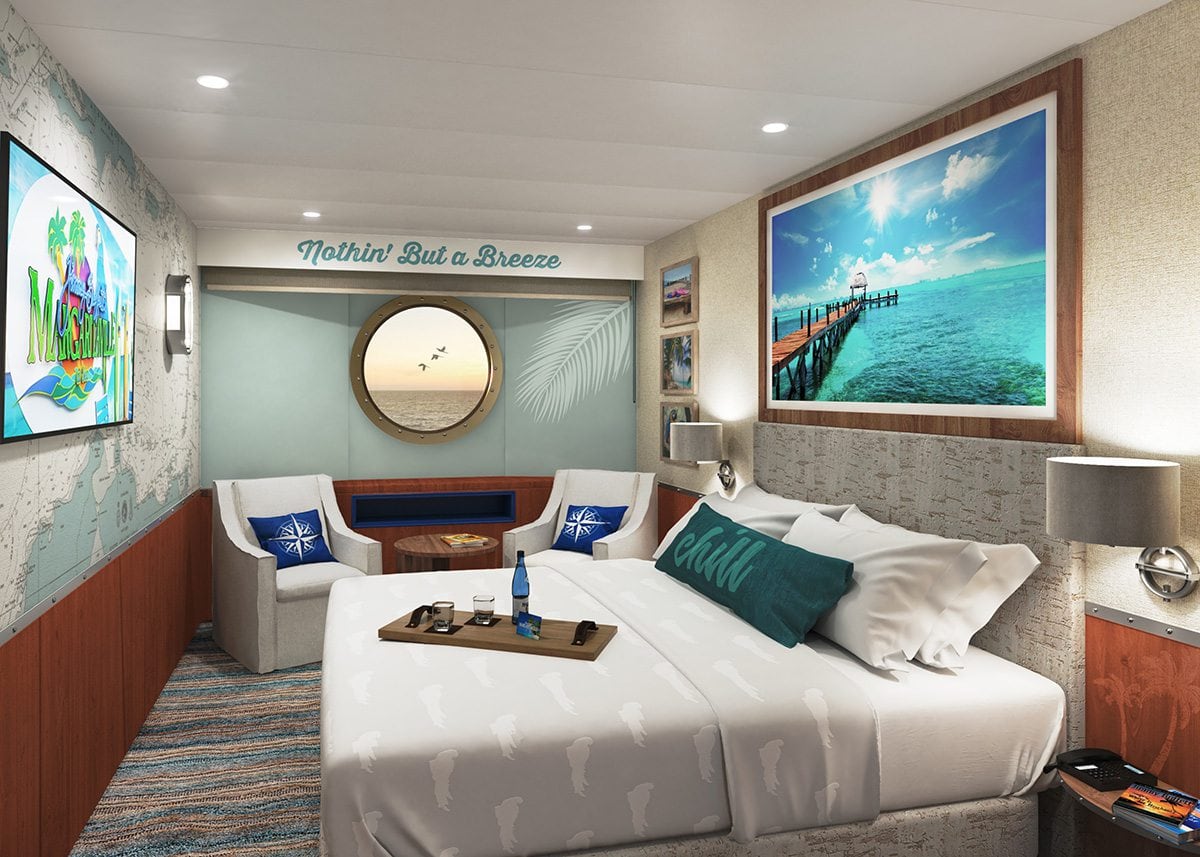
Margaritaville Cruise: Jimmy Buffett’s Margaritaville at Sea
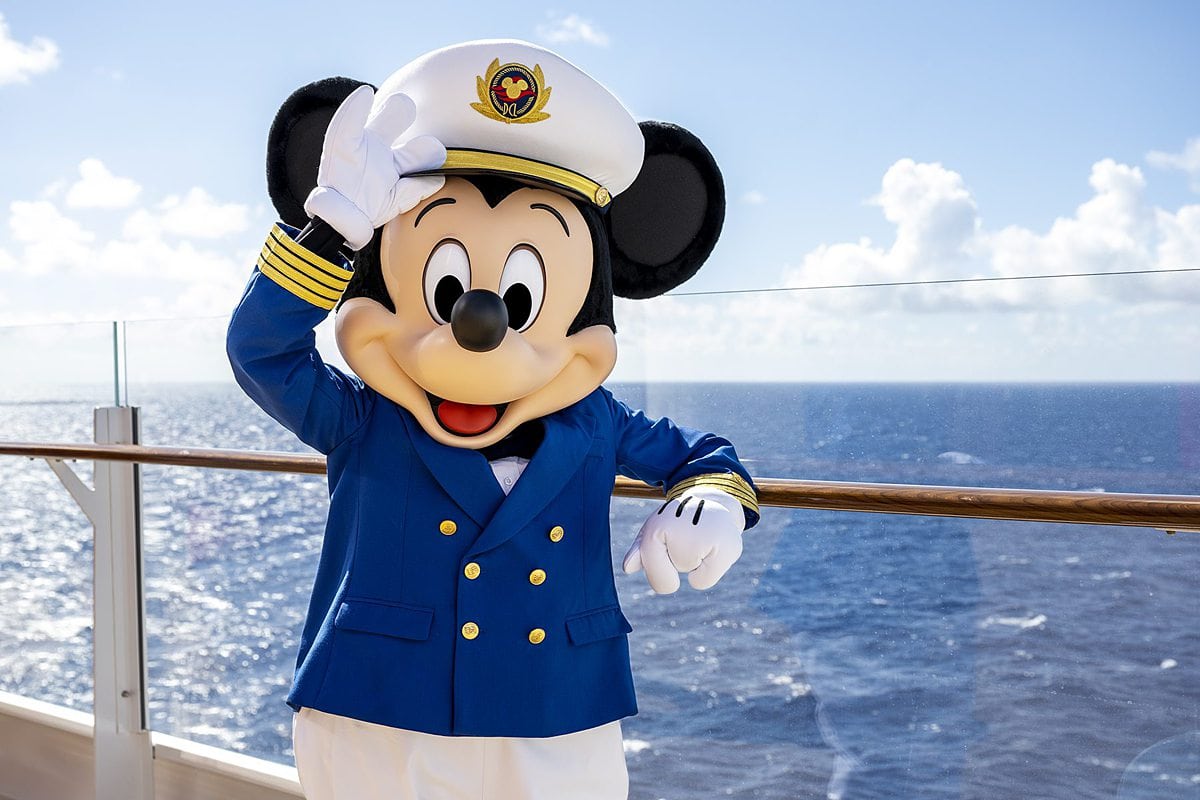
Disney Cruise Ships Ranked, According to DCL Experts

River Cruise vs Ocean Cruise: What’s the Difference?

26 Helpful Things to Know your First Time on a River Cruise
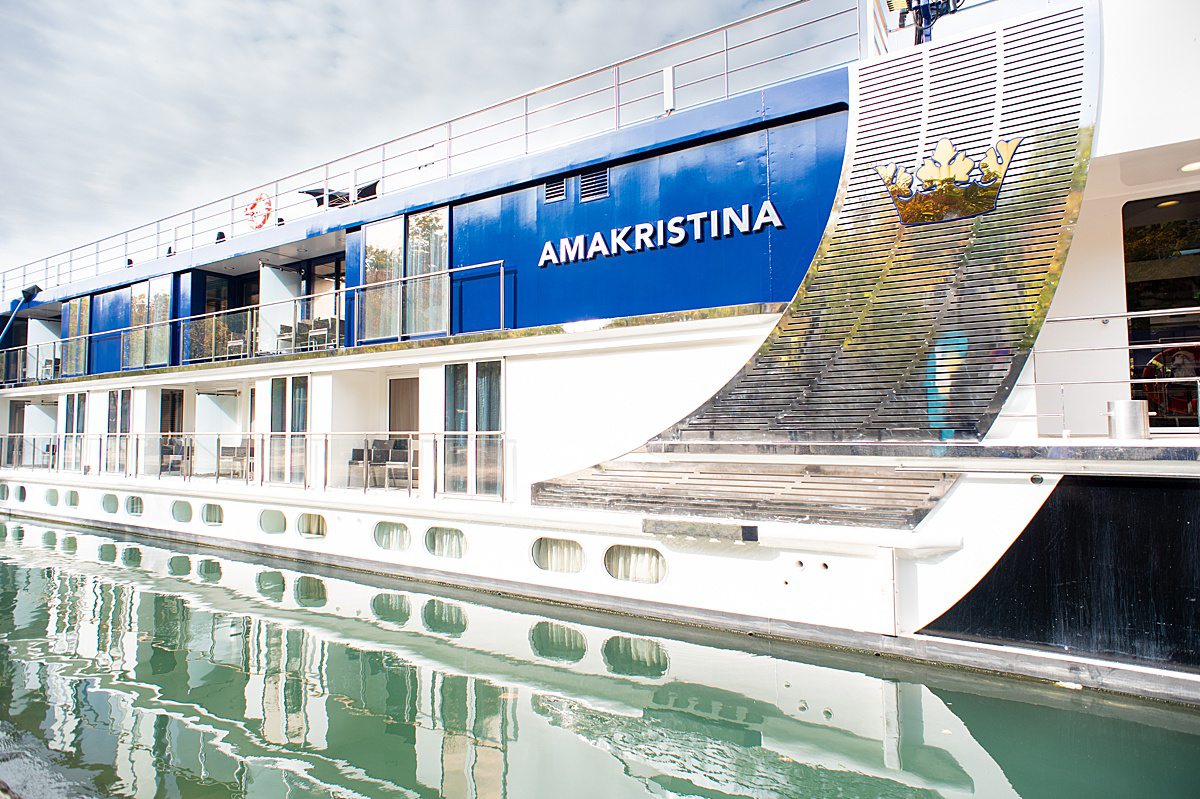
Rhone River Cruise Review: AmaWaterways Colors of Provence
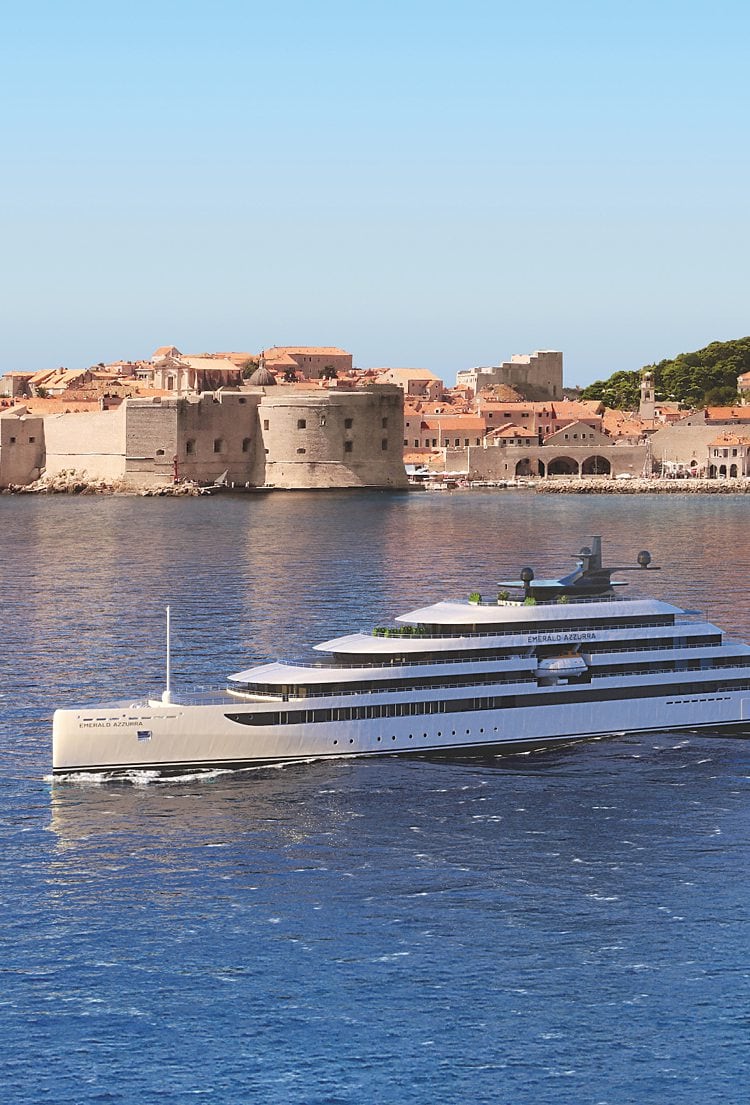
Affordable All-Inclusive Yacht Cruise that lets you Vacation Like a Celebrity: Emerald Azzurra
Hi! Just a heads up that you have port and starboard mixed up at the beginning of your definitions but then you explain it correctly afterwards. Not sure if I’m missing something. I reread it multiple times.
This information was all very helpful! Thank you!!! I’ve been on one cruise before but my kids were 14months and 3yrs old and the whole trip was a blur. This time my kids will be 11 and 12 and we’ll be able to really enjoy navigating the ship more. Lots of great info here and on your other posts.
Thank you SO much, Chelsea! You’re right and we updated things. 😉 I’m glad to hear you’ll have a great time navigating the ship on your next cruise now that your kids are older. We so appreciate your thoughtful comment!
Leave a Reply Cancel reply
Your email address will not be published. Required fields are marked *
Save my name, email, and website in this browser for the next time I comment.

Cruise FAQs
What is an upper berth on a cruise ship.
Table of Contents
Key Takeaways
- Upper berths on a cruise ship are convenient for passengers who struggle with stairs or accessing higher areas.
- They offer smaller and more compact spaces compared to lower berths, but some have clever storage solutions and fold-out desks.
- Upper berths provide better views of the ocean and surroundings, offering a panoramic experience.
- Passengers staying in upper berths enjoy exclusive amenities and services such as personalized concierge service, access to specialty dining, and priority disembarkation at ports.
Definition and Purpose of an Upper Berth

Types of Upper Berths on Cruise Ships
Advantages of choosing an upper berth.
Considerations Before Booking an Upper Berth
Tips for making the most of an upper berth.
Frequently Asked Questions about Upper Berths
Personal experiences and reviews of upper berths, comparing upper berths to other cabin options, additional amenities and services for upper berth guests, conclusion: is an upper berth right for you, frequently asked questions, how much weight can an upper berth support, are there any age restrictions for using an upper berth, can the upper berth be converted into a seating area during the day, are upper berths more prone to motion sickness than lower berths, is there a ladder or other means of access to the upper berth.

Claire, a creative soul with an unquenchable thirst for storytelling, is an integral part of the Voyager Info team. As a dedicated writer, she weaves captivating narratives that transport readers to enchanting cruise destinations and beyond.
Claire’s love affair with writing began at an early age when she discovered the magic of words and their ability to craft worlds and emotions. Her innate curiosity led her to explore various literary genres, but it was travel writing that truly captured her heart. Drawing inspiration from her own globetrotting adventures and encounters with diverse cultures, Claire embarked on a journey to become a travel writer par excellence.
What Is Cruise Collection
What Is The Lido Deck On A Cruise Ship

Claire, a creative soul with an unquenchable thirst for storytelling, is an integral part of the Voyager Info team. As a dedicated writer, she weaves captivating narratives that transport readers to enchanting cruise destinations and beyond. Claire’s love affair with writing began at an early age when she discovered the magic of words and their ability to craft worlds and emotions. Her innate curiosity led her to explore various literary genres, but it was travel writing that truly captured her heart. Drawing inspiration from her own globetrotting adventures and encounters with diverse cultures, Claire embarked on a journey to become a travel writer par excellence.

You may like
Unveiling bermuda's eerie enigma: 10 haunting legends revealed.
Navigate through Bermuda's chilling lore, where enigmatic legends beckon curiosity and shroud the island in mystery, leaving you yearning for more.
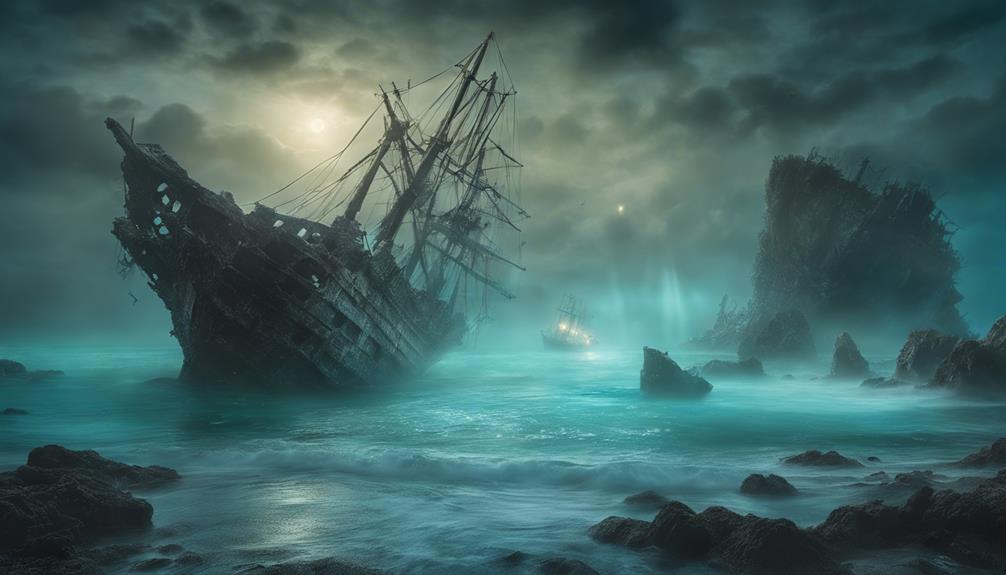
- Bermuda's haunted legends encompass ghostly apparitions, mysterious locations, supernatural maritime tales, and enigmatic Bermuda Triangle mysteries.
- Reports of eerie phenomena and encounters contribute to Bermuda's paranormal mystique, attracting thrill-seekers and curious minds.
- The island's rich history and legends add to its reputation for supernatural allure, with ongoing research into unexplained vanishings.
- Thrilling tales of phantom ships, haunted lighthouses, and cursed caves fuel Bermuda's eerie enigma, captivating visitors and locals alike.
The Ghost of Old Tucker's Town
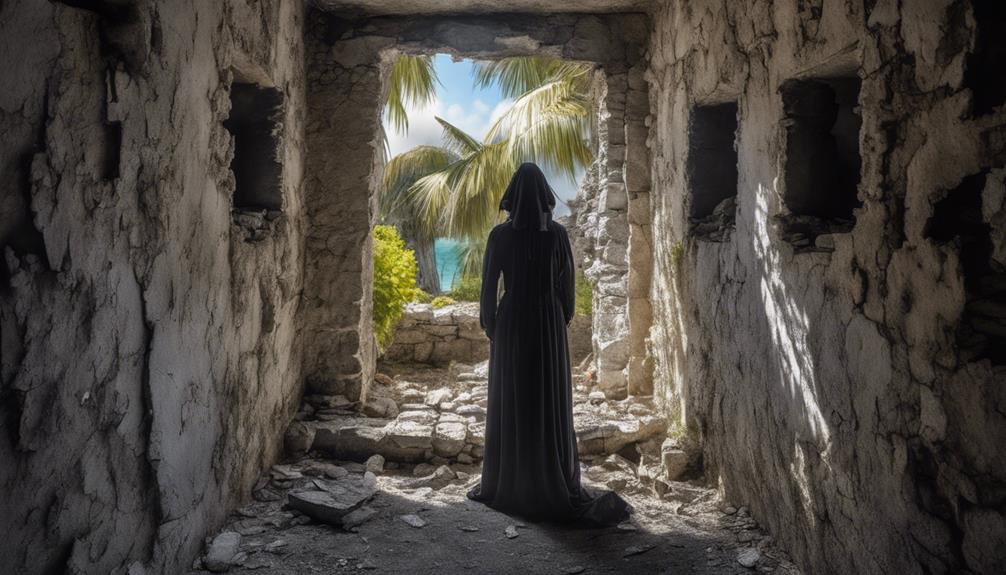
The Cursed Crystal Caves

Phantom Ship of the Triangle
Whispering Pines of Walsingham

- Eerie Sounds: The Whispering Pines are famous for emitting strange, eerie sounds that many believe are whispers from the past, adding an air of mystery to this secluded spot.
- Shipwrecked Origins: Legend has it that the pine trees were planted by shipwrecked sailors who met their fate on the island, forever intertwining their spirits with the land.
- Unexplained Phenomena: Visitors often report feeling a sense of unease while wandering among the Whispering Pines, with some claiming to have heard inexplicable whispers rustling through the trees.
- Paranormal Reputation: The Whispering Pines of Walsingham contribute to Bermuda's reputation as a place steeped in paranormal activity, drawing thrill-seekers and curious minds to uncover the secrets hidden within the island's shadows.
Haunted Lighthouse of St. David's
The Wraiths of Somerset Bridge

Ghostly Encounters at Bridge
- Visitors have reported chilling encounters with mysterious wraiths and spectral figures at Somerset Bridge.
- Local legends tell tales of ghostly sailors and phantom ships haunting the area.
- The bridge's eerie reputation has attracted ghost hunters and thrill-seekers intrigued by the supernatural.
- Despite its scenic surroundings, Somerset Bridge holds a dark and enigmatic aura due to the unexplained phenomena reported there.
Mysterious Disappearances Near
Local legends come alive.
- The legend involves ghostly figures seen near the world's smallest drawbridge.
- Locals believe the wraiths are the spirits of mistreated slaves.
- Reports describe the wraiths as shadowy figures in old-fashioned clothing.
- Visitors and residents have reported eerie phenomena and chilling presences near the bridge.
Devil's Hole Dwellers
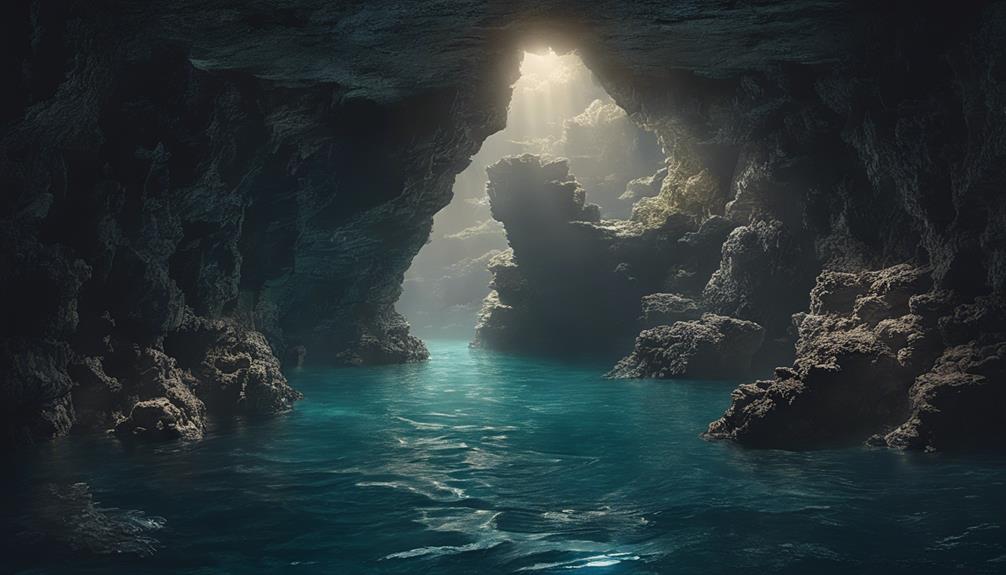

The Mystery of Gibbet Island
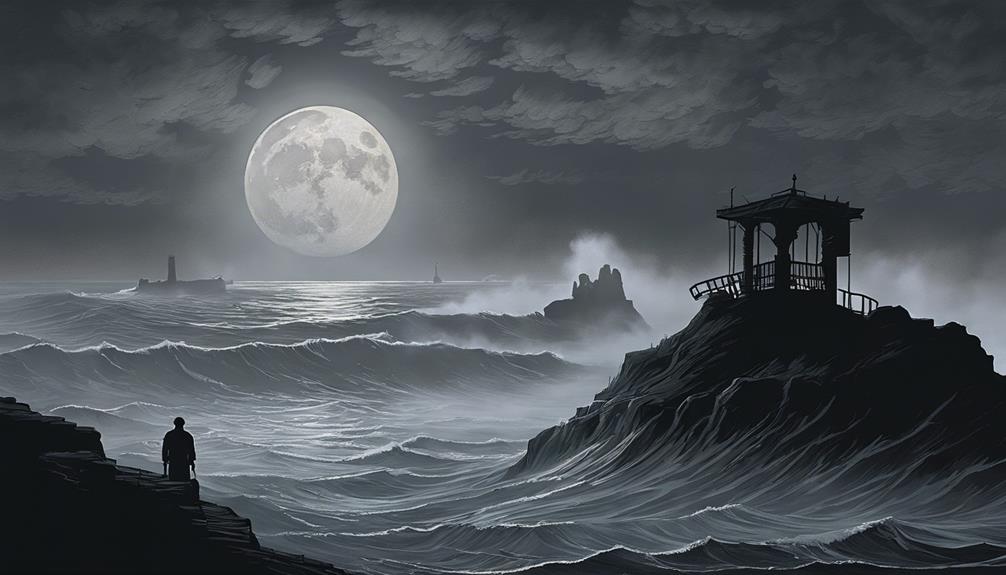
- Pirate Executions : Gibbet Island earned its name from the gallows, or gibbets, used to publicly display the bodies of pirates who met their end there.
- Spectral Hauntings : Legends whisper of restless spirits haunting the island, seeking vengeance against intruders who dare to disturb their eternal slumber.
- Eerie Atmosphere : Visitors recount feeling a palpable sense of unease while on Gibbet Island, accompanied by ghostly sounds of clanking chains and whispers that echo through the mist.
- Historical Reminder : This foreboding isle serves as a stark reminder of the grim history and enigmatic reputation that shroud the Bermuda Triangle, where the past lingers and the spirits of the condemned may still roam.
The Lost Souls of Warwick Parish

The Dark Secret of Scaur Hill

Scaur Hill's Mysterious Whispers
- Historical Tales: Local legends suggest a connection between the whispers and mistreated slaves who met their demise in the caves.
- Unexplained Sensations: Visitors often report feeling unsettled and hearing unexplainable noises, deepening the mystique of Scaur Hill.
- Paranormal Speculation: The haunting whispers have fueled speculation about paranormal activity and lingering spirits.
- Mystery Unsolved: Despite various theories, the true origin of the whispers remains elusive, captivating those fascinated by the supernatural.
Uncovering Ancient Burials
How can visitors access these haunted locations in bermuda?, are there any documented sightings or encounters with these spirits?, what historical events or legends inspired these eerie tales?, are there any paranormal investigators or experts who have studied these phenomena?, are there any local superstitions or beliefs associated with these haunted locations?, unveiling royal caribbean's exhilarating caribbean escapes: top destinations.
Navigate through the breathtaking Caribbean with Royal Caribbean to discover a destination that will leave you spellbound and craving for more…
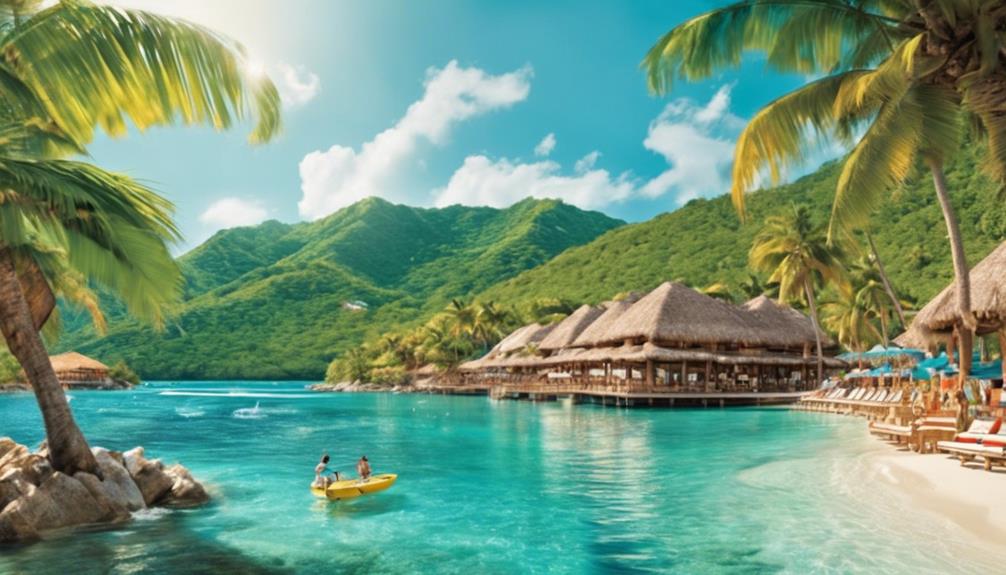
- Thrilling adventures await at Perfect Day at CocoCay in the Bahamas, featuring Daredevils Peak and serene beach cabanas.
- Jamaica offers island vibes with attractions like Dunn's River Falls and the Bob Marley Museum for cultural exploration.
- St. Thomas boasts tropical beauty with Magens Bay and Coral World Ocean Park, perfect for beach lovers and underwater enthusiasts.
- Cozumel in Mexico blends natural beauty with Mayan heritage, providing exceptional snorkeling, water sports, and cultural experiences.
Bahamas: Paradise Found
Jamaica: Island Vibes
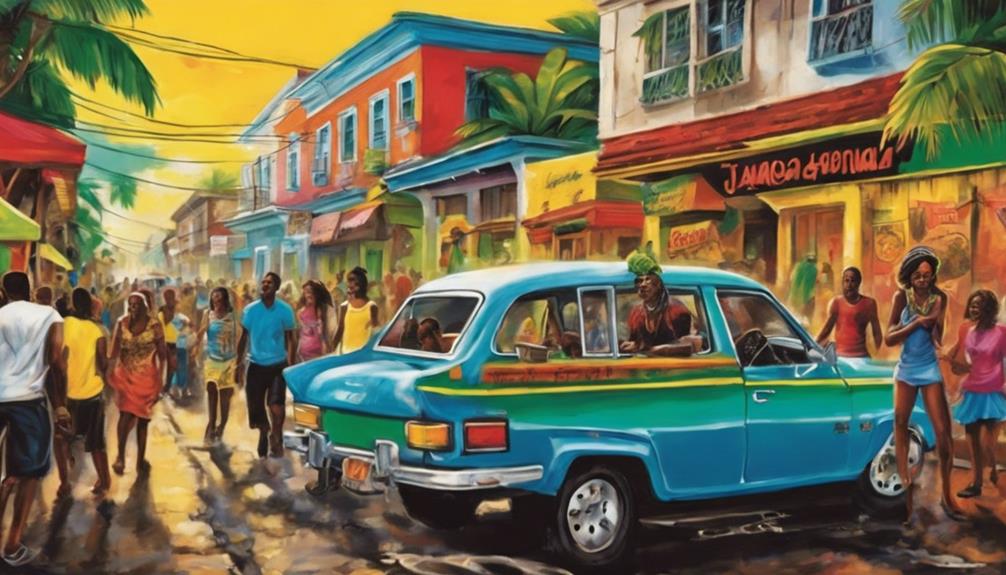
St. Thomas: Tropical Beauty
Cozumel: Mexican Delights
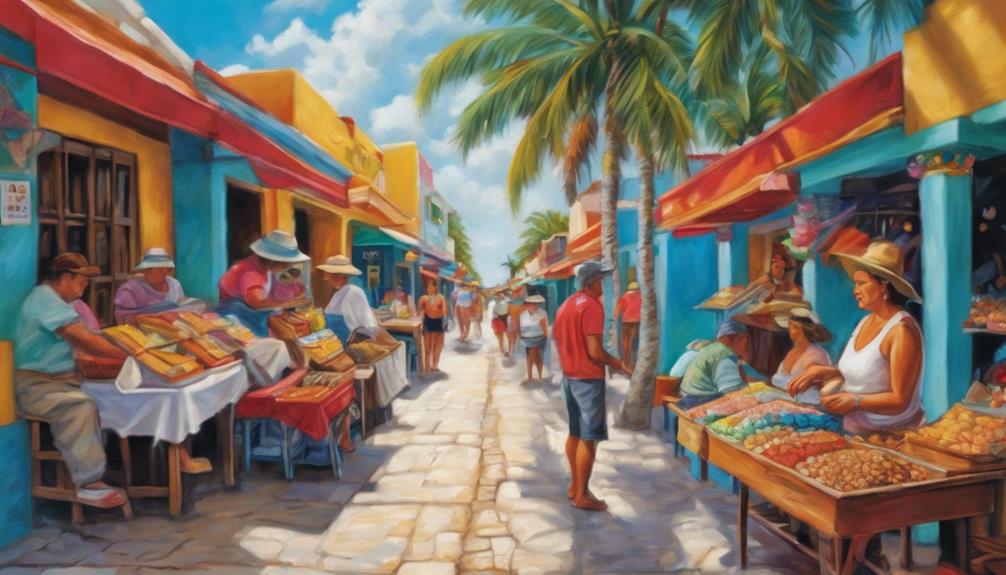
- Exceptional Snorkeling: Dive into the crystal-clear waters surrounding Cozumel to discover a world of vibrant marine life and stunning coral reefs. Whether you're a beginner or an experienced snorkeler, Cozumel's underwater wonders will leave you in awe.
- Rich Mayan Heritage: Immerse yourself in the ancient Mayan culture by exploring archaeological sites like San Gervasio. Learn about the fascinating history and traditions of this civilization while marveling at the impressive ruins scattered across the island.
- Diverse Activities: From water sports to relaxing beach resorts and lively local markets, Cozumel offers a wide range of activities to suit every traveler's taste. Whether you seek adventure or relaxation, this Mexican paradise has something for everyone.
Barbados: Caribbean Charms
Is Labadee Haiti Owned by Royal Caribbean?
Where are the royal caribbean private islands?, who owns perfect day island?, who owned cococay before royal caribbean?, unraveling the mysteries of alaska: a breathtaking adventure with uncruise.
Cruise into the unknown with Uncruise in Alaska, where captivating mysteries await around every corner, ready to be revealed.

- Witness diverse wildlife like humpback whales and bald eagles in Alaska's untamed wilderness.
- Immerse in indigenous cultures through traditional ceremonies and art demonstrations in remote villages.
- Engage in thrilling adventure activities like kayaking in Misty Fjords National Monument.
- Find ultimate relaxation surrounded by Alaska's natural beauty, away from the daily hustle.
Unforgettable Encounters With Alaska's Wildlife
Immersive Cultural Experiences in Remote Villages

Thrilling Adventure Activities in the Wilderness
Exploring Glaciers and Fjords Up Close
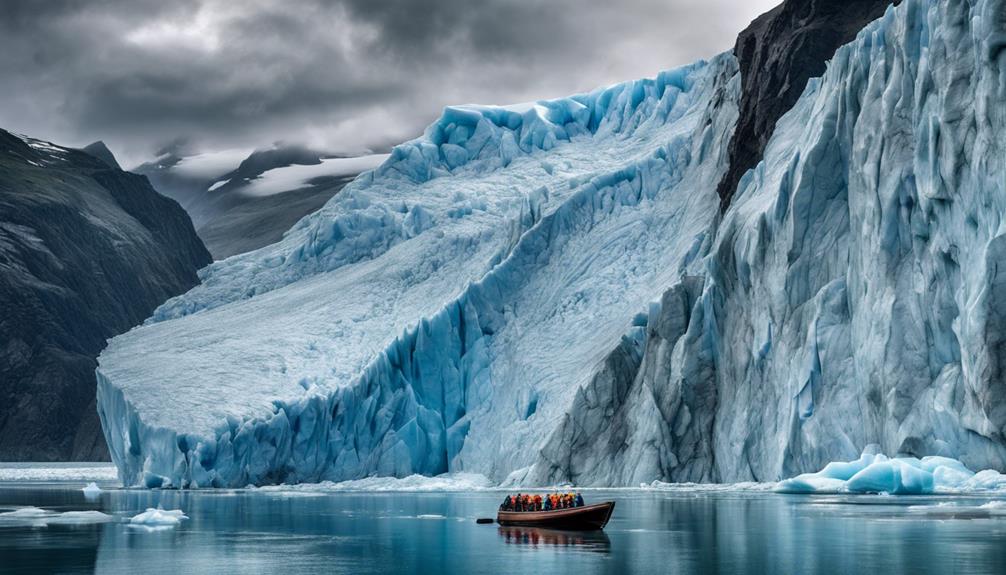
Relaxation and Rejuvenation Amidst Nature's Beauty
- Experience ultimate relaxation surrounded by the untouched beauty of Alaska's wilderness.
- Rejuvenate your mind and body with peaceful moments in the tranquil fjords and forests.
- Find serenity in the sights and sounds of nature, away from the hustle and bustle of everyday life.
Is Uncruise Still in Business?
What is included in uncruise?.

Affiliate disclaimer
As an affiliate, we may earn a commission from qualifying purchases. We get commissions for purchases made through links on this website from Amazon and other third parties.

Playa Mia Grand Beach Park: Grand Adventures and Ultimate Relaxation
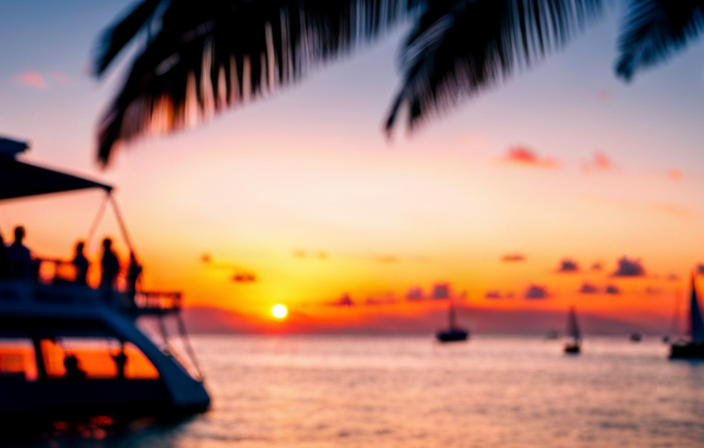
What Is A Catamaran Cruise
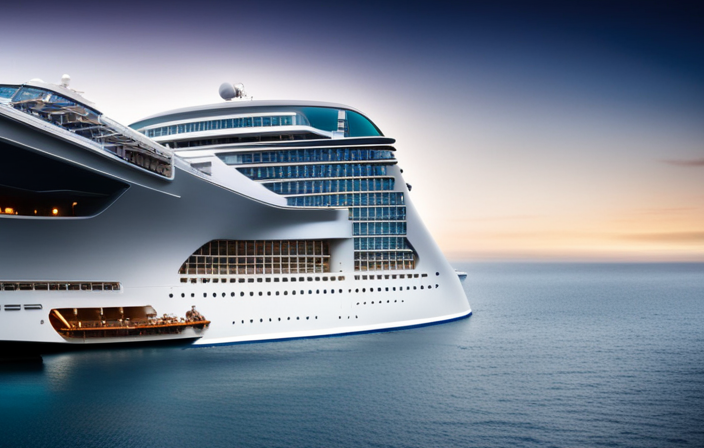
Which Celebrity Cruise Ships Have Been Refurbished

What Drinks Can You Bring On Princess Cruise

What Is The Weather Like On A Transatlantic Cruise In April

How to Contact Someone on a Carnival Cruise Ship
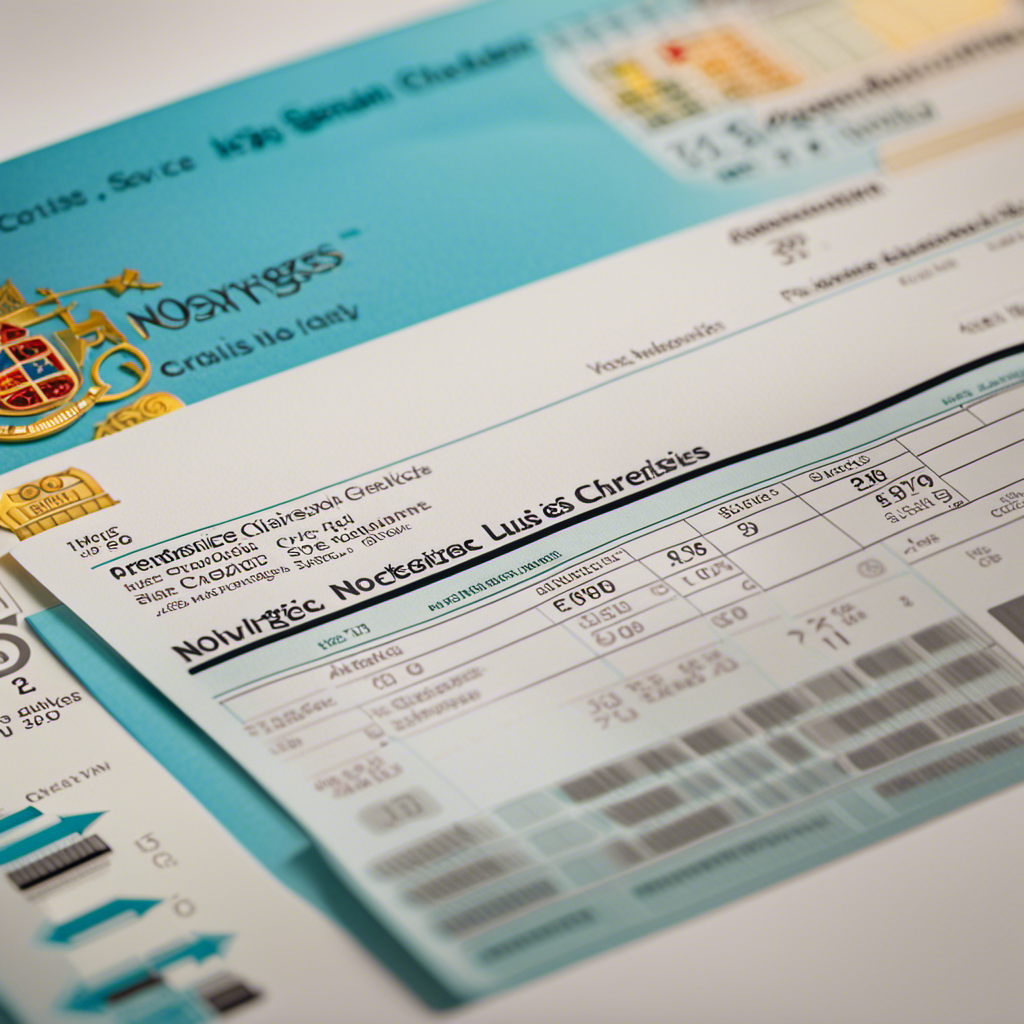
Decoding Norwegian Cruise Line’s Gratuities and Service Charges

Azamara Onward: Origins, Renovation, and Future Plans
Anthony Bourdain: Unconventional Culinary Icon and Global Influencer

Authentic Tacos and Local Delights: A Culinary Adventure in Cabo San Lucas

Arctic Adventure: Uncharted Destinations With Le Commandant Charcot

Authentic Art, Exciting Auctions: The Ultimate Cruise Ship Experience!

How To Turn On Cruise Control Tesla Model 3

How To Set Cruise Control Tesla Model Y
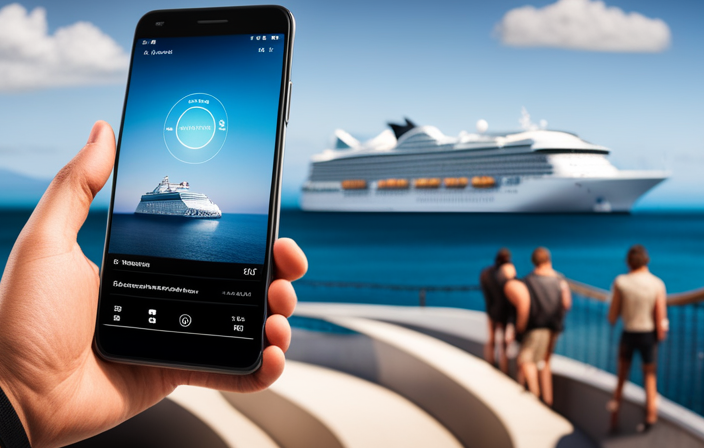
How To Check Weather For A Cruise
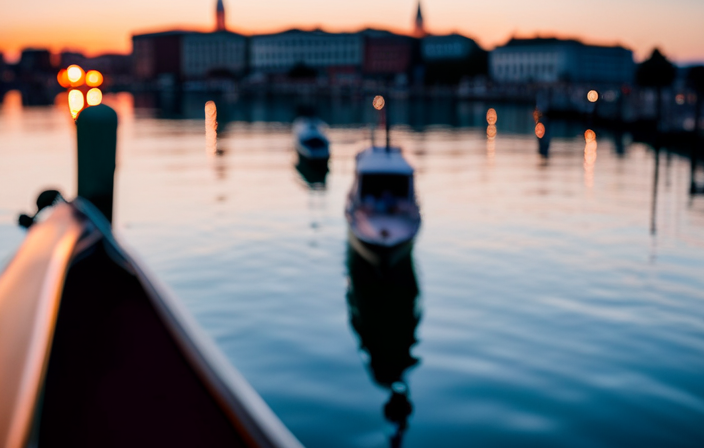
How To Get From Venice To Chioggia Cruise Terminal

New to cruising? Here are all the terms you need to know

If you're new to cruising, you may feel like your fellow passengers are speaking in an insider, secret language, exchanging words and phrases that stump you. Fortunately, TPG can keep you from getting lost in translation with this handy glossary of cruise lingo. Take a peek and you'll know your berth from a beam in no time.
The ship and nautical terms
Aft: The rear (stern) area of the ship. When you select a cabin, you can pick one in that's aft, midship or forward.
Atrium: The splashy main entrance and lobby of the ship. If you sail Norwegian Cruise Line , you may know this spot as the Centrum.

Beam: Refers to the ship's width at its widest point. This is important since it's the measurement that will tell a captain if a vessel can transit tight spaces.
Bow: The very front of the ship.
Bridge: The bridge is usually on a high deck and forward. It's where the captain and officers navigate the ship. It's command central and usually off-limits to passengers with the exception of small cruise lines such as Windstar Cruises and Uncruise Adventures that offer specific times when you can stop by the bridge to ask the officer and his or her team questions.
Bulkhead: Partition walls in strategic places on the ship to prevent the spread of fire or flooding.
Dry dock: When a ship is at a shipyard or other location to be refurbished or have technical upgrades made.
Forward: Toward the front of the ship.
Funnel: The smokestack at the top of the ship. Most cruise lines paint their logo on the side of the funnel.
Galley: The ship's kitchen. Megaships like Royal Caribbean's Symphony of the Seas may have more than one galley.
Related: The ultimate guide to cruising with Royal Caribbean
Gangway: This is the removable ramp or steps that passengers use to board or disembark the ship.
Grand staircase: Many posh ships, such as Oceania's R-class ships, have a grand staircase in the atrium. It's a fabulous spot for photographs -- especially when you're all dressed up. You could use the shot on next year's holiday card!
Helm: The ship's wheel (or remote control navigation) and steering apparatus make up the helm.
Hull: The watertight body of a ship.
Keel: A bow-to-stern structural support that runs along the bottom of the ship. You'll often hear about a ship's keel-laying ceremony , which kicks off a major construction milestone.
Knot: Indicates the speed of a ship in nautical miles.
Lido deck: Old-school cruisers use this term to denote the pool deck.

Lifeboat: Every cruise ship carries smaller boats that can be used by passengers in case of emergency. Most often, these are separate vessels from the ship's tenders (see that term below).
M.S.: Means motor-sail, a type of ship. If you sail Windstar Cruises , you're likely already familiar with the term M.S.Y., which indicates motor-sail-yacht. Wind Surf, Wind Spirit and Wind Star are all motor-sail-yachts.
Midship: The middle section of the ship. If you're worried about getting seasick, book a cabin on a low deck at midship so you're close to the vessel's fulcrum point, where you'll feel less movement.
Mooring: A mooring is a physical structure to which a ship can be secured. Examples include piers, wharves, jetties, quays and anchor buoys.
Muster station: A designated location on the ship where each passenger must report for muster drill, a practice run in case of an actual at-sea emergency. Your muster station is printed on a map on the back of your cabin door and is listed on your cabin key card. The location could be in an interior bar or theater or on an open deck.
Panamax: A ship that's the right width to sail the Panama Canal. Anything larger than a Panamax vessel cannot transit the canal.
Port side: This refers to the left side of the ship as you face forward.
Porthole: An oval or round window. It's sealed shut so water can't get in, but it does provide light and a limited view to the world outside.
Promenade: The open-air walkways that usually span the entire length of both sides of the ship.
S.S.: Stands for "steam ship."
Skiff: These are shallow, flat-bottomed open boats used for expedition exploration. They are favored since you can execute wet landings on beaches and transit shallow bodies of water. They also help travelers get close to glaciers and rock formations. You may also hear people call them Zodiacs, but that's actually a brand name for this style of boat.

Stabilizers: Stabilizers, which sometimes look like wings on the sides of the ship, are retractable tools that can be deployed in rough seas. As the name infers, they stabilize the ship to provide a smoother sail.
Starboard: Refers to the right side of the ship as you face forward.
Stern: The rear end of the ship.
Tender: Small motorized boats that the cruise ship carries. They are deployed on port days and are used to ferry passengers from ship to shore.
Wake: If you've ever taken a cruise, you've probably photographed the ship's wake: It's the turbulence the ship causes in the water that creates a trail, not unlike an airplane's contrail.

Cabin intel
Balcony (veranda): Cruise ship cabins come in all types, including "balcony." It means the stateroom has a private balcony (shocker!) which is sometimes called a veranda.
Category: Ships can have several or many categories of cabins. This can mean inside, porthole, oceanview, balcony and suite varieties. And, one type of cabin can even have multiple categories. For example, inside cabins at the front of the ship, midship and aft can be in different cabin categories.
Related: The 5 best cabin locations on any cruise ship
Double occupancy: Most cruise fares are priced as double-occupancy, meaning two people sharing a cabin. If you book that cabin by yourself, you will often be charged a single supplement of up to 100% of the cruise fare. Alternatively, you can book a cabin meant for a solo traveler. Norwegian Cruise Line and Royal Caribbean both offer them, as do a lot of river cruise lines. Or, look for a low or waived "single supplement" fare.
Inside: Inside refers to a cabin that has no porthole, window or balcony.
Junior suite: Not a true suite, but a cabin that has a bit more room than a traditional oceanview or balcony. The bedroom and living space are usually separated by a curtain or other movable partition. (See "suite" for more information.)
Obstructed view: You'll see this note on some deck plans showing cabin locations. Obstructed view means you don't get a full line of sight through your cabin's window. You may be able to see part or all of a ship's tender that's stored outside your window. On Celebrity Edge and Apex, some rooms have views obstructed by part of the mechanism of the Magic Carpet.
Outside: When you book an "outside" cabin, you're getting one that includes a window.
Pullman (Murphy) bed: This type of bed pulls down from the ceiling or wall. It's a space-saving way to add another sleeping area to a cabin.
Spa cabin: Many cruise ships offer incredible spa facilities. To leverage those services, some ships dedicate an entire category of cabins to the spa. These cabins -- often located on the same deck as the spa -- often have upgrades such as rainfall showerheads in the bathroom and select perks packaged in the cruise fare, such as access to the spa's thermal suite.
Suite: A true suite means the bedroom and living area is separated by a permanent wall.
Related: What it takes to get concierge or lounge access on a cruise ship
Upper/lower berths: This can refer to bunk beds with the upper referring to the top bunk and the lower referring to the bottom bunk.
Virtual porthole/balcony: Some inside cabins have a virtual porthole or window, which is a screen that shows a live stream of what's going on outside. You'll find these on certain Royal Caribbean and Disney Cruise Line ships.

Cruise director: This is the person in charge of all the ship's social activities and entertainment. He or she is the MC for most events on board. Many cruise directors are highly trained musicians or entertainers.
Maitre d': This person holds court over an onboard restaurant and supervises the waitstaff and sommeliers. The maitre d' can assist you in making reservations and getting the specific table, waiter or waitress you prefer.
Porter: Shoreside, porters are the people who ferry your luggage from shore to ship, and vice versa.
Purser: The purser is usually found at the reception desk and is in charge of all onboard accounts and guest relations.
Sommelier: The terms sommelier and wine steward are interchangeable. This refers to the trained crewmembers who have an encyclopedic knowledge of wine. He or she can suggest the perfect wine to pair with your meals. Sommeliers also often host wine tastings on board and share their love of winemaking.
Steward: Each cabin is assigned a specific steward that tends to the room and its occupants throughout the cruise. Your steward will make sure your stateroom is set up correctly upon your arrival and will take care of daily cleaning and maintenance.
Dining terms
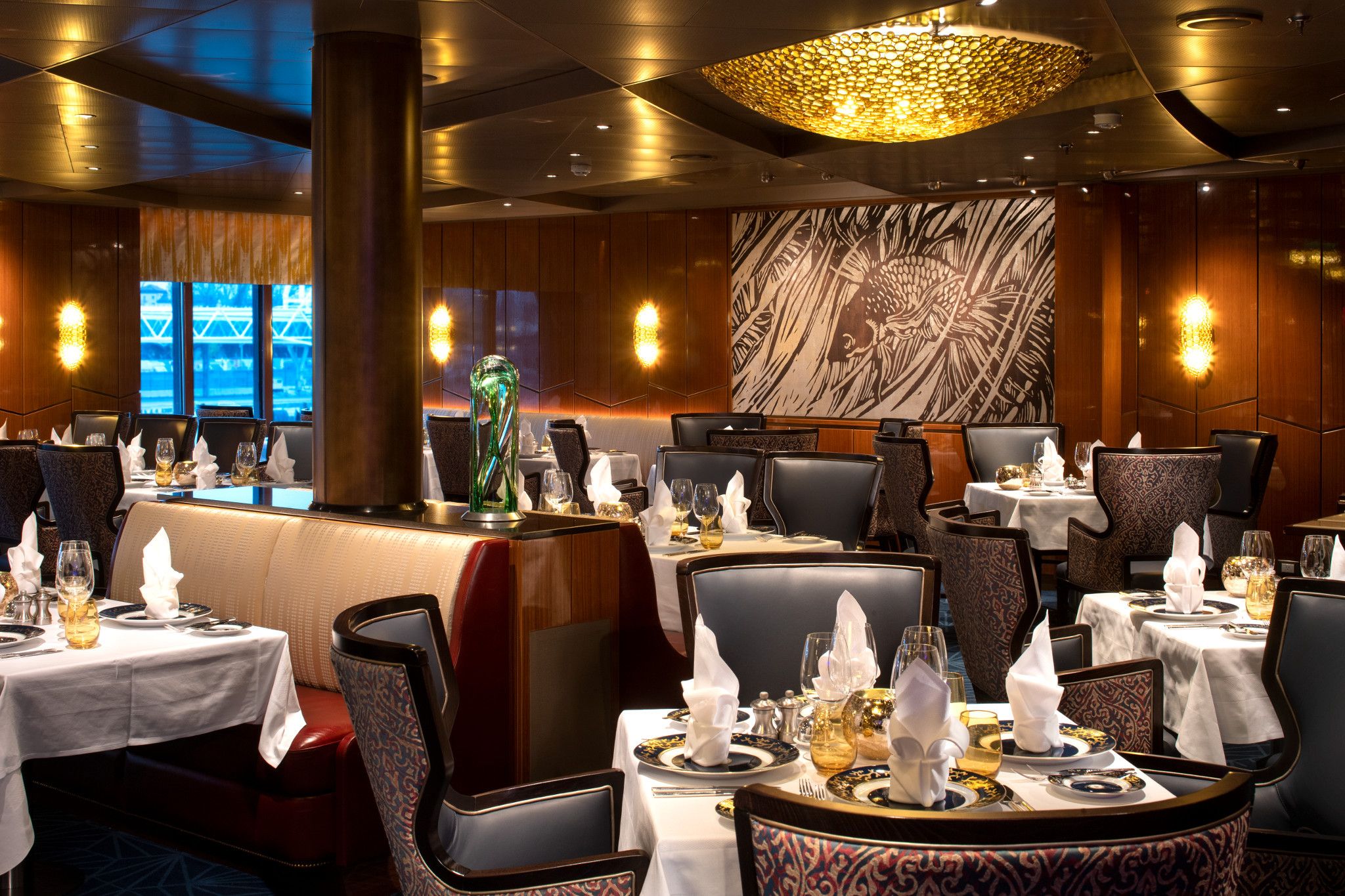
MDR: Stands for the Main Dining Room. The restaurant usually also has a specific name, such as the Sunrise Dining Room and Sunset Forward Dining Room on Carnival Sunshine.
Main seating/late seating: The Main Dining Room usually offers two sittings at dinnertime: main (also known as first or early seating) and a second, or late, seating.
Captain's or officers' table: Each evening in the Main Dining Room, the captain and other officers host tables. It's an honor to be invited to dine at one of these tables. Members of the cruise line's loyalty program are often invited and the cruise director may also recommend passengers for seating at one of these tables.
Related: A beginner's guide to cruise line loyalty programs
Open seating: Open seating means passengers can select where and when they want to eat, and with whom, instead of sticking to a strict early or late seating.
Specialty restaurant: Also known as alternative dining, specialty restaurants -- such as Cagney's Steakhouse aboard Norwegian Cruise Line ships — are smaller dining venues than the MDR. You'll usually pay a per person surcharge or order a la carte off the menu.
Related: 5 reasons you should splurge on cruise ship specialty restaurants
Dress codes
Cruise casual: Most cruise lines have basic dress codes. For daytime, passengers can usually wear casual clothing such as T-shirts, shorts, jeans and sundresses. While you can wear a swimsuit at the pool deck, throw on a cover-up when in other parts of the ship.
Cruise elegant/country club casual: On some cruise lines, they've gotten rid of the formal night but still have a slightly dressier standard for dinner. it's called cruise elegant or country club casual. Women generally wear dresses, blouses and skirts or slacks while men can wear collared shirts and slacks. Suitcoats aren't required but can be worn if desired.
Formal night: Usually once per seven-night cruise or twice on a two-week voyage, it's when the cruise line asks passengers to dress up for dinner. That usually means a black-tie affair, with tuxedos or dark suits for men and gowns or cocktail-style dresses for women.
Onboard events
Captain's cocktail party: Nearly ever cruise itinerary kicks off with a captain's cocktail party and/or dinner. The gathering gives the captain a chance to introduce himself or herself, the officers and pivotal crew members. At the cocktail party, it's customary to receive a free glass of Champagne and appetizers. If the cruise line still has formal night, the event is often paired with the first one of the cruise. So, passengers get dressed up to enjoy the festivities.
Friends of Bill W: A fathering of Alcoholics Anonymous members. Watch the daily cruise planner for meeting times and places.
Friends of Dorothy: A gathering of LGBTQ cruisers. Watch the daily cruise planner for meeting times and places.
Sail-away: Stay topside as the ship departs its embarkation port. The cruise director and band are usually at the pool deck entertaining guests and the drinks start flowing. The sail-away from some home ports, such as Miami and Venice, are particularly beautiful.
Berth: This word is used in two ways in the cruising world: Berth can be the pier at which your ship docks. Or, it can refer to the beds in a cabin. For example, if a cabin sleeps three, it has three berths.
Dock: These structures are built next to the water and provide space for ships to tie-up to load and unload passengers.
Home port: The ports from which a cruise ship embarks and disembarks. For example, Miami, Fort Lauderdale and Port Canaveral are all popular home ports in Florida where ships from many cruise lines depart on itineraries on a regular basis.
Pier: A pier is built with pillars or pilings over the water and is the place where ships moor.
Port of call: A ship's itinerary is made up of ports of call: The places the ship will stop so passengers can explore. Most cruises are a mix of sea days and days in port.
Shorex: This is an abbreviation for "shore excursion" and indicates the activities you can take part in on shore. You can purchase shore excursions directly from your cruise line or arrange them on your own.
Tender port: Some ports do not have facilities for cruise ships to dock. In those cases, they are called "tender ports" and that means you'll board the ship's tender (smaller boat) to transfer from ship to shore.
Transfers: Usually motorcoach transportation from the airport to the cruise terminal and vice versa at the beginning and end of your cruise. You can purchase these transfers from your cruise line.
Cruise-specific terms
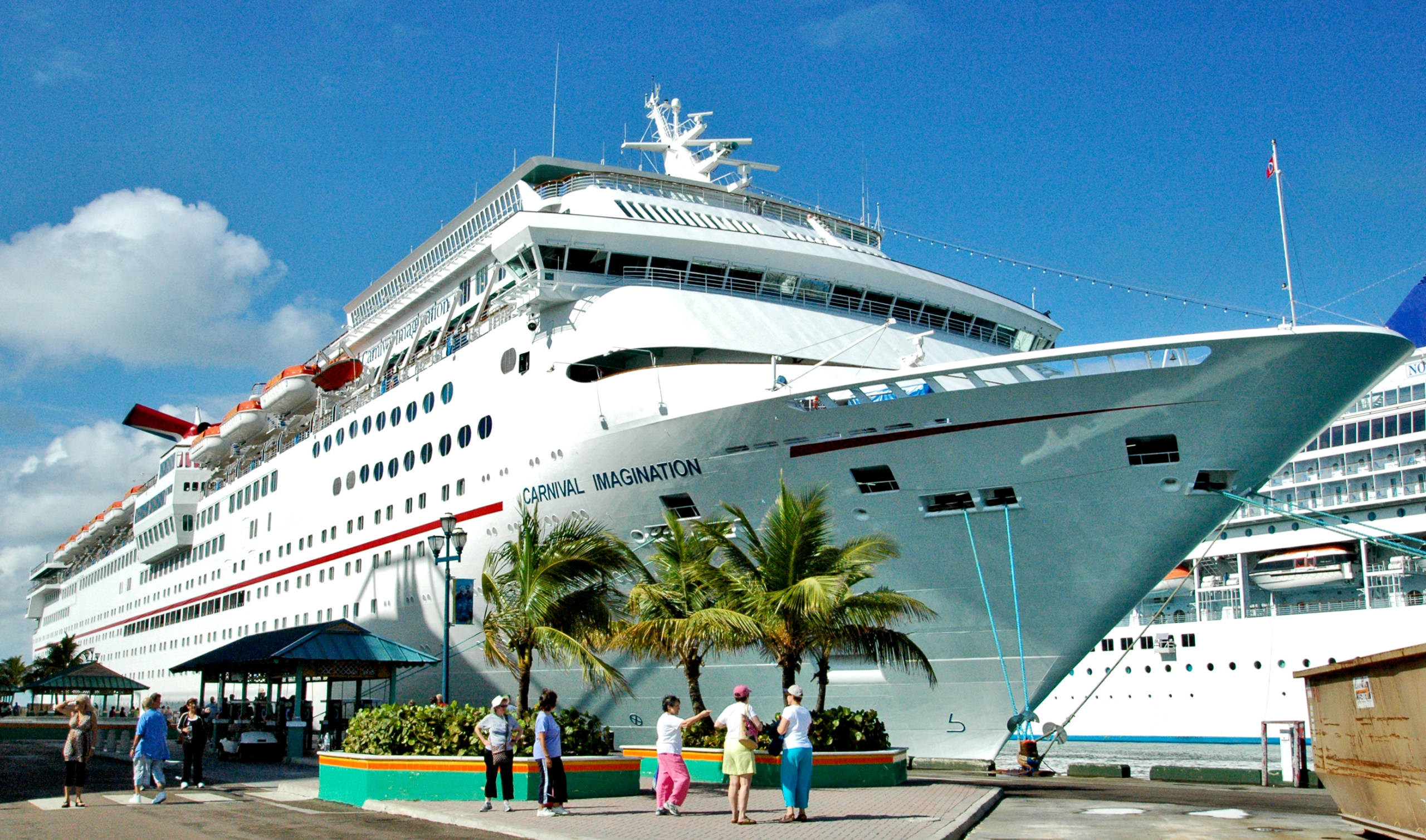
Air/sea: Cruise lines offer air/sea, or fly/cruise, packages that include both your flights to and from the ship as well as the cruise itinerary itself. Transfers between the airport and cruise ship are also usually included in the price.
All aboard: The time when all passengers need to be on board the ship before it sets sail. Ships don't wait for passengers in most circumstances so don't miss your all aboard time!
Back to back: This refers to two or more cruise itineraries that you book "back to back." It's a way to create a longer cruise vacation and see more ports of call. Most cruise lines offer a discount on the second itinerary in a back-to-back booking.
Charter: Cruise ships are the perfect venues for family reunions and corporate gatherings. You can charter an entire ship or just part of it. Sometimes you'll notice gaps in a cruise ship's schedule. Many times, it's because the ship has been chartered and there are no cabins available for anyone outside of that group.
Crossing: Crossings refer to sailings across oceans. Cunard's transatlantic crossings between Southampton, England, and New York City, are legendary.
Cruise contract: Before you book any voyages, carefully read the fine print in the cruise contract. It lists the various rules and regulations, including what recourse, if any, you have when things go wrong.
Cruise documents: About two weeks to 30 days before boarding your cruise ship, you'll receive your cruise documents. The paperwork includes your cruise ticket, airline tickets and hotel confirmations (if you booked them through the cruise line), pre-cruise and shore excursion information and luggage tags. Be sure to download this information from your online account. In most cases, you cannot board the ship without this paperwork in hand.
Cruisetour: This refers to a cruise and land tour package. Princess Cruises and Holland America Line both offer cruisetour packages to Alaska so you can see the best of the state by sea and land.
Related: The ultimate guide to Princess Cruises
Disembarkation: Departing the ship on the last day of the cruise.
Doc dancing: When your cruise documents arrive via mail, courier or your email inbox, many cruisers do the "doc dance" to show their excitement that their cruise will begin shortly.
Embarkation: Boarding the ship for the first time at check-in.
Godmother: Every ship has a godmother who is installed at a ceremony that coincides with the brand-new ship's inaugural voyage. This person, usually a woman, christens the ship and wishes it a lifetime of good luck and special sailings. Godmothers are usually celebrities, royalty or industry executives.
Inaugural voyage: This is the big celebration every brand-new ship has when it first sets sail. It's not necessarily the ship's very first sailing, but it's the one at which a big deal is made and where the godmother christens the ship.
Lanyard: Many cruisers like to stash their cruise card (key to their cabin and method to charge items to their onboard account) on a lanyard. A strap hangs around your neck with a plastic pouch at the bottom to keep your cruise card easily accessible.
Maiden voyage: This is a "first" for the ship. It can be a brand-new ship's very first voyage or a ship can make a "maiden call" on a port it has never visited before.
Repositioning cruise: Repo, or repositioning cruises, happen at the beginning and end of a regional cruising season. It's when the ship repositions from one home port to another. For example, a ship may spend the winter cruising out of Miami for Caribbean itineraries. In the spring, the ship repositions to Barcelona to sail out of that home port for Mediterranean voyages all summer long.
Sea day: A day at which the ship doesn't stop at a port of call. It stays at sea all day and night.
Segments: Longer voyages, like world cruises, are often broken up into shorter "segments." This makes it possible for cruisers to book just part of a longer itinerary.
Turnaround day: This is the day one cruise itinerary ends and another begins. Turnaround days are tough on the crew since they need to see every passenger off the ship safely, clean and prep the ship for the next batch of passengers, and welcome them on board. It's a very long and busy day for the crew.
Upgrade fairy: The upgrade fairy visits passengers on occasion. This is when the cruise line calls you (or your travel agent) to offer an upgrade. They are usually paid upgrades but the discounts make them very attractive.
Waitlist: Sometimes, an entire cruise itinerary or the cabin category you're interested in will sell out. If you want to be notified when cabins become available, ask to join the waitlist. If someone cancels the trip and a cabin opens up, the cruise line will contact travelers on the waitlist.
World cruise: Many cruise lines offer three- to four-month-long itineraries that span the entire globe.
Pricing and the bill
All-inclusive: You'll see the term "all-inclusive" used often in relation to cruise fares. It means "everything's included." However, read the terms since that's usually not quite true. Mainstream cruise lines such as Royal Caribbean and Norwegian Cruise Line generally include accommodations, all meals in the main dining room and buffet (as well as other free restaurants), nonalcoholic beverages and entertainment. Extras like wine and booze, spa treatments, specialty (for-fee) restaurants and shore excursions still cost extra.
Related: The ultimate guide to Norwegian Cruise Line
Future cruise credits (FCC): If you had to cancel or postpone a cruise due to coronavirus, you're probably very familiar with future cruise credits. These are vouchers with a dollar value that the cruise line gives out in certain circumstances, such as when an itinerary is canceled. Cruisers who receive an FCC can rebook on another ship and itinerary of their choosing.
Chit: The "chit" is the bill of sale you'll sign onboard cruise ships when you make a purchase. That could mean buying a drink at the bar, paying for a T-shirt in the boutique or signing up for a shore excursion. On truly all-inclusive lines like Regent Seven Seas Cruises or The Ritz-Carlton Yacht Club, you'll never sign a chit since nearly everything is included in your cruise fare.
Related: The ultimate guide to The Ritz-Carlton Yacht Collection
Guarantee (GTY) cabin: You'll sometimes see GTY fares. This means you can book the cabin category but not select the actual cabin number as you normally would. You are guaranteed a cabin in that category but, if it sells out, you will be upgraded to the next available cabin type. Read this for a complete explanation of cruise cabin guarantee fares and when you should -- or shouldn't -- book one.
Onboard (shipboard) account: At check-in, the ship will open an onboard account for you, and you'll provide a credit card. Charges will be added to this account throughout your cruise. At the end of the voyage, you'll receive an itemized bill. If you're fine with it, the total will be charged to the credit card on record.
Onboard credit: Cruisers love onboard credit (OBC), which is also known as shipboard credit. It's basically money that's deposited into your onboard account that you can spend during your cruise on things like alcohol (if drinks aren't included in your cruise fare), shore excursions and specialty restaurant fees. Cruise lines often lure passengers to book cruises with the promise of OBC. Travel agents also often reward clients by giving them a certain amount of onboard credit to thank them for booking a cruise through their agency.

What is Berthing and Unberthing of a Ship?
Whenever cargo has to be loaded on or discharged from a vessel, the vessel has to be parked and fastened to a quay, wharf, pier, or jetty with mooring ropes to facilitate safe operation.
The berthing of a ship is the process of bringing a vessel to a designated location, such as a quay, wharf, pier or jetty, and securing it in place. The location where a ship is berthed is known as a “berth.” A ship can be berthed port or starboard side on or bow or stem on. The term “berth” also refers to the specific location where a vessel is moored or anchored.
A vessel can berth port or starboard side, with no wind or tide, with the tide ahead, and with the wind onshore or offshore. Berthing operations become easier however with the vessel stemming the current or tide, whichever is stronger moving against the direction of the current and with the wind onshore as this way ensures the elements provide a braking effect.
Maneuvering and controlling the vessel with engines , helm movements, and tug assistance are all part of ship handling operations.
Berthing and unberthing maneuvers necessitate extensive knowledge and skill on the part of the master, officers, and crew, as well as excellent teamwork with the mooring party ashore.
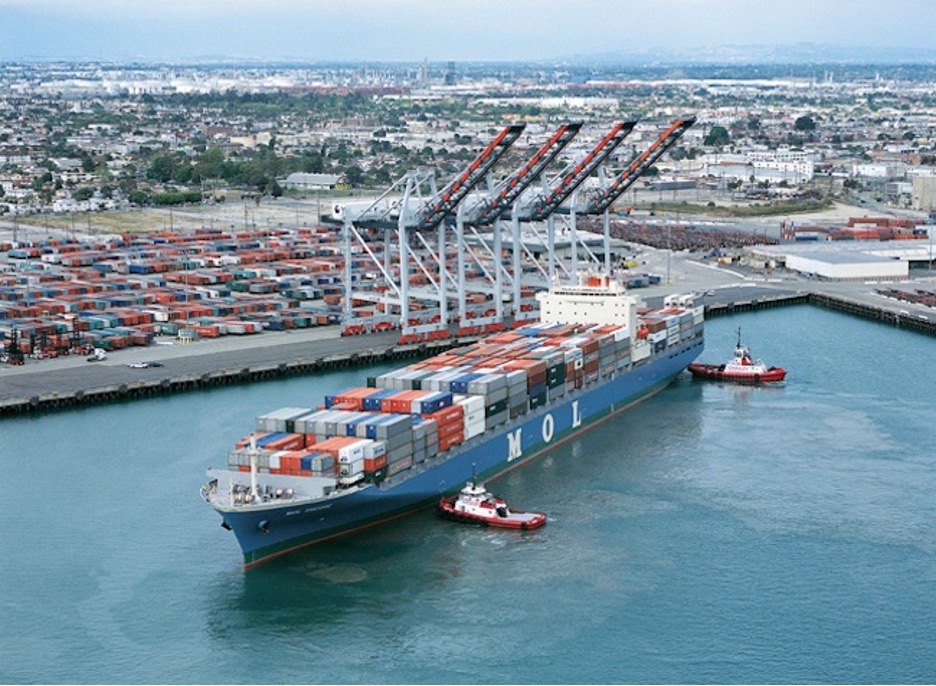
The master, pilot, and tug masters must be well acquainted with local tides, wind conditions, depths, and navigation aids, but they must also consider the maneuvering characteristics of the vessel such as the transverse and axial thrust of the propeller , how the ship responds to the rudder, and how much power she develops when running astern.

The term “berth” can refer to the quay, wharf, pier, or jetty where a ship comes alongside, but it can also refer to a location where a vessel is moored or anchored.
Types Of Berthing Structures
Berthing structure is a general term used to describe a marine structure for the mooring of vessels engaged in cargo operations. They provide a vertical front that allows safe and secure mooring that can then facilitate the unloading or loading of cargo or people from vessels.
Berthing structures are ideally located in the most sheltered part of a harbor or along the lee side of breakwaters. Berth are classified according to how they are constructed, the type of cargo they are expected to handle, and how they are connected to the nearby landmass. Let’s take a closer look at some of them.
By Construction
These berths are distinguished by the physical methods used in their construction. The 2 main types are Solid Structure Berths which are characterized by solid vertical piles that have filler material. They are usually constructed by the use of a gravity wall structure.
The other, Open Structure Berths are characterized by structures that are supported by piles set slightly offshore from the natural extent of the land. Offering high flexibility they however cannot hold too much weight and are therefore limited by the weight of cargo that can be supported by the berth.
These berths are distinguished by the type of cargo they are built to handle. While there are several types-as there are several types of cargo the 3 main types are Container berths, Bulk berths, and General berths. Container berths are berths where container cargo operations take place.
Such berths are usually fitted with specifically designed cranes for particular tasks. With the rapid increase in the size of containerships, these berths are now becoming bigger.
Bulk berths are specially used for handling dry or liquid bulk cargo. Ships that use such berths use pipelines, excavators, or conveyor belts for cargo operations and cargo is usually stored alongside the berthing area e.g. stockpiles.
By Shore Connections.
These berths are distinguished by how they are attached to the shore or the absence of such attachment. There are 2 types – Finger pier berths that are attached to the shore by a narrow fingerlike structure hence the name.
They offer a greater berthing area per length of waterfront and are specially used for small to medium vessels generally passenger ships.
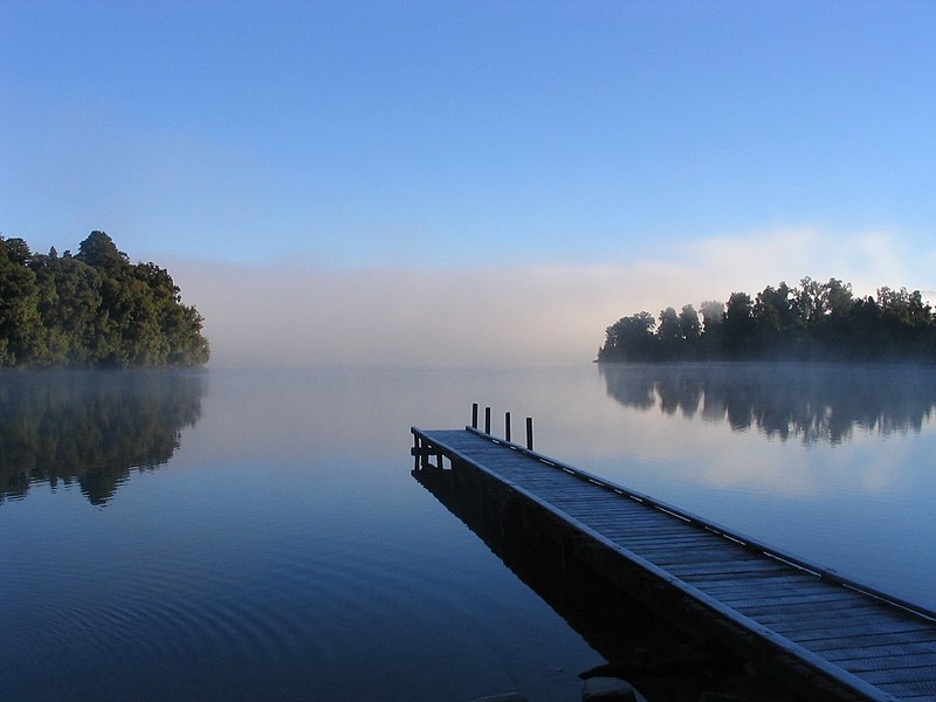
The other type, Offshore Berth comes into practice for precarious cargo handlings such as hydrocarbon oils and gases. This type of berth is situated far from the shore for safety reasons. They have special structures that are termed DOLPHINS for securing vessels. They may be fitted with bollards and fenders according to the configuration of the vessels that are brought in for berthing.
Ship Berthing And Unberthing Procedures
Berthing is the process of bringing a vessel to her berth until she is made fast. Although berthing operations are carried out together by the master of the ship with advice from the pilot and assistance from tugs , maritime tradition always considers this operation as strictly a responsibility of the shipmaster.
As such there are certain actions – the so-called golden rules of berthing- that a Master should always take before and during berthing. The master should always identify probable dangers that are likely to be encountered during the berthing/unberthing operations and how to mitigate them.
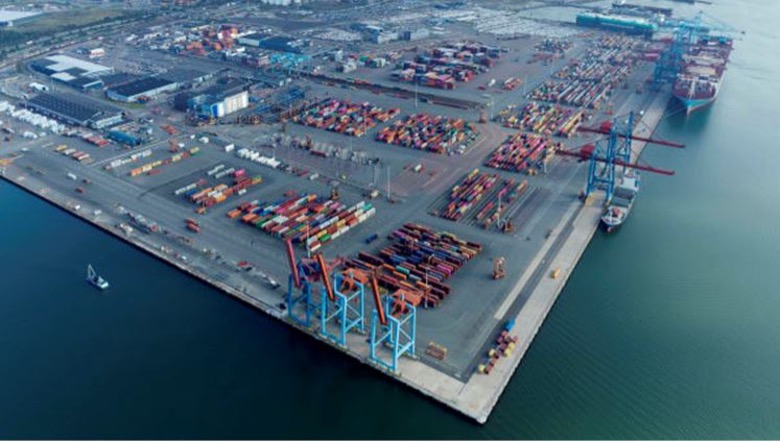
The master and pilot exchange information on their respective expertise master gives the pilot information about his vessel regarding maneuvering characteristics of his own vessel while the pilot briefs the master on the local conditions and how the berthing/unberthing operation will be carried out. This phase is referred to in maritime operations as passage planning .
The situations as to how the berth is approached/departed will be different depending on a lot of factors such as the under keel clearance , weather, wind, current, tide, available berth length, and distances to the vessel’s forward and aft from the berth, size of the harbor basin, etc. Based on these factors the maneuvers and combination of tugs’ usage can be made
Approach the berth at an angle of around 20 0 and a speed of about 2 knots . Tug usage will usually depend on the requirements of the port authority based on the difficulty, the location, general weather conditions, etc., and the availability of bow thrusters on the vessel.
If possible turn on the berth to stem the tide or current whichever is stronger. Tugs are usually made fast before commencing any berthing manoeuvers with the forward tug holding the bow from fouling the jetty while the aft tug pushes the vessel towards the jetty.
Using the engines, tugs, and mooring lines the vessel is drawn alongside the jetty and secured by mooring lines, usually three sets at each end – at the bow headlines, forward breast lines, and forward back springs. At the stern, there are stern lines, aft breast lines, and aft back springs.

Berthing Area on a Ship
A berthing area on a ship is a portion of the ship that has bollards, and mooring winches and where the mooring ropes are fastened and is useful for the process of ship berthing .
On most ships, these areas are the forecastle at the ship’s bow referred to as “fo’c’s’le” in seamanship , and the poop deck . These areas house the equipment used for berthing and therefore receive special care like anti-slip paint etc, etc

Nowadays there are various electronic berthing aids that provide information during a vessel’s approach and final berthing maneuvers. The information that is usually of most value, particularly for very large vessels, is speed over the ground since it is critical to maintaining the kinetic energy of such vessels below that which can be absorbed by the berth. Since this requires a skilled judgment of velocity.
These modern systems guarantee a more safe mooring. By featuring critical information in the real-time display of vessel approach speed and distance, combined with suitable alarms, these modern large ships can safely carry out berthing operations in all kinds of weather.

Difference Between Berthing And Mooring
Berthing is the mooring of a ship within an allotted space at a pier, quay, or similar fixture. Mooring is securing a ship by ropes or chains (cable) to a fixed object. For example a, vessel moors at a buoy or uses a Mediterranean moor to secure a berth.
Difference Between Docking And Berthing
Docking is the mooring of a ship to a pier, quay, or similar fixture while berthing in the mooring of a ship within an allotted space at that pier, quay, or similar fixture. Think of a dock as an entire parking lot, with a berth being an individual parking space within that parking lot.
About the author
I worked as an officer in the deck department on various types of vessels, including oil and chemical tankers, LPG carriers, and even reefer and TSHD in the early years. Currently employed as Marine Surveyor carrying cargo, draft, bunker, and warranty survey.
Leave a Reply Cancel reply
Your email address will not be published. Required fields are marked *
Save my name, email, and website in this browser for the next time I comment.
Latest posts

What Is a TEU In Regards to Marine Shipping?
What is a TEU? A twenty-foot equivalent unit (TEU) is a widely accepted standard unit of measurement in marine shipping, representing the capacity of a standard 20-foot-long container.
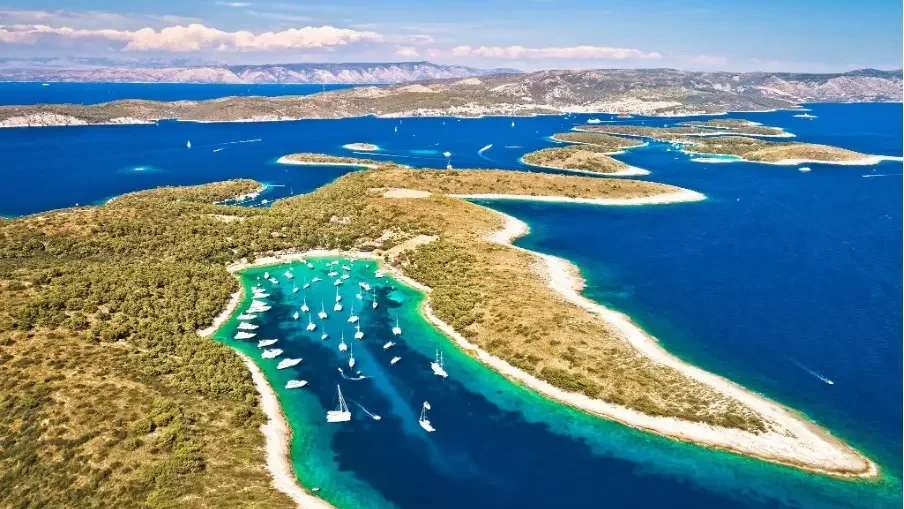
Sustainable and Luxurious: Discovering Split’s Yachting Paradise
Split, the Adriatic jewel, offers a yachting paradise where history meets pristine maritime beauty. Here, to rent a yacht means unlocking the gateway to exploring secluded bays, experiencing cultural heritage […]
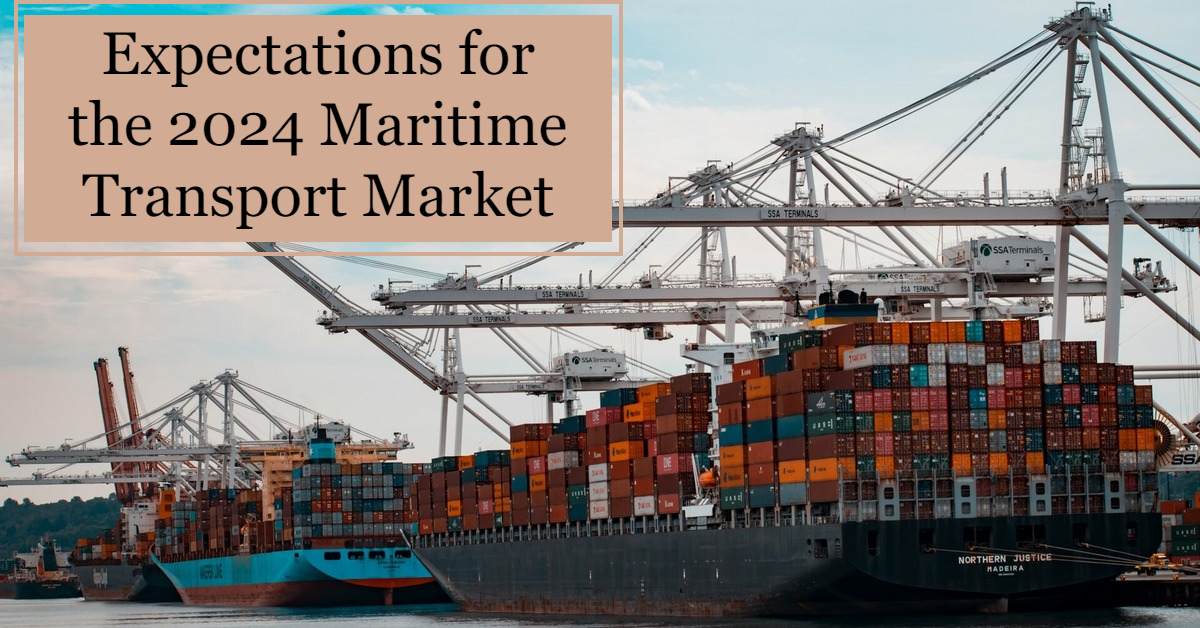
Expectations for the 2024 Maritime Transport Market
What does the 2024 maritime transport market look like? International events have disrupted supply chains and changing regulations keep industry leaders on their toes.
- Ask a Cruise Question
What does lower berths actually mean?
By khlim2005 , May 6, 2018 in Ask a Cruise Question
Recommended Posts

I am about to embark on Dream Cruise - World Dream and was wondering about its terminology.
From official brochure, i found the following:
> Stateroom: 1,686
> Guest Capacity: 3,376 lower berths.
https://info.dream***************/en/cruise-ship/pdf/WDR_Brochure_Ver1.1_EN_Preview.pdf
Initially i thought its just mean double occupancy, however 1686*2 give 3372, so where's the missing four?
Link to comment
Share on other sites.

I am about to embark on Dream Cruise - World Dream and was wondering about its terminology. From official brochure, i found the following: > Stateroom: 1,686 > Guest Capacity: 3,376 lower berths. https://info.dream***************/en/cruise-ship/pdf/WDR_Brochure_Ver1.1_EN_Preview.pdf Initially i thought its just mean double occupancy, however 1686*2 give 3372, so where's the missing four? What does lower berths actually mean?
Probably just that the beds are all on the floor. No upper bunks.
Don’t know that ship but certainly possible that it may have a couple of Suites with 4 beds each to make up your discrepancy. Otherwise maybe they are just bad at math.

Upper and Lower Berths are old terms that apply to the location of beds. Lower Berths are on the floor (deck) while "Upper" Berths are above. On modern cruise ships some cabins will have 1 or 2 uppers berths which either fold out of the wall (bulkhead) or drop down from the ceiling. In most cases they are used for a 3rd or 4th person who is sharing a cabin.

Probably some two bedroom suites.
For those not familiar with the ship:

Thanks all for you response!
I got it, it's due to the 2 (penthouse) suite that come with two bedroom.
So lower berths is the standard double occupancy base on number of beds.
However, over 80% of World dream cabins come with third (sofa turn bed) and fourth (Pull down); that mean its higher berths (number not publish) around 5000 range.
For those not familiar, World dream belong to Dream Cruise, under Genting group. She have another ship, Genting dream, currently homeport Singapore year round. Both ships' new and huge, around 151t.

Thanks all for you response! I got it, it's due to the 2 (penthouse) suite that come with two bedroom. So lower berths is the standard double occupancy base on number of beds. However, over 80% of World dream cabins come with third (sofa turn bed) and fourth (Pull down); that mean its higher berths (number not publish) around 5000 range. For those not familiar, World dream belong to Dream Cruise, under Genting group. She have another ship, Genting dream, currently homeport Singapore year round. Both ships' new and huge, around 151t.
Yes, maximum capacity is less well published figure, but I've found some that list the Dream at 4500 max capacity. This is the maximum number of passengers that are allowed due to lifeboat seating capacity. There will always be more "berths" (beds, pull-out couches, pullmans, etc) than the maximum capacity, to allow those who wish to book more than two to a cabin to have a choice of different categories. So, even on a "sold out" cruise, there will still be bunks unoccupied.
Currently, the two Dreams are 17th and 18th on the list of largest cruise ships, by GT.
Please sign in to comment
You will be able to leave a comment after signing in
- Welcome to Cruise Critic
- New Cruisers
- Cruise Lines “A – O”
- Cruise Lines “P – Z”
- River Cruising
- Cruise Critic News & Features
- Digital Photography & Cruise Technology
- Special Interest Cruising
- Cruise Discussion Topics
- UK Cruising
- Australia & New Zealand Cruisers
- Canadian Cruisers
- North American Homeports
- Ports of Call
- Cruise Conversations
Announcements
- New to Cruise Critic? Join our Community!
Write Your Own Amazing Review !

Click this gorgeous photo by member SUPERstar777 to share your review!
Features & News

LauraS · Started 13 hours ago
LauraS · Started 18 hours ago
LauraS · Started Thursday at 06:37 PM
LauraS · Started Thursday at 04:40 PM
LauraS · Started Thursday at 03:08 PM

- Existing user? Sign in OR Create an Account
- Find Your Roll Call
- Meet & Mingle
- Community Help Center
- All Activity
- Member Photo Albums
- Meet & Mingle Photos
- Favorite Cruise Memories
- Cruise Food Photos
- Cruise Ship Photos
- Ports of Call Photos
- Towel Animal Photos
- Amazing, Funny & Totally Awesome Cruise Photos
- Write a Review
- Live Cruise Reports
- Member Cruise Reviews
- Create New...
- More from M-W
- To save this word, you'll need to log in. Log In
Definition of berth
(Entry 1 of 2)
Definition of berth (Entry 2 of 2)
transitive verb
intransitive verb
- appointment
Examples of berth in a Sentence
These examples are programmatically compiled from various online sources to illustrate current usage of the word 'berth.' Any opinions expressed in the examples do not represent those of Merriam-Webster or its editors. Send us feedback about these examples.
Word History
Noun and Verb
Middle English birth , probably from beren to bear + -th
15th century, in the meaning defined at sense 1a
1667, in the meaning defined at transitive sense 1
Phrases Containing berth
- give (someone or something) a wide berth
Dictionary Entries Near berth
Cite this entry.
“Berth.” Merriam-Webster.com Dictionary , Merriam-Webster, https://www.merriam-webster.com/dictionary/berth. Accessed 11 May. 2024.
Kids Definition
Kids definition of berth.
Kids Definition of berth (Entry 2 of 2)
More from Merriam-Webster on berth
Nglish: Translation of berth for Spanish Speakers
Britannica English: Translation of berth for Arabic Speakers
Britannica.com: Encyclopedia article about berth
Subscribe to America's largest dictionary and get thousands more definitions and advanced search—ad free!

Can you solve 4 words at once?
Word of the day.
See Definitions and Examples »
Get Word of the Day daily email!
Popular in Grammar & Usage
More commonly misspelled words, your vs. you're: how to use them correctly, every letter is silent, sometimes: a-z list of examples, more commonly mispronounced words, how to use em dashes (—), en dashes (–) , and hyphens (-), popular in wordplay, the words of the week - may 10, a great big list of bread words, 10 scrabble words without any vowels, 8 uncommon words related to love, 9 superb owl words, games & quizzes.

145 Cruise Ship Terms and Meanings
Disclosure: This post may contain affiliate links. We may receive compensation when you purchase via my links at no cost to you. See my disclosure for more information.
If you’re new to cruising, you may have noticed there’s a whole world of cruise ship terms and meanings. If it’s your first cruise, it might take a minute to get the hang of the cruise lingo.
We’ve put together a handy glossary of essential cruising vocabulary you need to know before you step on board.
Table of Contents
Cruise Ship Terms
Ship terminology.
Ship: A ship is not a boat. Ships are large vessels intended for ocean or deep water transportation of cargo or passengers.
Cruise Ship: Cruise ships are large passenger vessels whose primary purpose is to transport passengers on leisurely vacations.
Ocean Liner: Their primary purpose is to transport cargo or passengers across seas. For a more in-depth article, visit our cruise ship vs. ocean liner comparison .
Sister Ship: Two or more ships of the same class or nearly identical design. For example, Oasis of the Seas and Allure of the Seas are sister ships.
Deck: A platform or section on a ship. Where buildings have floors, ships have decks.
The Bridge: The main control center of the ship. From here, the captains and officers have control over the entire operation of the vessel.
Itinerary: A sailing schedule with the route and destinations you will visit. The itinerary is viewable before you book but may change due to unexpected events or weather.
Atrium: The main lobby of the ship. Most cruise ship atriums are three or more decks high, and the location you first step onto a cruise ship. The atrium is the hub of the vessel, where you’ll often find elevators, stairs, photo booths, and the guest information desk.

Purser’s Desk: Often referred to as guest services, this is where guests can inquire about anything related to billing or ship information.
Deck Plan: A map of the cruise ship’s decks. Most ships have deck plans on each floor to help passengers find their way around the boat. Deck plans are incredibly important for navigating your way around the ship, especially for your first few days on board.
Lido Deck: The lido deck refers to the pool deck on a cruise ship. The name comes from the Italian word “lido,” which refers to a public outdoor swimming pool or beach. Accordingly, the cruise ship lido deck is home to one or more swimming pools, hot tubs, bars, and restaurants.
Gangway: A gangway is a narrow walkway used by passengers and crew to get on and off the cruise ship.
Muster Drill: The muster drill is a mandatory safety drill completed before sailing. The drill prepares guests for safe evacuation in the event of an emergency and familiarizes passengers with life vests, escape routes, and lifeboats. By law, the muster drill must be performed within 24 hours of departure.
Muster Station: Muster stations are where guests and crew meet in cases of emergency. The muster station is where you will find life vests and your assigned cruise ship lifeboat .
Daily Planner (cruise compass, bulletin, or newsletter): The daily planner goes by many names. It is where you will find the day’s scheduled activities. Many cruise lines have dedicated apps that allow passengers to see the day’s schedule from their devices.
Sailaway: Sailaway is the period of time that your cruise ship departs the cruise port. Cruise ships often host a Sailaway party to celebrate the cruise’s start.
Sailaway Party: Cruise lines often host a Sailaway party on the first night of the cruise to kick off the vacation. The party is generally located on the main pool deck or atrium with drinks, live music, and dancing.
Sea Day: A sea day is a full day when the ship doesn’t visit a port. Most cruises of a week or longer contain one or more sea days. But, they are by no means boring. On sea days, the cruise line will host plenty of scheduled events. If that’s not for you, you can simply relax by the pool.
Cruise Card: On most cruise ships, you’ll receive a cruise card that provides access to your stateroom and acts as a form of ID and payment around the vessel. The keycard eliminates the need to carry cash or credit cards around the ship.
Ocean Medallion: Ocean Medallion is a smart technology offered by Princess Cruises. Ocean Medallion replaces the traditional keycard with a wearable device. The wearable provides all of the same functions as a cruise card with several additional benefits.
Pier Runners: A name for passengers who are late to the cruise ship. You’ll find these unfortunate passengers running to the gangway as they race to make it onto the boat before the ship departs. Tip: Make sure you get back to the ship before the all-aboard time. The cruise ship will leave you behind if you’re late.

Lanyard: A lanyard is a common accessory used by cruise ship passengers to attach a cruise card. It’s both convenient and an excellent way to minimize the risk of losing your cruise card.
Rum Runners: Rum runners were people who, during the time of prohibition, traveled by sea to other countries to transport alcohol back to America. Today, a rum runner is a term used to describe a container used to sneak alcohol onto a cruise ship.
No Sail Order: In March 2020, the CDC introduced a no sail order that paused all cruise ship travel within the US. The no sail order was a temporary measure enacted to reduce the spread of Covid-19.
Cruise with Confidence: When cruising resumed following the Covid-19 pandemic, cruise lines introduced flexible cancelations policies. For most cruises, passengers could cancel up to 48 hours pre-cruise and receive full credit for a future cruise.
Warm Lay Up: During the period of suspended sailing, cruise lines could quickly bring a warm lay-up cruise ship back to service. These ships had reduced crew levels, fuel, food, and other essential items but were ready to return to service with short notice.
Cold Lay Up: A cold layup refers to a cruise ship that is fully shut down. Cruise lines shut down many cruise ships to save on costs during the no sail order. Ships in cold lay-up require more time to be brought back into service.
Funnel (or Stack): The funnel (or stack) refers to the exhaust on a cruise ship. It functions similarly to a chimney on a home and is used to expel engine exhaust. Most cruise ships have several funnels; however, typically, only one or two are functional (the rest are for aesthetics.)

Onboard Credit: An onboard credit is applied to your account and can be used on the ship to make purchases, such as drinks at the shop or souvenirs in the shops. Cruise lines and travel agents often offer onboard credit as an incentive to book, where you’ll receive a set dollar value when you book by a specific date.
Duty-Free: Duty-free refers to items that don’t have taxes. Duty-free purchases often must be declared when you return to the cruise terminal. If you are visiting from another country, you may need to declare duty-free items upon re-entry to your home country.
Godmother (or Godfather) : The Godmother (or Godmother) serves as a spokesperson for a cruise ship. As a tradition, the chosen individual is responsible for christening the ship and bestowing good luck to the new vessel.
Crossing: When a cruise ship sails across a large body of water. Examples include the Atlantic crossing, where a cruise ship may sail from Europe to America.
Double-Dip: When cruise-goers sail on back-to-back cruises. Sometimes one cruise just isn’t enough.
Maiden Voyage (Inaugural Sailing): The first sailing for a new cruise ship, or after a long pause (such as during repairs).
Dress Code: Cruise lines have dress codes that passengers must follow. Luxury cruise lines have strict policies, while most mainstream cruise lines allow casual wear at all times, except for formal nights.
Formal Night: Formal night is a traditional cruise ship experience where passengers dress up for a night of elegance. Some cruise lines have relaxed formal night dress codes , while Norwegian and Virgin don’t have any.
Planning Your Cruise
Embarkation: Embarkation is the process of passengers and crew members getting aboard a ship.
Embarkation Day : The first day of your cruise. It is one of the most exciting times of cruising, and the day you first step foot on the cruise ship.
Port of Departure: The port where your cruise ship will depart.
Disembarkation: The process of exiting the cruise ship. Often the saddest day of the cruise.
Port of Call: A port where your ship will stop.
Shore Excursion: An organized activity or event that passengers can attend in port. You can book shore excursions through the cruise line, a private tour company, or an independent tour operator.

Tender (Water Shuttle): There are some cruise ports where cruise ships can’t directly dock, usually because of a protected coral reef or the ship’s size. At these ports, the cruise ship will anchor a few minutes away from the port and shuttle passengers by tender boat.
Booking Terms
Onboard Booking: You can book your next cruise while on the ship of your current cruise. Cruise lines offer incentives to passengers to encourage onboard bookings. The incentives are one of the best ways to save money booking your next cruise. And, if you booked your current sailing through a travel agent, you can request that your booking is transferred to the agency.
Cruise Fare: This is the basic cost of the cruise. The cruise fare covers the cost of standard meals, accommodations, activities, and more. Many cruise lines offer basic wifi and drink packages bundled with the cruise fare.
Deposit: When you book a cruise, many cruise lines require a deposit to secure the booking. Each cruise line has different refund rules, and you may be unable to recoup the deposit if you cancel.
Final Payment: As the sailing date approaches, you will be required to make the final payment. The final payment is typically due within 70 to 90 days of the sale date. However, as policies vary, it’s always best to check with the cruise line.
Cruise Contract: You will be asked to sign a cruise contract when booking a cruise. The contract includes a set of terms and conditions that apply to passengers and the cruise line. The agreement is where you will find the refund policy, final payment date, and cancellation terms.
Gratuities: Gratuities, or tips, are customary on cruise vacations . Cruise lines charge gratuities on a daily, per-person basis. Most major cruise lines have automatic gratuities split among the hardworking staff, except bartenders and spa staff. If you don’t pay the gratuities in advance, they are charged to your onboard account and paid at the end of the cruise. Bartenders and spa staff receive tips through the gratuities charged on drinks, drink packages, and spa treatments.
Pre-paid Gratuities: Pre-paid gratuities are paid in advance of sailing. Paying in advance makes it easier to budget and plan for a cruise.
Solo Supplement: Most cruise ships charge a fee for solo bookings in regular staterooms. The added fee is known as a solo supplement. When a solo traveler books a cabin, the cruise line misses out on additional revenue from having two people in a stateroom.
All-Inclusive: All-inclusive cruises are great if you prefer to have all your expenses known before sailing. The all-inclusive definition varies by cruise line but typically includes gratuities, wifi, and a basic drink package.
Drink Package: Most cruise lines offer drink packages that entitle guests to order unlimited drinks. Drink packages typically have rules such as price limits and drink restrictions. If you don’t want to purchase the drink package, you can still purchase individual drinks from the bars, lounges, and restaurants.
Online Check-In: Before embarking, cruise ship passengers can complete online check-in and print any required documents.
Cabin Terminology
Cabin: Your room onboard the ship.
Stateroom: Another term for your room on the ship.

Interior Stateroom: This is a cabin located on a ship’s interior. Interior cabins don’t have windows (portholes) or balconies.
Oceanview Cabins: A cabin with a view of the ocean through a porthole or large window.
Balcony Cabins: As the name suggests, this is a stateroom with a balcony.

Suites: The largest and most luxurious cabin category on a cruise ship. Passengers who book suites often receive additional perks such as a butler, private lounge, bonus loyalty points, and free specialty dining.
Guarantee Cabin: This refers to booking a cabin category without choosing a specific room location. These cabins are lower priced, but with the drawback of having the location assigned by the cruise line. If you’re not picky about the location of your stateroom, guarantee cabins on cruise ships are a great way to save money on your cruise vacation.
Obstructed View Stateroom: You may have an ocean view or balcony cabin, but that doesn’t mean you’ll have unobstructed ocean views. Obstructed view staterooms have an object, such as equipment or a lifeboat, in the direct view of your window or balcony. These staterooms cost less than those with unobstructed views.

Veranda: Veranda is another word term used to describe a balcony. The word originates from the Hindi varandā, but it is related to the Spanish baranda, meaning “railing.”
French Balcony: French balconies are located on the interior of an outside-facing stateroom. They are often a result of modifications to older cruise ships or added as a lower category cabin. Though termed a balcony, it’s more of a wall-to-wall open window.
Virtual Balcony: Virtual balconies are wall-to-wall and floor-to-ceiling screens providing the illusion of a balcony for interior staterooms. They project real-time video of the outside, so your virtual balcony displays precisely what you would see from a real balcony.

Virtual Porthole: Like a virtual balcony, a virtual porthole projects real-time outside video. They provide interior cabins with the feeling of a porthole. Despite sounding tacky, they provide an extraordinarily realistic view.
Pullman Bed: Pullman beds are like little bunk beds where the top bed pulls down from the ceiling or wall above the main bed, accessible by a ladder. If you book with three or four people to a cabin, your cabin may have a Pullman bed.
Double Occupancy: Double occupancy indicates two people booked in a stateroom. The advertised cruise fare is often based on the double occupancy rate. Additionally, cruise lines often use double occupancy as the measurement of passenger capacity, as it is unrealistic that every stateroom would be booked at maximum capacity (e.x. two passengers staying in a cabin that could hold four.)
Single Occupancy: Most cruise lines charge a single occupancy rate to solo cruisers. The single occupancy rate adds a solo supplement. The total cruise fare for single occupancy is often near the cost of booking two people in a cabin.
Solo Cabins or Studio Cabins: Some cruise ships have staterooms dedicated to solo travelers. Solo cabins or studio cabins are comparably smaller than typical cabins, but they are cheaper as they forgo the solo supplement. The best cruise lines for solo cruisers feature solo staterooms.

Triple and Quad Cabins: As the name suggests, triple and quad cabins can accommodate three or four passengers.
Towel Animals: One of my favorite memories from cruising as a child is returning to the cabin and finding a beautiful towel animal on the bed. Room stewards often create cute towel creations to put a smile on your face. You’ll usually find them on family-oriented cruise lines .
Types of Cruises
Charter: People or tour operators may book out an entire ship to host a special event.
Repositioning Cruise: A sailing occurs when a cruise ship transfers to another part of the world. For example, a cruise ship offering Caribbean itineraries may reposition to the Mediterranean for two months. Repositioning cruises are often cheaper than regular itineraries as cruise lines look to fill the vessel to earn revenue from an expensive voyage.
World Cruise: As the name suggests, a world cruise offers an extensive itinerary that sails around the globe and visits several continents. World cruises may last anywhere from two to twelve months.
Canal Cruise: A type of cruise that sails through a canal. Popular canal cruises such as the Panama canal take passengers on a unique voyage through several ship locks.
Barge Cruise: The smallest-sized cruise ship available. They usually consist of six to sixteen people. The cruise acts as a floating hotel able to traverse very shallow and narrow waterways.
Expedition Cruise: Expedition cruises offer sailings to the most remote locations in the world. These cruises emphasize the journey, adventure, and experience with a special focus on adventurous shore excursions.

River Cruise: A river cruise is sailing along inland waterways. In our opinion, river cruising is totally underrated. We love the calmness of river sailing, intimate ships, and uniqueness of itineraries. If you’ve only sailed on ocean cruises, you should definitely take a look at river cruising.
Day Cruise: A cruise that sails for a limited number of hours and does not include an overnight stay. Day cruises are typically limited to media and press tours.
Transatlantic: A cruise that sails across the Atlantic. Before airplanes, transatlantic sailings were the only transportation between Europe and North America. The ocean liner Queen Mary 2 regularly sails traditional transatlantic voyages from South Hampton to New York.
Cruise to Nowhere: A cruise itinerary that consists only of sea days before returning. They are typically only a few days long and don’t call in any ports.
Closed-Loop Cruise: A closed-loop cruise starts and ends in the same port . For example, a voyage that departs and returns to Miami, Florida, is an example of a closed-loop cruise.
Open-Jaw Cruise: An open jaw cruise starts and ends at different ports. Passengers embark at one port and disembark in another. For example, a voyage that departs Seattle, Washington, and arrives in Ketchikan, Alaska, is an open-jaw cruise.
Cruise Ship Dining Terminology
Assigned Seating: Many cruise lines provide assigned tables in the main dining room. The assigned seating is usually dinner-specific.

Early and Late Dining: Some cruise lines with assigned seating split dining times into two seatings. The first and second seating is often referred to as early and late dining.
Open Dining (or Open Seating): Many cruise lines offer open seating, whereby passengers may eat in the main dining room without a specified time for seating. Norwegian Cruise Line only offers open dining, which they call Freestyle dining. Other cruise lines, such are Princess Cruises and Celebrity Cruises, provide passengers with the option of set dining times or open dining. While open dining offers more flexibility, you may need to wait in line for an empty table.
Specialty Restaurants: Specialty restaurants refer to alternative dining choices that aren’t included in the base cruise fare. Specialty restaurants offer an intimate dining experience with a better culinary experience. The ship charges the meal to your onboard account when eating at a specialty restaurant.

Maitre d’Hotel (Maitre d’, for short): The Maitre d’ is in charge of the restaurant on the ship. This person greets customers, supervises the restaurant staff, and ensures that the experience meets the highest quality standards.
Captain’s Table: As the name suggests, the captain’s table is a chance to enjoy dinner with the ship’s captain.
Ship Crew Member and Staff Terms
Captain: The ship’s captain holds the ultimate command and responsibility of the vessel. In addition to steering and navigating the boat, the captain is responsible for the safety of all passengers and crew.

Cruise Director: You’ll often find the cruise director leading activities around the ship. During your sailing, the cruise director acts as the face of the cruise, and it’s their job to be friendly and outgoing.
Cabin Steward or Cabin Attendant: The cabin steward is responsible for cleaning and maintaining your stateroom. These crew members work hard to keep your room tidy and clean for when you return.
Deckhand: The deckhand is responsible for maintaining the exterior of the ship. They are responsible for general cleaning and maintenance of the deck areas and ship gear. They are also the ones responsible for loading and unloading supplies and equipment.

Bosun (Boatswain): A bosun is the highest-ranking, non-officer role in the deck department. Among their responsibilities, a bosun supervises deckhands, coordinates work, coaches staff members, maintains ship appearance, and overseas the mooring and anchoring operations.
Purser: The purser is responsible for handling the ship’s finances. Specifically, the chief purser oversees the staff who manage money, passenger accounts, and guest services.
Porter: The porter is responsible for helping passengers with their luggage. They are employed by the port authority, not the ship.
Passenger-Crew Ratio: The ratio of the number of passengers to the crew. The ratio gives a quick feel for the quality of service on board a cruise ship. In theory, the lower the ratio, the better the service. A ratio of 1:1 (a ratio only seen on luxury ships) means that there is one crew member for every passenger on board the vessel. Ratios of 3:1 are considered good.
Cruise Terminal: The building where you check-in for your cruise and board your ship . Like how airplanes have airports, cruise ships have terminals or cruise ports.

Port: A maritime facility with loading areas for ships to load and unload passengers and cargo.
Home Port: The primary cruise port for a ship. The home port is the port where the cruise ship begins most cruise itineraries.
Cay (Pronounced “kay” ): A small, sandy island with a low elevation on the surface of a coral reef.
Marina: A dock or basin that provides mooring services for small boats and yachts.
Dry Dock: A dock that can be drained of water to allow for construction, maintenance, and repair work on ships.

Shipyard: A facility where ships are built and repaired.
Navigational Terms
Port: When facing towards the front (bow) of the ship, the port is on your left. If you face the back of the boat (aft), the port is on your right.
Starboard: When facing towards the front (bow) of the ship, the starboard is on your right. If you face the back of the boat (aft), the starboard is on your left.
Insider Tip
If you need help remembering port and starboard, check out our article: How to remember port and starboard on a cruise ship .
Bow/Forward: The front of the ship.
Stern: The rearmost part of the exterior of the ship.
Aft: The rearmost part of the interior of the ship.
Prime Meridian: Prime meridian is the earth’s zero of longitude (0º), which passes through Greenwich, England. Together with the anti-meridian, they divide the earth into two hemispheres.
Nautical Twilight (Nautical Dawn): Nautical twilight begins in the morning when the sun’s center is between 6 to 12 degrees below the horizon. During nautical twilight, the stars and horizon are visible, even on moonless nights, allowing sailors to take reliable star readings for navigational purposes.
Celestial Navigation: Navigation by observing the sun, moon, and stars. Before advancements in technology, celestial navigation was the primary method for sailors.
Nautical Terminology
Midship: The middle of a ship or boat.
Overall Length: The length of a ship from bow to stern.
Beam: A measure of the width of a ship or boat.
Gross Tonnage: A measure of a ship’s overall internal volume. Gross tonnage is determined by dividing by 100 the contents, in cubic feet, of the vessel’s enclosed spaces.
Wake: A moving ship generates a tace on the water’s surface. The frothy white water trailing a moving vessel is called the wake. Watching the ship wake as you sail away from the port can be mesmerizing.

Berth: The term berth has a dual meaning. The first is a name for a bed on a ship. The second is a space where a vessel may be moored.
Helm: The helm is the position from which the captain steers the vessel. It also refers to the lever or wheel that controls the rudder on a ship.
Hull: The main body or structure of a vessel. The hull includes the bottom, sides, and deck of the ship. The watertight hull is how cruise ships float .
Porthole: A small exterior window on a ship. Portholes are usually circular.
Mast: On a sailboat, the mast is a pole rising vertically from the hull, which serves to support the sail. There is only one mast on a small sailboat, but larger boats have several.

Mainsail: The largest and most important sail on a boat. On a square-rigged vessel, the mainsail is the lowest and largest sail on the mast.
Boom: The boom is a thick pole that extends at a 90-degree angle from the mast. It anchors the bottom of the sail and provides sailors with greater control and maneuverability.
Rudder: The rudder is an underwater verticle blade positioned at the vessel’s stern. It is controlled at the helm and is the primary method of steering. When the captain turns the wheel, it rotates the rudder. As the rudder rotates, the vessel’s head turns in the same direction.

Mooring: Refers to a permanent structure to which a ship can attach.
Docking: The act of mooring a ship at a dock.
Latitude: A geographic coordinate that specifies the north-south position on the earth’s surface. Latitude lines run in parallel lines from east to west. When looking at a globe, latitude lines are horizontal. The latitude angle ranges from 0° at the equator to 90° at the poles.
Longitude: A geographic coordinate that specifies the east-west position on the earth’s surface. Latitude lines run in parallel lines from north to south. When looking at the planet, longitude lines run vertically.
Equator: The equator is a latitude circle dividing the earth into the Northern and Southern hemispheres. It is located exactly halfway between the North and South poles. The equator’s location is at 0 degrees latitude.
Flag Country: The country where the ship is registered. You can quickly identify the ship’s flag country by looking at the ship’s stern, where you’ll usually find a flag and the country’s name.
If you are curious about why cruise ships have a different flag country, check out our article: Why do cruise ships sail under foreign flags?
Knots: Knots are a unit of speed used by ships and are short for nautical miles per hour. One knot is equivalent to 1.15 land miles per hour. Cruise ships have cruising speeds of around 22 knots .
Provisions: Refers to supplies needed on the ship
Lock: A device used to raise and lower ships between stretches of water at different levels.
Zodiacs: Small inflatable boats used for water bases shore excursions. Zodiacs are named after the company that invented them. The inflatable boats were created in the 1930s for the military but are now commonly used in tourism.
Stabilizers: Stabilizers are fin-like devices mounted to the ship’s hull beneath the waterline. They help counter the roll of a vessel due to waves or wind and provide a smoother ride for passengers.

Anchor: A heavy object attached to a rope or chain used to keep a vessel stationary.
Galley: The galley is another name for the kitchen of the ship. Many cruise lines offer tours of the galley, which provide a glimpse into the behind-the-scenes world hidden from passengers.
Cruise Industry Acronyms
OBC (Onboard Credit): Onboard credit can be used like cash for purchases on the ship. You might receive onboard credits as an incentive offered by a travel agent or cruise line.
GTY (Guarantee Cabin): An abbreviation for guarantee cabin (see the definition above for guarantee cabins).
FCC (Future Cruise Credit): Future cruise credits work little like store credits. Cruise lines offer FCCs in place of refunds which can be redeemed when booking a new sailing. Always read the fine print as they almost always have expiry dates.
TA: Short for a travel agent.
Cruise Industry Organizations
CLIA: The Cruise Line International Association is the world’s largest cruise industry trade association based on the number of passenger ships operated by CLIA members. Among other responsibilities, the CLIA’s focus is to set standards for cruise lines and represent the interests of the cruise industry. According to their website , “CLIA is the global organization that fosters our members’ success by advocating, educating, and promoting the common interests of the cruise community.”
NOAA: The National Oceanic and Atmospheric Association is part of the US Department of Commerce. Their responsibilities include “daily weather forecasts, severe storm warnings, and climate monitoring to fisheries management, coastal restoration and supporting marine commerce.”
Marcello De Lio
Leave a Reply Cancel Reply
Your email address will not be published. Required fields are marked *
Name *
Email *
Add Comment *
Save my name, email, and website in this browser for the next time I comment.
Post Comment
This site uses Akismet to reduce spam. Learn how your comment data is processed .
Trending now


- Owners and Operators
- Supply and Agency
- Equipment and Services
- Classification Societies
- Ship Brokers
- Trade Finance
- Ship Finance
- Other Commodities
- Operational Efficiency
- Risk identification
- Compliance Adherence
Data Services
- Seasearcher Advanced Risk & Compliance
- Predictive Fleet Analytics
- Seasearcher Risk & Compliance
- Seasearcher Container Tracker
- Seasearcher Insurance
- Other Seasearcher Services
- Lloyd's List
- Insurance Day
- Lloyd's Law Reports
- Marketing Solutions Marketing Solutions
- Risk & Compliance
- Trade, Trends & Technology
- Regulations & The Changing Industry
- Thought Leadership
- Data Storytelling
- Focused Webinars
- Our History Our History
- ISO 9001:2015
- Work With Us Work With Us
- Announcements Announcements
- Product Catalog Product Catalog
- Contact Us Contact Us
- Supplier Code Of Conduct Supplier Code Of Conduct
- Search Site
- Search by Keyword
DEMYSTIFYING PORTS, TERMINALS AND BERTHS AND THEIR ROLE IN MARITIME TRADE
More data storytelling, the operations at ports are increasingly busy and complicated. but all that complexity can be clarified and understood with reliable and accurate data..
The key to global trade
Ports are at the very heart of modern supply chains and transport networks. They’re the nerve centres where goods and vehicles move from sea to land or land to sea. Without them international commerce would grind to a halt and, due to increasing demand, they’re also increasingly complex.
In ports, cargo is loaded and unloaded, goods are transferred for storage or transport, crews and personnel are changed and vessels get fuelled and serviced. Then there are a host of administrative and management tasks as well.
But what exactly are these places, how do they differ, and what happens in each? Read on and we’ll demystify these vital hubs of commerce and transport.
What are ports?
A port is an area in a harbour, or on another suitable piece of land, where vessels and vehicles can be sheltered, serviced, loaded and unloaded. Different forms of freight transport—water, rail and road—converge here.
These trade hubs tended to grow where there was a safe harbour for fishing in a location convenient for transporting people and goods. Today, many of the world’s most thriving cities, like Shanghai, Singapore and New York owe their success to their origins as ports.
Monofunctional ports handle a limited range of commodities—often large, unpackaged ‘bulk cargoes’ of raw materials, in either dry or liquid form. To take one example, many ports in the Persian Gulf specialise in sending the region’s oil to places around the world.
In contrast, polyfunctional ports handle a wider range of goods, frequently alongside other industrial activities. The materials are often intended for ‘transshipment’—i.e. they will be sent further afield onboard other vessels.
Polyfunctional ports are likely to include special and general cargo facilities for containers, bulk cargoes or raw materials. They can accommodate different types of vessels usually carrying inbound goods.
Let’s look at some of the other main categories of ports:
Seaports are built at the coast and they’re the most common type of port for commercial shipping and transport. There are three main subcategories of seaport.
Cargo ports
Common categories of commodities like liquid fuels, chemicals, food grains, timber, technology or cars require different methods of loading and unloading from ships to land transportation. Each port will be equipped with machinery and facilities that suit the cargo that’s handled there.
All-in-one ports process multiple forms of cargo. Meanwhile, a smart port is a modern facility with embedded technology and automation to keep it operating smoothly.
Cargo ports are also sometimes known as ‘bulk ports’, ‘break bulk ports’ or ‘container ports’. Not all of them have deep enough water to accommodate the biggest ships; larger vessels require deep water ports.
Ports of call
Also known as a mid-way port, this is where a ship stops to top-up its fuel supplies, carry out repairs or transfer some cargo.
Cruise home ports
As the name suggests, these ports specialise in dealing with cruise ships. They have facilities for passengers to board and disembark safely and they’re likely to be very busy, due to a continuous stream of travellers, crew and service teams.
Inland ports
Sometimes called ‘dry ports’, inland ports manage cargo, passengers or both on smaller waterways like rivers or lakes. Sometimes they have access to the sea via canals or natural waterways.
Inland ports are usually shallower than seaports. They handle ferries and smaller boats, but not deep-water docking. They may also have machinery to load and unload cargo, warehouses for parts and supplies, storage facilities for containers, distribution centres and freight logistics operations.
Fishing ports
Fishing ports are generally hubs for commercial fishing, but sometimes they provide services for recreational fishing too. A fishing port can be inland or by the sea, but it’s likely to have facilities to process and store fish, alongside buildings for administration and other operations.
What are terminals (and how do they differ from ports)?
A port is the whole area where ships and vehicles are sheltered, serviced, loaded and unloaded, while a specific type of cargo is taken to be handled at a terminal. For example, a port may contain separate terminals for containers, ‘Ro-Ro’ (roll-on-roll off for cars and goods vehicles), oil and gas, or bulk cargo.
Equally, multi-purpose terminals handle a variety of cargo. These facilities need not necessarily be located at the port. Rail or road connections are sometimes used to transfer goods to a terminal at an inland location.
What are berths?
The area where a ship is moored is called a berth. Each port or terminal will have several berths with equipment for handling cargo, as well as open or closed storage areas, so cargo can be discharged, loaded and stored.
The area immediately around the berth is called the quay.
Remembering the basics
The difference between commercial operations at our coasts are easier to remember if you think about the following hierarchy.
- A natural or manmade harbour may contain one or more ports.
- E ach port has terminals to handle different types of cargo.
- Each terminal will include one or more berths for loading, unloading, servicing, embarking and disembarking.
Activities: discharge of cargo and loading
There is a wide variety of different infrastructure and interfaces for vessel access and land access in ports across the world. To accommodate a particular vessel, a port must have suitable tidal range and sufficiently deep channels and berths.
The tidal range is the difference between high and low tides. Most ships can’t operate properly if these vary by more than three metres.
As regards depth, a standard Panamax ship of 65,000 deadweight tonnes will require the water to be 12 metres deep. However, 70% of world ports have a depth less than 10 metres and are unable to accommodate ships more than 200 metres in length.
Size of ports and access links
A port’s current or future success is often determined by the amount of space available to support its maritime operations.
Even if it has good access to the sea and deep waterways, there may not be enough available land for development and expansion. This is particularly relevant now that a greater volume of container traffic, or ‘containerisation’, has increased the need for space.
The infrastructure at different ports varies widely. Modern container terminals often require cranes called ‘portainers’ that lift containers, stacking yards with gantry cranes and vehicles like ‘straddle carriers’ that move containers around the terminal. Refrigerated containers, or ‘reefers’, need separate stacking areas. Many terminals now have sophisticated ‘smart’ facilities that use automation rather than manual work.
Among other factors, a port’s value will depend upon its quality of access by land to industrial operations and markets. The most successful will need efficient systems to distribute goods inland, like river barges, good rail links and roads that are suitable for heavy trucks.
As ports become busier, moving ever greater quantities of commodities, the pressure on land increases. Due to these considerations, and concerns about the environment, many operators now prioritise rail and barge links, because they are less prone to congestion and more environmentally friendly than road transport.
Time in port, congestion and delays
The length of time that vessels remain in port varies widely.
It may take from 21 to 36 hours to load or offload oil from an oil tanker, for example. The speed of this process will depend upon the size of the vessel and the configuration of the pumps, both on the ship and on the berth. The process is further complicated by the need to either add or remove ballast, as the cargo is unloaded or loaded.
It can take between one to three days to unload container ships, depending on their size and capacity. Many have 10,000 containers or more on board.
For carriers of bulk cargo, the time will vary from between 12 hours to several days, in line with the complexity of loading or unloading, the size of the vessel and which equipment is needed. ‘Geared carriers’ and ‘self-dischargers’ have equipment on board for loading and unloading, while ‘gearless carriers’ rely exclusively on machinery in the port.
Critically, problems cause delays and delays cost money. The complexity of the operations in ports means that if something unexpected happens, there are likely to be knock-on effects.
For instance, maintenance issues may cause a vessel to spend more time in berth than anticipated. Its activities will then need to be rescheduled, which is likely, in turn, to affect the schedule of ships waiting to take its place. Similarly, an error in a bill of lading potentially means delays, rearranged operations and, ultimately, backups of traffic and congestion on road or rail.
Because estimated times of arrival (ETAs) at the vessel’s next destination are still often logged and updated manually, they tend to be rough estimates that could become quickly outdated if there is a problem at the current location that will cause delay. There can be significant uncertainty not only around when a vessel might actually enter or leave its berth, but the knock-on effect is additional uncertainty around when that vessel should arrive at its next destination. It can be an expensive challenge for many businesses that rely on accurate ETA information.
The emergence of geospatial ports data
Today, however, greater accuracy can be delivered by advanced maritime data. By plotting ports, terminals and berths with more granular location data, a vessel is no longer identified as being simply ‘in port’ or ‘not in port’. The vessel can be tracked to individual terminals and berths or seen to be on the move between different areas of a port as its sequence of activities are carried out – whether these activities are planned or unplanned, and whether or not there has been a manual update to the ETAs that are logged. It’s this kind of visibility within ever-growing and more-complex ports that is increasingly helpful for shipping and ship servicing businesses, as well as businesses that are moving their materials and goods by sea.
We understand how to respond to the need for more granular location data. That’s why our Geospatial Ports Database is the most comprehensive source of data on the precise location of vessels at port, terminal or berth level. For businesses that want greater accuracy of arrival and departure times and possibility of delays, or for those who need to calculate how and when port congestion will either occur or be cleared, this is vital insight.
Key takeaways
- Ports, terminals and berths are at the heart of global supply chains and transport networks.
- A natural or manmade harbour may contain one or more ports, for sheltering vessels, loading and unloading and the onward transportation of goods.
- Terminals and berths are vital infrastructure in ports, providing facilities for handling cargo and the space to moor vessels for loading and unloading.
- It’s difficult to calculate the length of time a vessel will need to remain in port, thanks to the complexity of loading and unloading operations and the uncertainty of other logistics.
- Greater granularity of data around port locations is increasingly important to shipping related businesses for efficient operationsOur Geospatial Ports Database provides highly accurate information on the location of vessels at port, terminal or berth.

Geospatial Ports Database: Precisely Pinpoint Vessels In Vast Ports

Thanks for getting in touch
We have received your request and we will get back to you soon.
For general enquiries, please contact us below
Terms and Conditions
Privacy Policy Terms & Conditions
Thank you for providing your details
Your request is being processed.
Please complete your details
Tems and Conditions
We will call you back as soon as possible.
Request a callback
Thank you for requesting a demo, request a demo, thank you for requesting a consultation, request a consultation.
You will receive a confirmation email with access details
Please register your details
We use cookies to help provide you with the best possible online experience. Please read our Privacy Policy and Terms & Conditions for information about which cookies we use and what information we collect on our site. By continuing to use this site, you agree that we may store and access cookies on your device. Cookie Policy
Cookie Preference Center
When you visit any website, it may store or retrieve information on your browser, mostly in the form of cookies. This information might be about you, your preferences or your device and is mostly used to make the site work as you expect it to. The information does not usually directly identify you, but it can give you a more personalized web experience. Because we respect your right to privacy, you can choose not to allow some types of cookies. Click on the different category headings to find out more and change our default settings. However, blocking some types of cookies may impact your experience of the site and the services we are able to offer.
Manage Consent Preferences
Strictly necessary cookies, performance cookies, functional cookies.
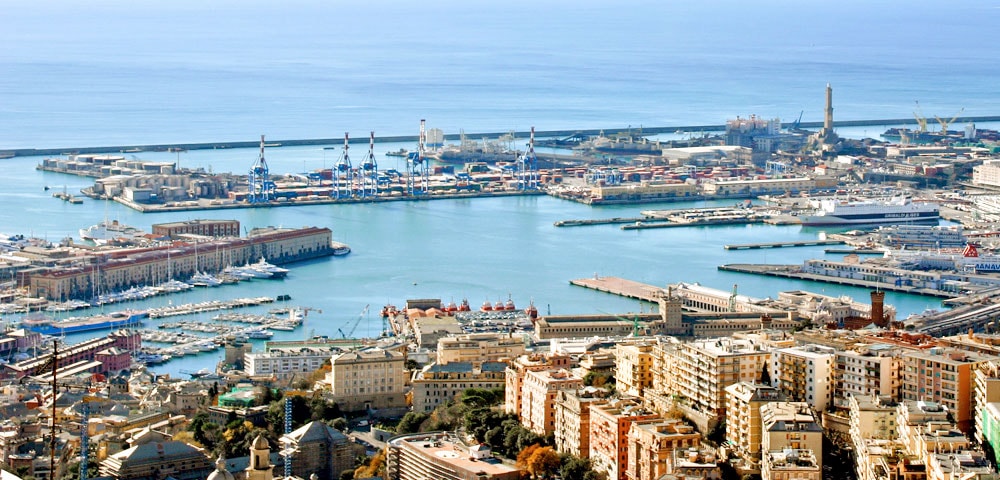
Choosing a berth

All types of berths
Choosing a berth is a topical thought. Never as now, in the light of the recent extraordinary weather events, the issue of boat safety at ports, once taken for granted, has become a primary concern in the mind of boat owners, overshadowing other aspects such as comfort, costs and services.
The question therefore is: which berths are safer and which ones should I choose?
Of course, there’s no universal or unequivocal answer to this question; however, we can help you make a more conscious choice with the illustration of the different types of berths available in the ports, the explanation of mooring methods and some tips.
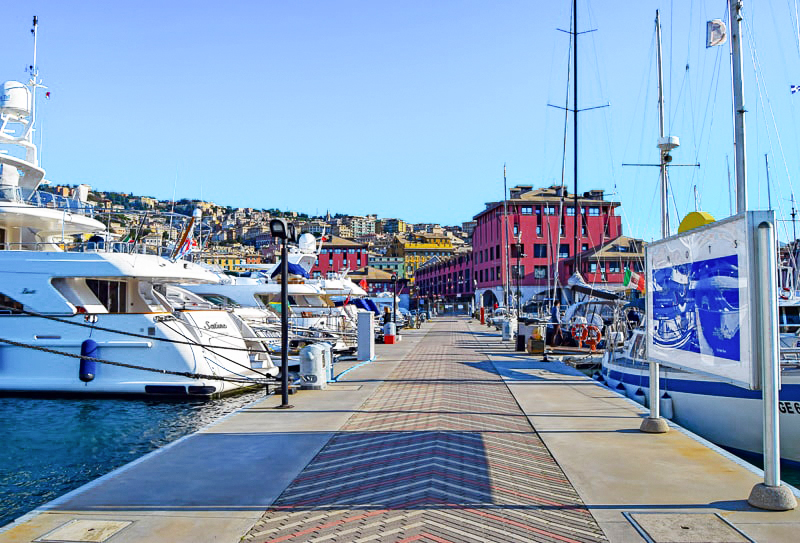
The traditional options offered by ports are represented by berths located alongside a quay. Quays can have sheet pile sections or be floating.
The first are characterized by fixed reinforced concrete support pillars, whose basis, firmly buried in the seabed, develops vertically and supports the walkway alongside which boats will be moored.
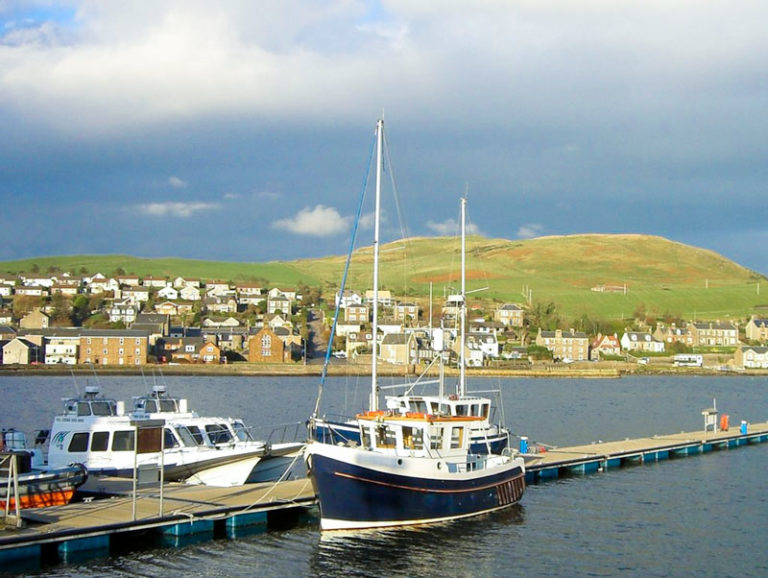
This option is not only the most solid one but also enables big vessels to moor alongside a quay without any problems.
Floating quays, instead, are platforms that float on the water surface. They are held in position by a group of chains fixed to the seabed that should be proportionate to the load of the boats that will dock there. They can be practically installed everywhere because they require no installations on the seabed and, sometimes, are even directly connected to the ground by a walkway. This solution is usually preferred by small and medium-sized boats while bigger vessels often need additional mooring posts in order not to overload the floating structure.

The first are usually used within natural ports without artificial structures. There, boats use a group of relieving ropes secured to concrete blocks that serve as an anchor; this way, bows can follow the natural wind direction. These berths are accessible by land only if you have a means that guarantees transshipment.
Berths alongside dolphins are typical of ports that suffer important tidal ranges, such as the Venice lagoon. Dolphins, arranged in rows, which berths are secured to are simple wooden poles fixed to the seabed. This solution is necessary to make the hull follow tide movements correctly without provoking excessive pressure on mooring lines. The entry between dolphins is difficult for beginners, you have to the get the hang of it since it leaves little margin of error during maneuvers.
Easy maneuvering is another important element to take into account when choosing a berth.
If, for example, we have a berth in Liguria, a region that is statistically subject to north wind, we’d better choose one that exposes the stern towards this wind. This way, we will avoid drifting leeward during the entry and will facilitate both entry and exit.
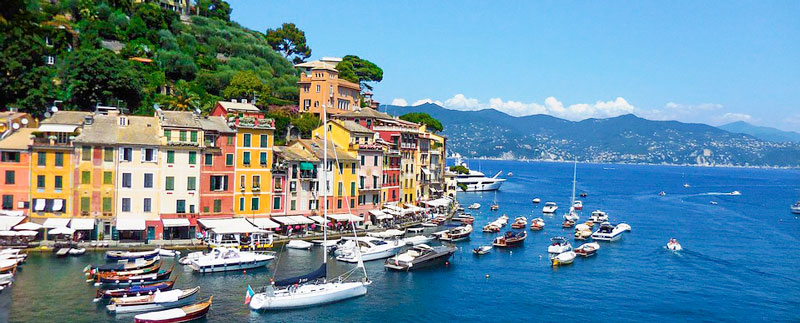
Leave a Reply Cancel reply
Your email address will not be published.
Save my name, email, and website in this browser for the next time I comment.
You might be interested in
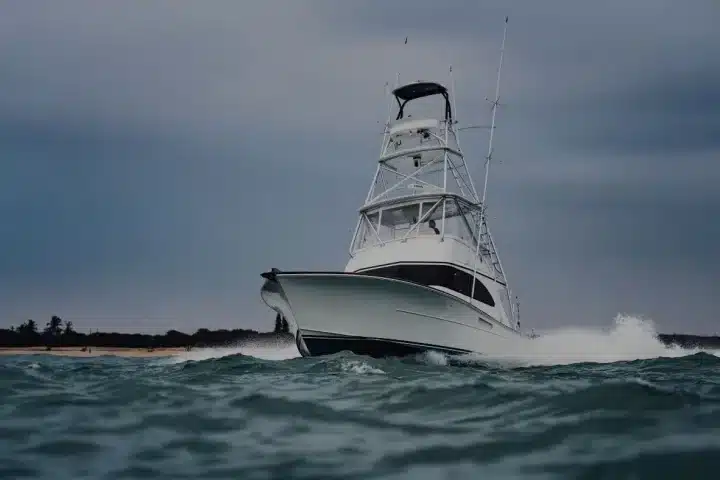
Release Boatworks introduces the new 43 Gameboat: an evolution of performance and style in deep-sea fishing
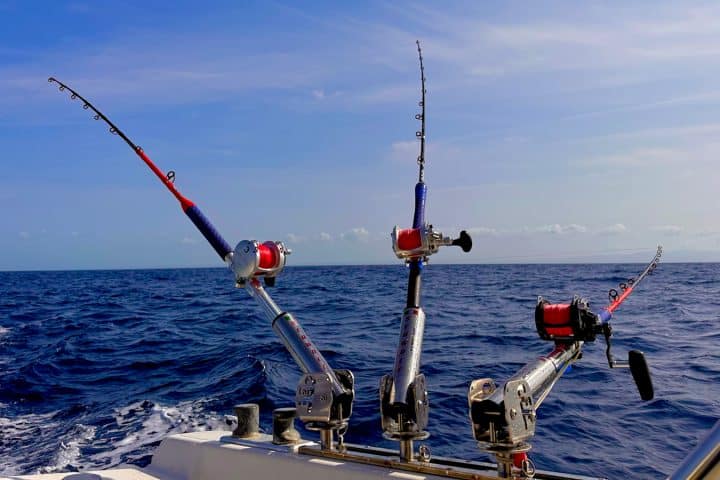
Deep sea trolling in the Mediterranean
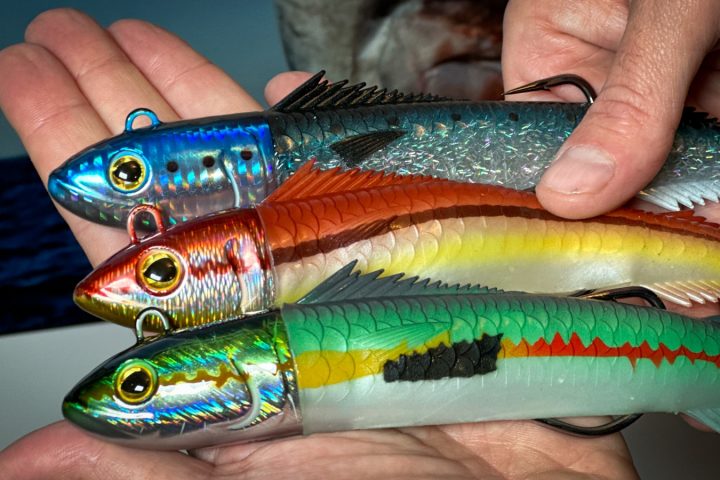
Soft plastic lures for vertical fishing: let’s talk about shads
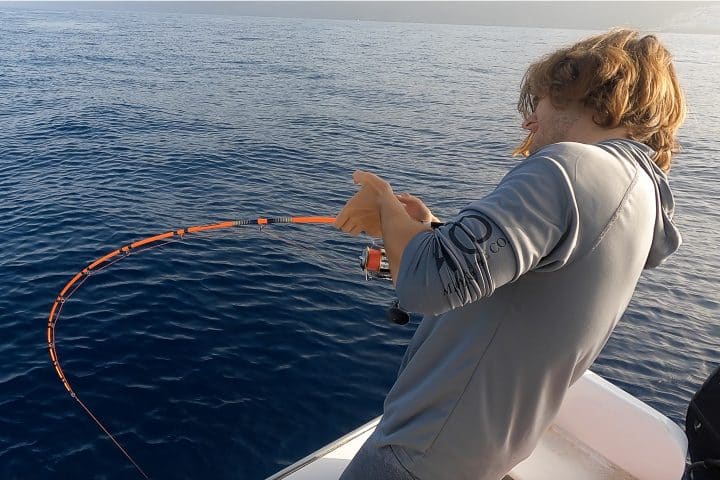
Vertical fishing with soft plastic lures: which rod to choose?
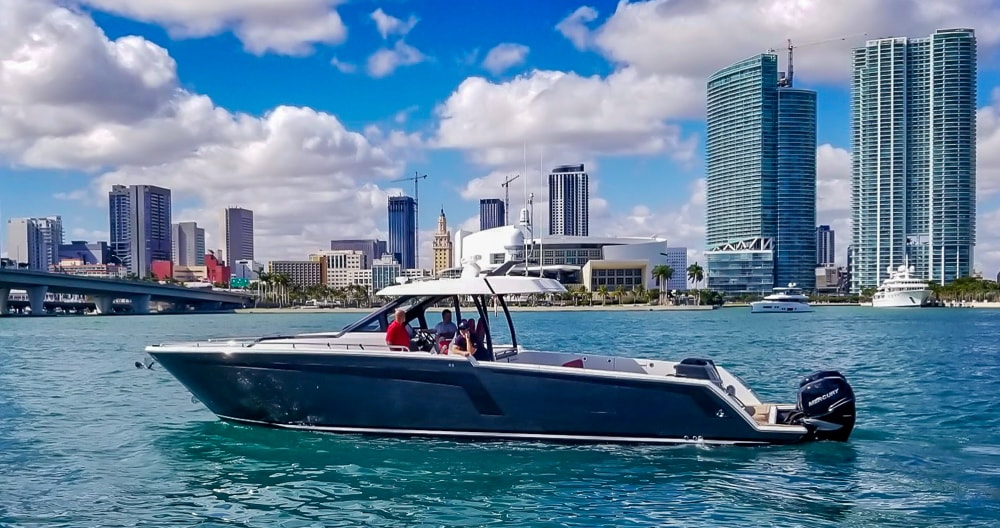
Divergence 45 : sea trial of the first Ocean Alexander luxury open yacht
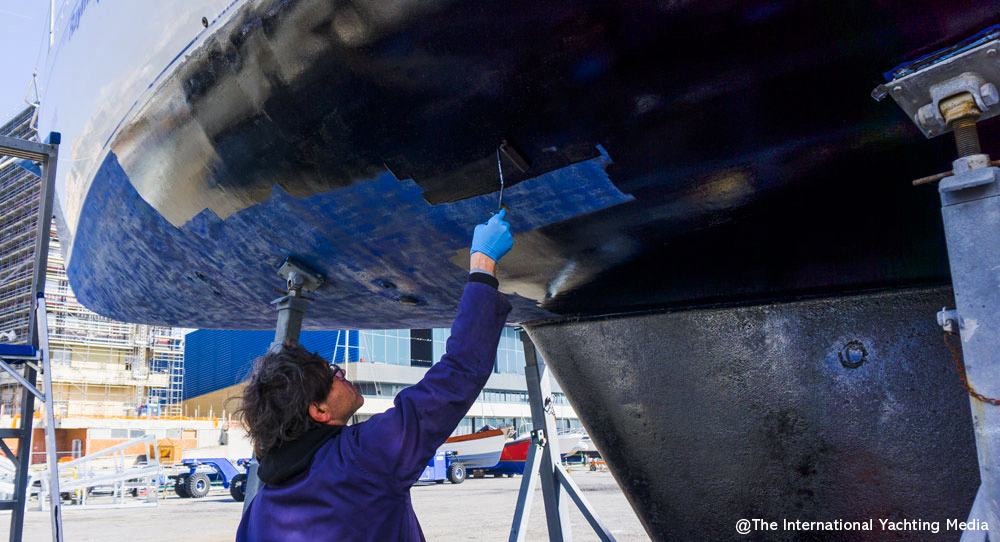
Coverplast Crystal Boat: Test of a revolutionary antifouling paint

To provide the best experiences, we and our partners use technologies like cookies to store and/or access device information. Consenting to these technologies will allow us and our partners to process personal data such as browsing behavior or unique IDs on this site and show (non-) personalized ads. Not consenting or withdrawing consent, may adversely affect certain features and functions.
Click below to consent to the above or make granular choices. Your choices will be applied to this site only. You can change your settings at any time, including withdrawing your consent, by using the toggles on the Cookie Policy, or by clicking on the manage consent button at the bottom of the screen.
Subscribe For Latest Updates
Sign up to receive the best of Yachting News, sea trials, boat review and world premieres .
The only ADVERTISING FREE newsletter
- Cambridge Dictionary +Plus
Meaning of berth in English
Your browser doesn't support HTML5 audio
- bilge water
- boiler room
- superstructure
You can also find related words, phrases, and synonyms in the topics:
- post-landing
berth | American Dictionary
Examples of berth, translations of berth.
Get a quick, free translation!

Word of the Day
a unit for measuring the loudness of sound

Varied and diverse (Talking about differences, Part 1)

Learn more with +Plus
- Recent and Recommended {{#preferredDictionaries}} {{name}} {{/preferredDictionaries}}
- Definitions Clear explanations of natural written and spoken English English Learner’s Dictionary Essential British English Essential American English
- Grammar and thesaurus Usage explanations of natural written and spoken English Grammar Thesaurus
- Pronunciation British and American pronunciations with audio English Pronunciation
- English–Chinese (Simplified) Chinese (Simplified)–English
- English–Chinese (Traditional) Chinese (Traditional)–English
- English–Dutch Dutch–English
- English–French French–English
- English–German German–English
- English–Indonesian Indonesian–English
- English–Italian Italian–English
- English–Japanese Japanese–English
- English–Norwegian Norwegian–English
- English–Polish Polish–English
- English–Portuguese Portuguese–English
- English–Spanish Spanish–English
- English–Swedish Swedish–English
- Dictionary +Plus Word Lists
- English Noun Verb
- American Noun
- Translations
- All translations
To add berth to a word list please sign up or log in.
Add berth to one of your lists below, or create a new one.
{{message}}
Something went wrong.
There was a problem sending your report.
Berthing and Docking: A Comprehensive Guide
by Emma Sullivan | Jul 18, 2023 | Info

Short answer: Berthing and docking
Berthing refers to the process of maneuvering a ship into a designated space at a port or harbor for loading/unloading cargo or passengers. Docking, on the other hand, involves connecting the ship to a fixed structure, such as a pier or jetty. Both processes play crucial roles in maritime operations and require skillful navigation and handling by experienced professionals.
Understanding the Basics: What is Berthing and Docking?
Introduction:
Berthing and docking are essential operations in the maritime industry. They involve the process of bringing a vessel alongside a quay or another vessel for various purposes such as loading/unloading cargo, passenger embarkation/disembarkation, repairs, or refueling. In this blog post, we will explore the basics of berthing and docking, their significance in maritime operations, and some key considerations involved in these processes.
Defining Berthing and Docking:
Berthing refers to the act of bringing a ship to rest at a berth, which is an assigned location along a pier or wharf. It involves maneuvering the ship accurately into position for safe mooring. Docking, on the other hand, involves connecting two vessels together by aligning them side by side. While berthing primarily relates to coming ashore at a quay or jetty, docking typically occurs when vessels need to be attached together while staying afloat.
The Significance of Berthing and Docking:
Efficient berthing and docking operations are critical for ensuring smooth maritime activities. A successful berth allows for safe access to facilities like cargo handling equipment or passenger gangways. It facilitates efficient loading/unloading processes and minimizes idle time for vessels waiting to approach available resources or perform necessary operations.
Docking plays an equally important role when it comes to ship-to-ship activities such as transshipment of cargo between vessels or transferring crew members via gangways. Additionally, docking enables various maintenance tasks that require two ships being temporarily connected side by side.
Key Considerations in Berthing and Docking:
1. Weather Conditions: The most vital consideration during berthing and docking is weather conditions since strong winds, rough seas, or currents can significantly complicate these operations. Skilled pilots must carefully assess prevailing weather conditions before attempting any maneuvers.
2. Vessel Size and Characteristics: The size and specific characteristics of the vessel play a crucial role while planning for berthing or docking. Factors like draft (ship’s depth in the water), beam (width), and maneuverability need to be considered to ensure a successful operation.
3. Port Infrastructure: A well-designed port infrastructure with adequate facilities and navigational aids support smooth berthing and docking operations. Availability of fenders, bollards, mooring lines, tugboats, and other necessary equipment is crucial.
4. Communication and Coordination: Effective communication between the ship’s crew, pilots, port authorities, terminal operators, and other involved parties is essential during berthing and docking maneuvers. Proper coordination ensures that all necessary actions are executed at the right time for a safe arrival.
Conclusion:
Berthing and docking are fundamental processes in maritime operations that require precision, skillful navigation, and coordination. Understanding the basics of these operations helps individuals comprehend their significance within the overall maritime industry. By considering factors like weather conditions, vessel characteristics, port infrastructure, and effective communication, professionals can ensure efficient berths or dockings while minimizing risks associated with these critical procedures.
A Step-by-Step Guide to Berthing and Docking: How to Navigate Safely
Title: A Sailor’s Ultimate Guide to Berthing and Docking: Master the Art of Safe Navigation
Introduction: Berthing a vessel is not just about parking a boat; it requires skill, precision, and a deep understanding of the surrounding elements. Navigating safely while berthing or docking can be challenging for even seasoned sailors. In this comprehensive guide, we will walk you through the crucial steps involved in berthing and docking your vessel safely. So buckle up your life jackets, grab your navigation tools, and let’s set sail on this insightful journey!
1. Assessing the Surroundings: The Key to Smooth Navigation Before approaching any dock or berth, assess and understand the unique characteristics of the environment you are entering. Factors such as current strength, wind direction, depth soundings, tidal conditions, and obstructions may greatly influence your approach strategy.
2. Planning Ahead: Charting Your Course Charting a course before berthing is crucial to avoid potential hazards along the way. Analyze charts thoroughly to identify restricted areas or shallow waters that could impede safe navigation. Consider alternative routes to ensure flexibility in case unforeseen circumstances arise.
3. Ready Your Crew: Communication is King A synchronized crew is essential when approaching a dock or berth safely. Establish clear communication protocols among crew members to relay critical information effectively. Assign specific roles for each crew member during docking maneuvers like line handling, fending off, or maneuvering aids.
4. Speed Control: Slowing Down Without Losing Control As you approach your destination gradually reduce speed using propulsion and gear controls while maintaining control over the vessel’s movements. Slow movements allow for more precise adjustments during intricate docking maneuvers without putting excessive strain on people or structures.
5 Gaining Perspective: Effective Use of Sightlines and Aids Your ability to accurately perceive distances plays a vital role in berthing success. Utilize fixed objects ashore as sightlines references to gauge your boat’s movements and distances. Additionally, rely on aids such as channel markers or buoys to guide you safely into the designated access points.
6. Mind the Wind & Currents: Adjusting Your Approach Wind and current forces can significantly impact berthing maneuvers. Always account for these forces by adjusting your approach angle and reducing speed accordingly. Employ techniques like bow thrusters, propeller walk, or helm adjustments depending on the situation to counteract unwanted movement.
7. Masterful Maneuvering: Different Docking Approaches Docking maneuvers come in various forms, each requiring a specific technique. Whether parallel parking alongside a dock, med-mooring between two boats or engaging with floating pontoons – study and practice different approaches to expand your skillset and adaptability.
8. Lines, Fenders, and Control: Your Safety Nets Correct preparation of lines and fenders is crucial for safe berthing procedures. Ensure sufficient fenders are placed correctly along vulnerable areas of your vessel to protect against potential collisions while optimizing control through proper line deployment (spring lines, breastlines). A well-prepared vessel equates to a safer docking experience.
9. Practice Makes Perfect: Hone Your Berthing Skills Berthing is an art that requires constant practice to develop finesse and confidence. Take advantage of less crowded harbors or marinas during quieter times to polish your skills under varied conditions such as strong currents or tight docking situations.
Conclusion: Navigating safely during berthing and docking maneuvers is an essential skill for any sailor worth their salt. By following this step-by-step guide, you’ll increase your understanding of core principles involved in safe navigation while developing the confidence needed to overcome challenging situations. Remember, patience, practice, and an unwavering focus on safety will transform you into a true master of the docking domain!
Frequently Asked Questions about Berthing and Docking: Expert Answers
Berthing and docking are crucial aspects of marine operations that require precision, expertise, and knowledge. Whether you’re an aspiring sailor or a seasoned mariner, it’s essential to have a solid understanding of the processes involved in safely bringing a vessel into port. In this blog post, we will address frequently asked questions related to berthing and docking, providing expert answers that shed light on these important topics.
Q: What is the difference between berthing and docking? A: While the terms “berthing” and “docking” are often used interchangeably, there is indeed a slight distinction between them. Docking specifically refers to the act of maneuvering a vessel into a designated berth or dock, securing it in place using ropes or lines. On the other hand, berthing can also encompass the entire process leading up to docking – including approaching the dock, navigating through narrow passages or channels, and aligning the vessel for a smooth docking procedure.
Q: How do you assess wind and current conditions when maneuvering a vessel during berthing or docking? A: Assessing wind and current conditions is paramount when handling any marine operation involving berthing or docking. Before initiating your maneuver, pay close attention to flags, weather vanes, ripples on water surfaces, and other indications of wind direction. Similarly, studying tidal charts can provide valuable insights into currents affecting your approach. Adjustments must be made accordingly during maneuvers to counteract or leverage these natural forces.
Q: What are some common challenges faced while berthing or docking? A: Berthing or docking challenges can vary depending on factors such as vessel size, location geometry, weather conditions, crew experience level, etc. However, some common hurdles include limited maneuverability caused by tight spaces or congested harbors – requiring exceptional ship-handling skill to navigate safely without causing damage. Additional obstacles may include gusty winds, strong currents, poor visibility due to fog or adverse weather, and the presence of other vessels sharing the same vicinity.
Q: What techniques are commonly used for berthing and docking? A: There is no one-size-fits-all approach when it comes to berthing and docking techniques. Experienced mariners often rely on a combination of methods based on vessel characteristics and environmental factors. Some popular techniques include utilizing tug assistance, stern-first or bow-first berthings depending on wind conditions, employing thrusters for better maneuverability, using spring lines to control lateral movements, and implementing slow-ahead or dead-slow speeds for increased precision.
Q: Are there any specialized technologies available for assistance during berthing or docking? A: Yes, advancements in technology have paved the way for specialized tools that can greatly aid in berthing or docking operations. These include but are not limited to:
1. Bow thrusters: These auxiliary propulsion systems provide side-to-side thrust, assisting in precise positioning while navigating tight spaces. 2. Docking cameras: Strategically placed cameras feed live video footage to bridge consoles, enhancing visibility during challenging maneuvers. 3. Automated docking systems: Utilizing sensors and computer algorithms, these systems assist in autonomously guiding vessels during the delicate process of docking. 4. Virtual reality simulators: Offer safe training environments where crews can practice various docking scenarios without risking real-world accidents.
In conclusion, mastering the art of berthing and docking requires a blend of theoretical knowledge and hands-on experience. By understanding essential principles and having access to innovative technologies designed to simplify these operations, mariners can safely navigate through harbors worldwide with confidence and expertise. So next time you observe an impressive dockside maneuver, remember – behind it lies a skillful captain armed with knowledge answering these frequently asked questions about berthing and docking!
The Importance of Proper Technique in Berthing and Docking
Berthing and docking, although seemingly routine aspects of maritime operations, are crucial maneuvers that demand careful attention to detail. The significance of employing proper technique cannot be understated, as it not only ensures the safety of the vessel and its crew but also prevents potential damage to ports and other vessels. In this blog post, we will delve into the importance of proper berthing and docking techniques, highlighting their professional, witty, and clever aspects along the way.
1. Safety First: Just as a misstep in dance can result in a dancer’s fall, an error during berthing or docking can lead to disastrous consequences. By adhering to established guidelines and employing proper technique, maritime professionals safeguard against accidents that could harm both people and property. The witty twist here lies in imagining a ship attempting an ill-fated pirouette instead of executing a well-choreographed docking maneuver.
2. Protecting Ports: Ports act as vital gateways for trade and commerce worldwide. A single mistake during berthing or docking can inflict expensive damage upon port infrastructure such as piers or navigational aids. Proper technique ensures ships approach these structures with precision – like expert architects drawing lines on blueprints – minimizing the risk of substantial repair costs for port authorities.
3. Avoiding Collisions: Imagine a bustling parking lot where vehicles maneuver erratically without following traffic rules; chaos would ensue! Similarly, improper berthing and docking techniques pose significant collision risks for vessels sharing congested waterways or ports. Employing wit here by comparing these scenarios, we emphasize how correct technique ensures smooth “traffic flow” amongst ships rather than creating a frenzied nautical free-for-all!
4. Preventing Damage: Docking mishaps not only endanger oncoming vessels but also pose threats to the docked vessel itself. Incorrectly aligned approaches or excessive speed while berthing may lead to damaging collisions with mooring structures or other ships already docked nearby. By highlighting such potential risks with clever analogies – perhaps likening it to a car attempting to parallel park at full speed – we emphasize the importance of well-executed technique in securing safe docking.
5. Efficient Operations: Time is money, and this adage holds true in maritime operations as well. Proper berthing and docking techniques facilitate efficient offloading and loading processes, saving precious minutes or even hours that would otherwise be wasted rectifying botched maneuvers. Cleverly relating this efficiency to that of a seasoned chef skillfully chopping ingredients for a culinary masterpiece helps underline how expert maritime technique yields impressive time savings.
6. Crew Confidence: Professionalism exudes from individuals who demonstrate expertise in their respective fields. The crew handling berthing and docking with finesse and deftness not only earns admiration among peers but also instills confidence in passengers, clients, and stakeholders alike. By employing wit to envision an awe-inspiring display akin to an acrobatic performance on water, we underscore the significance of mastering proper technique for boosting crew morale and public trust.
In conclusion, the vital nature of proper technique in berthing and docking demands our utmost attention. From ensuring safety to protecting ports, preventing collisions, avoiding damage, promoting efficient operations, and bolstering crew confidence – each aspect contributes to the overall professionalism required in maritime operations. Embracing witty analogies allows for engaging explanations that foster better understanding while emphasizing the foolproof nature of adhering strictly to established guidelines during these critical maneuvers at sea.
Advanced Tips for Mastering the Art of Berthing and Docking
Docking a vessel can be a challenging task that requires precision, skill, and experience. It is no wonder that mastering the art of berthing and docking is considered an advanced skill in the world of boating. In this blog post, we will explore some expert tips to help you become a pro at docking your boat with finesse and confidence.
1. Understand Your Boat: Every vessel behaves differently when berthing and docking, so it is crucial to familiarize yourself with your boat’s handling characteristics. Pay attention to how your boat responds to various steering inputs and propulsion adjustments in different wind and current conditions. This knowledge will help you anticipate how your boat will react during the docking process.
2. Plan Ahead: Before approaching the dock, take the time to plan your approach carefully. Consider factors such as wind direction, current strength, water depth, obstructions in the area, and available dock space. Having a clear plan in mind will make executing the maneuver much smoother.
3. Use Spring Lines: Spring lines are essential tools for skilled berthing and docking maneuvers. These lines are attached from points on the boat’s bow or stern to fixed cleats on the dock at angles of approximately 45 degrees or greater. By adjusting tension on these lines strategically, you can control both lateral movement (sideways) and longitudinal movement (forward/backward) of your boat while berthing or departing from a dock.
4. Utilize Fenders: Fenders serve as cushions between your boat and other objects such as pilings or other boats during docking maneuvers. Properly positioning fenders along the side of your vessel facing potential contact points can protect both your boat’s integrity and prevent unnecessary damage during close-quarters maneuvers.
5. Communicate Effectively: If you have crew members assisting you during docking procedures, establishing clear communication protocols is vital for success. Develop standard hand signals or radio phrases that everyone understands to avoid confusion or misunderstandings in the heat of the moment.
6. Practice in Different Conditions: Berthing and docking skills can vary significantly depending on factors like wind, current, and the size of your vessel. It is crucial to practice in various weather conditions and different docking scenarios to build up your confidence and adaptability. The more comfortable you become with differing circumstances, the better prepared you will be when facing unexpected challenges.
7. Be Mindful of Propellers: One common mistake made during docking is failing to account for the direction and proximity of propellers while maneuvering close to other boats or structures. Always ensure that you have enough clearance for your boat’s propeller(s) or use alternative propulsion methods such as paddles or electric engines if necessary.
8. Seek Professional Guidance: If you feel uncertain about any aspect of berthing and docking, consider seeking guidance from experienced boaters or professional instructors. They can provide invaluable tips specific to your boat type, help fine-tune your technique, and offer personalized advice based on their extensive knowledge.
Mastering the art of berthing and docking requires a combination of technical skill, situational awareness, and adaptability. By following these advanced tips, you can enhance your abilities and dock your boat with confidence in even the most challenging environments. Remember that practice makes perfect, so don’t shy away from refining your skills regularly – soon enough, you’ll be admired as a true master at maneuvering any vessel into its berth!
Common Mistakes to Avoid When Berthing and Docking
Berthing and docking may seem like routine tasks for experienced boaters, but even the most seasoned captains can make mistakes that can lead to accidents or damage to their vessels. To help you navigate these potentially precarious situations successfully, we’ve compiled a list of common mistakes to avoid when berthing and docking. By keeping these tips in mind, you’ll enhance your skills, confidence, and seamless navigation abilities.
1. Ignoring Weather Conditions: One of the gravest errors boaters often make is underestimating the impact of weather conditions on berthing and docking maneuvers. Always check the forecast before heading out and keep in mind that strong winds, tides, or currents can greatly affect your approach. Failing to consider these factors could lead to inexperienced handling or poor judgment during critical moments.
2. Misjudging Speed: When it comes to smoothly entering a berth or approaching a dock, speed is crucial. Many boaters misjudge their speed or fail to adapt it according to water conditions and proximity to other boats or structures. Remember that excessive speed increases the risk of collisions or damaging contact with other vessels.
3. Poor Communication: Clear communication is essential among crew members during berthing and docking procedures. Misunderstandings can quickly escalate into dangerous situations if roles are not clearly assigned or if communication lines break down at critical moments. Ensure that everyone on board understands their responsibilities and establish clear signals for commands beforehand.
4. Insufficient Preparation: Berthing requires careful preparation both mentally and physically. Skimping on preparation often leads to erratic maneuvers or indecisiveness when attempting tricky berths or navigating crowded marinas. Familiarize yourself with the layout of your destination beforehand so you’re aware of potential challenges.
5. Overconfidence: Experienced sailors may fall victim to overconfidence from time to time – a dangerous mistake when it comes to berthing and docking procedures requiring precision control. Cockiness can result in complacency, leading to hasty decisions or neglecting proper safety precautions. Stay humble and approach each docking situation with a fresh mindset, no matter how many times you’ve successfully docked in the past.
6. Lack of Practice: Docking is a skill that requires frequent practice to maintain proficiency. A mistake boaters often make is assuming that previous experience alone will ensure smooth berths every time. Without regular practice, your reflexes and spatial awareness can dull over time, potentially leading to costly mistakes or accidents when you least expect them.
7. Neglecting Equipment Checks: Before berthing or docking, it’s crucial to ensure your boat’s equipment is in optimal condition. Failing to check your lines, fenders, cleats, or any other components necessary for safe mooring may result in preventable damage or leave you unprepared for unexpected difficulties during the maneuver.
8. Lack of Patience: Berthing and docking require patience; rushing through the process increases the likelihood of errors leading to unfortunate consequences. Take your time to assess your surroundings, plan your approach carefully, and execute maneuvers smoothly.
9. Failure to Seek Assistance: There is no shame in seeking assistance if uncertainty arises during a berthing or docking attempt—especially in challenging circumstances such as strong currents or crowded docks. Don’t hesitate to ask for help from fellow boaters or marina staff if needed; their expertise can prevent potential mishaps.
By avoiding these common mistakes and remaining vigilant throughout berthing and docking procedures, you’ll significantly enhance both safety measures and overall enjoyment on the water. So remember: Think ahead, stay focused, communicate effectively- success awaits at the berth!
Recent Posts

- Sailboat Gear and Equipment
- Sailboat Lifestyle
- Sailboat Maintenance
- Sailboat Racing
- Sailboat Tips and Tricks
- Sailboat Types
- Sailing Adventures
- Sailing Destinations
- Sailing Safety
- Sailing Techniques

What Is a Lower Berth on a Cruise Ship?
By Anna Duncan
A lower berth on a cruise ship is a type of sleeping accommodation that is located in the lower levels of the ship. Typically, these cabins are located in the hull of the vessel and offer a more economical option for travelers who are looking for a place to relax and sleep during their cruise.
Lower berth cabins on a cruise ship can range in size from small single cabins to larger family suites. Most of them have basic amenities such as beds, televisions, air conditioning and private bathrooms.
Some may also include balconies or other extras such as mini-fridges or coffee makers. Despite their often-modest size, these cabins are comfortable and provide travelers with an ideal way to get some rest while on their voyage.
The cost of lower berths can vary greatly depending on the cruise line, duration of the trip and other factors. Generally speaking, these types of cabins will be cheaper than their counterparts located in the upper decks. This makes them an excellent option for budget-conscious travelers who want to save money but still enjoy all that cruising has to offer.
Aside from offering accommodations at a more affordable rate than those found on higher decks, lower berths also provide guests with certain advantages that they may not find elsewhere on the ship. These include improved soundproofing from outside noise, greater privacy due to their location away from the hustle and bustle of upper decks, and better ventilation due to an often-larger air flow space.
Conclusion:
In conclusion, lower berths on a cruise ship offer guests an economical way to enjoy some much needed rest while traveling at sea. These cabins come with basic amenities such as beds, televisions and air conditioning as well as extra features like balconies or mini fridges.
7 Related Question Answers Found
What is the lowest position on a cruise ship, what is the smallest room on a cruise ship, what is below the water on a cruise ship, how much of cruise ship is below water, what is the lowest salary on a cruise ship, how much of a cruise ship is below water, how much of a cruise ship is below the water, backpacking - budget travel - business travel - cruise ship - vacation - tourism - resort - cruise - road trip - destination wedding - tourist destination - best places, london - madrid - paris - prague - dubai - barcelona - rome.
© 2024 LuxuryTraveldiva

Port Canaveral announces plans for new north side cruise terminal at cargo berth site
Port Canaveral 's massive cruise operations will be getting even bigger, as port officials announced plans Thursday to build a new cruise terminal at the site of one of its existing north side cargo berths.
Port Canaveral CEO John Murray said the port will convert the current North Cargo Berth 8 area into a cruise terminal and parking garage to help accommodate new cruise ships joining the port's lineup. The new cruise terminal would open in the summer of 2026.
Murray said the port's plan to repurpose the existing cargo berth provides significant savings, flexibility and an expedited construction timeline of about two years. He said this is the fastest way to get a new cruise terminal up and running.
Start the day smarter. Get all the news you need in your inbox each morning.
The new terminal will be able to accommodate the largest ships in the world, across a spectrum of brands.
Murray said the new cruise terminal ― if fully utilized by large cruise ships ― could represent $40 million a year in cruise line and cruise parking revenue for the port.
Murray said the port needs to put the north side cruise terminal online quickly so the port does not lose business to another Florida or out-of-state port. That could have happened if the port did not have dock space to accommodate cruise ships on certain days.
"Our six terminals are operating at maximum utilization, in several cases," Murray said.
Murray said the port is still developing cost estimates for the cruise terminal project. He said the construction cost will be paid for out of port revenue from its cruise, cargo and other operations.
South side cruise terminal plan: Port Canaveral has plan to shift marinas to make way for new cruise terminal
The port's announcement will push back — but not eliminate — the port's previously announced plans to build a $175 million south side cruise terminal and parking garage at the current site of Bluepoints Marina . Under those plans, the marina operation would move elsewhere at the port before the cruise terminal opens.
The new south side cruise terminal originally was projected to open in late-2026 or 2027. But Murray said he now is moving that time frame back to 2030 or later, as the port takes more time to plan the redevelopment of its south side Marina District, including to accommodate commercial fishing operations in that area of the port. Plans called for that terminal to be used by multiple cruise lines, and to have a 1,400-foot-long berth space.
Handling 'cruise partner needs'
In discussing plans for the new north side cruise terminal, Murray said: “We have cruise partners with immediate needs to locate assets in Florida, and Port Canaveral is where they want to be. Our ability to efficiently bring a new cruise terminal online was key to retaining and growing this important business segment that supports many jobs and delivers high value to our regional and state economy.”
Murray said the new north side terminal will serve multiple cruise lines, but did not release details on the cruise lines and ships that will use the terminal. He said more information about additional cruise ships basing at Port Canaveral could be announced in the coming weeks.
The timeline for design, engineering and construction of the north side terminal is in development, with the planned opening in the summer of 2026.
Canaveral Port Authority Vice Chair Wayne Justice said the new north side terminal is expected to be smaller than some other terminals the port has built in recent years, thus reducing costs. That's because there is less of a need for large passenger waiting areas, because of the efficient facial-recognition technology that speeds up passenger processing on and off ships.
Canaveral Port Authority Chair Micah Loyd said the new cruise terminal and the business it will deliver "builds on our board’s commitment to the economic prosperity of our port community. This proactive, business-oriented strategy reaffirms our commitment to ensure the state of Florida continues to prosper from cruise tourism and remains the ‘Cruise Capital of the World.’ ”
Port Canaveral is the world's second-busiest cruise port, based on passenger volume, trailing only Miami's port. It had 16 home-ported ships in the winter of 2023-24, and expects to have 19 in the winter of 2024-25, Murray said.
Cruise terminal project details
Murray said Port Canaveral's new north side terminal campus will include a multiple-story parking garage to accommodate up to 3,000 vehicles, initially with more than 2,500 spaces.
The project also will include roadway improvements in and out of the new facility, including turning lanes and a “flyover” ramp directly connecting the site with State Road 401. That will help address traffic concerns.
Port Canaveral’s existing North Cargo Berth 8 shares its basin with the port’s Cruise Terminal 5 on the port's north side. The North 8 berth will require minimal modifications to extend its current 1,020-foot-long bulkhead to 1,344 feet to accommodate large cruise vessels. The berth was designed and built in 2018 for multipurpose flexibility.
The addition of the new cruise terminal "gives us a lot of options," Murray said, including the flexibility to shift cruise ships now at other terminals for greater efficiency.
Murray said the addition of a north side cruise terminal ― which does not yet have a number designation ― allows the port to handle expected cruise line demand through 2030 or later without the need for the opening of the south side Cruise Terminal 4.
He said it will create is a "once-in-a-generation opportunity" to take more time to redevelop the Marina District and do it right, including determining which tenant leases to renew and not renew as they expire in the next few years. He emphasized that accommodating the port's commercial fishing operations would be a priority.
"It takes the pressure off," related to planning and decision-making, Murray said.
Murray said the timeline for development of the south side Cruise Terminal 4 will depend on future demand from cruise lines for more cruise terminal slots at the port. He said demand for departure slots on Mondays, Fridays and Saturdays already is high.
Murray said North Cargo Berth 8 is not heavily used by cargo companies, as other nearby terminals are newer and have more flexibility for cargo operations.
North Cargo Berth 8 now is used by SpaceX for booster recovery ships between missions. But Murray said the port has other north side cargo berths that SpaceX could use instead for that, and they would be in a more efficient location in relation to SpaceX's other operations.
Additionally, waterside improvements to the north side of the shared basin will extend and improve the berthing capacity of Cruise Terminal 5. The project, for example, will add 150 feet of length to Cruise Terminal 5, allowing that terminal to accommodate larger ships.
Murray said the North 8 location, current berth configuration and vacant uplands affords the opportunity for minimal disruption to current port and tenant operations during construction.
Dave Berman is business editor at FLORIDA TODAY. Contact Berman at [email protected] , on X at @bydaveberman and on Facebook at www.facebook.com/dave.berman.54
This article originally appeared on Florida Today: Port Canaveral announces plans for new north side cruise terminal at cargo berth site


IMAGES
COMMENTS
Berth Meaning: Beds on a Cruise Ship or in a Cruise Cabin. During the booking phase of a cruise, though, you may encounter the term as it refers to beds. Most cruise lines now refer to all beds as ...
A berth is simply the type of bed that can be found in cabins on a cruise ship. Berths come in different types and sizes, and can range from single beds to bunk beds, pull-out sofa beds, and even full-sized queen or king-sized beds. Depending on the type of room you choose, the bed may also include additional features such as storage space ...
Fourth Meaning - Pier or Dock. Containers. Men controlling number of container on dock. Aerial view. The most common meaning of the word 'berth' is a pier or dock, which is the point where a ship ties up. Take car parking, for instance. Every car has a parking spot, so the berth of a ship is the place where it is parked.
Wake. A ship's wake is the visible trail of disturbed water that is left behind a moving vessel as it travels through the water. Wake views are some of the most desirable on a cruise ship, often with aft-located bars and lounges to admire the views. 16. Knot. A knot is a unit of speed at which ships travel.
Berth Definition: A berth signifies the actual sleeping area within a cabin on a cruise ship, indicating the number of beds present for passengers. Cabin Significance : The term 'cabin' encompasses the entire room or accommodation space on a ship, which includes not only the berths but also other amenities and facilities.
By Anna Duncan. A berth on a cruise ship is a cabin that passengers occupy during the voyage. Berths come in many different shapes, sizes, and types. Some berths are located on the inside of the ship, while others are found on the outside of the vessel. The size and amenities available in each berth vary by cruise line and vessel type.
A berth in a cruise ship is a bed or sleeping area for passengers. Berths are typically located in the ship's cabins, which may be single occupancy or shared depending on the type of cruise package chosen. ... Cruise ships often feature additional comforts for berths, including special reading lights, power outlets for electronic devices and ...
A booze cruise is the term for a cruise, typically only a few days long, that features free or low-cost alcohol and where the vibe is all about partying and drinking both on the ship and in port. bow. Bow is the front or forward section of a ship. (The rear section of a ship is the stern.) calving.
Pinterest. Boating seems like another world sometimes and we want to help with providing you with an essential guide to over 110 cruise ship terms and commonly used boating jargon. This is most helpful if it's your first time at sea or you haven't been in a while and need a refresher. There's a million terms we won't get into here.
Definition and Purpose of an Upper Berth. The upper berth on a cruise ship serves as a cozy space for passengers to retreat to after a day of exploring the ship's amenities and activities. It is one of the sleeping arrangements available on board, typically found in cabins with limited space.
The ship and nautical terms. Aft: The rear (stern) area of the ship. When you select a cabin, you can pick one in that's aft, midship or forward. Atrium: The splashy main entrance and lobby of the ship. If you sail Norwegian Cruise Line, you may know this spot as the Centrum. The atrium aboard Norwegian Star.
Contents show. The berthing of a ship is the process of bringing a vessel to a designated location, such as a quay, wharf, pier or jetty, and securing it in place. The location where a ship is berthed is known as a "berth.". A ship can be berthed port or starboard side on or bow or stem on. The term "berth" also refers to the specific ...
New Cumberland,PA, USA. #4. Posted May 6, 2018. Upper and Lower Berths are old terms that apply to the location of beds. Lower Berths are on the floor (deck) while "Upper" Berths are above. On modern cruise ships some cabins will have 1 or 2 uppers berths which either fold out of the wall (bulkhead) or drop down from the ceiling.
berth: [noun] sufficient distance for maneuvering a ship. an amount of distance maintained for safety.
Knots: Knots are a unit of speed used by ships and are short for nautical miles per hour. One knot is equivalent to 1.15 land miles per hour. Cruise ships have cruising speeds of around 22 knots.. Provisions: Refers to supplies needed on the ship Lock: A device used to raise and lower ships between stretches of water at different levels. Zodiacs: Small inflatable boats used for water bases ...
BERTH meaning: 1. a bed in a boat, train, etc., or a place for a ship or boat to stay in a port: 2. If a ship or…. Learn more.
By Michael Ferguson. Upper Berths on a Cruise Ship are cabins located on the upper deck of a ship, usually above the Main Deck. They provide passengers with an elevated view of the ocean and ports of call while they're at sea. Upper Berths typically have larger windows than lower cabins, allowing for more natural light and breathtaking views.
Cruise home ports. As the name suggests, these ports specialise in dealing with cruise ships. ... The speed of this process will depend upon the size of the vessel and the configuration of the pumps, both on the ship and on the berth. The process is further complicated by the need to either add or remove ballast, as the cargo is unloaded or ...
Choosing a berth is a topical thought. Never as now, in the light of the recent extraordinary weather events, the issue of boat safety at ports, once taken for granted, has become a primary concern in the mind of boat owners, overshadowing other aspects such as comfort, costs and services. The question therefore is: which berths are safer and ...
BERTH definition: 1. a bed in a boat, train, etc., or a place for a ship or boat to stay in a port: 2. If a ship or…. Learn more.
Defining Berthing and Docking: Berthing refers to the act of bringing a ship to rest at a berth, which is an assigned location along a pier or wharf. It involves maneuvering the ship accurately into position for safe mooring. Docking, on the other hand, involves connecting two vessels together by aligning them side by side.
Berth is the term used in ports and harbors for a designated location where a vessel may be moored, usually for the purposes of loading and unloading. Berths are designated by the management of a facility (e.g., port authority, harbor master). Vessels are assigned to berths by these authorities. Most berths are alongside a quay or a jetty ...
The North 8 berth was built in 2018 and will require an extension to accommodate larger cruise ships. Terminal construction is expected to mean minimal disruption to current port operations due to ...
The ship capable of accommodating approximately 7,000 passengers will be operating twice-weekly short cruises to the Bahamas and represents the latest in a growing list of new ships at the port ...
A lower berth on a cruise ship is a type of sleeping accommodation that is located in the lower levels of the ship. Typically, these cabins are located in the hull of the vessel and offer a more economical option for travelers who are looking for a place to relax and sleep during their cruise. Lower berth cabins on a cruise ship can range in ...
The North 8 berth will require minimal modifications to extend its current 1,020-foot-long bulkhead to 1,344 feet to accommodate large cruise vessels. The berth was designed and built in 2018 for ...
The new terminal at 9155 Charles Rowland Drive — which is in the North 8 berth section of the port — will share its basin with the port's Cruise Terminal 5 on the north side of Port ...